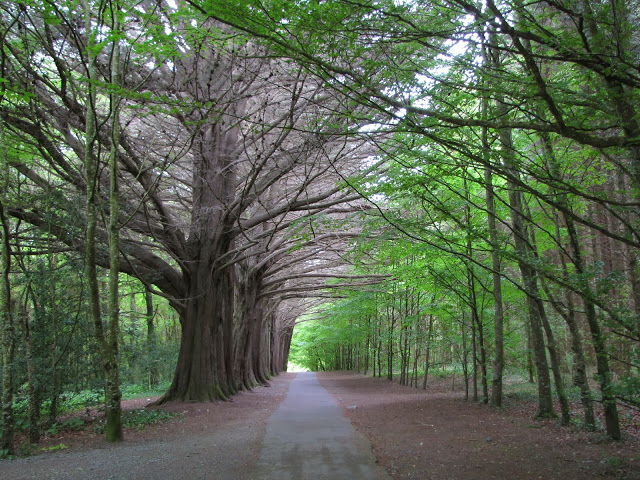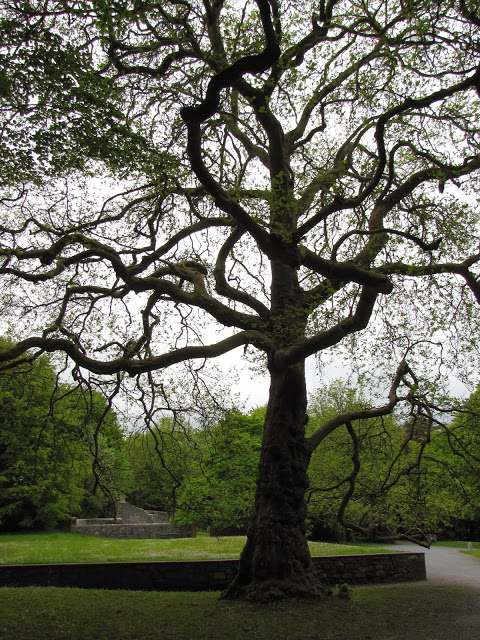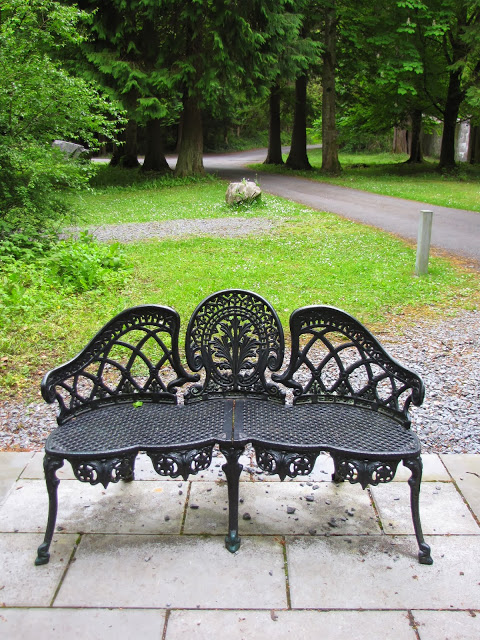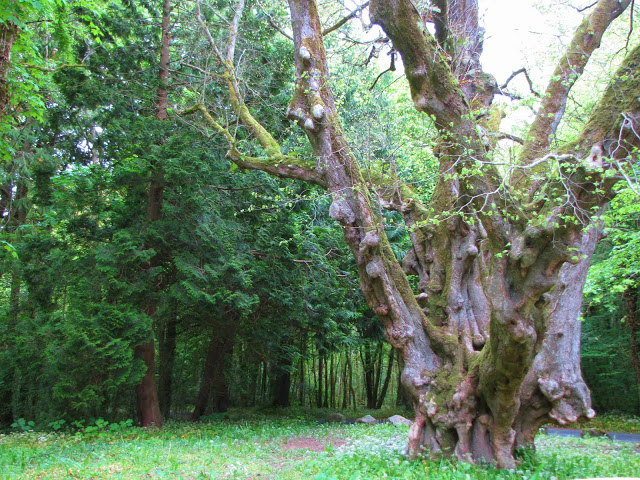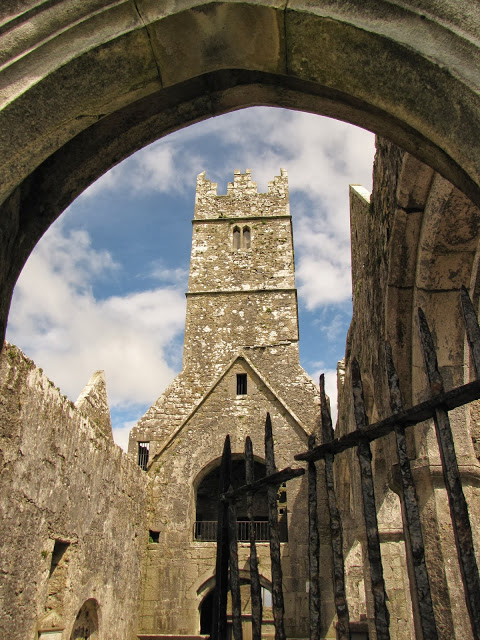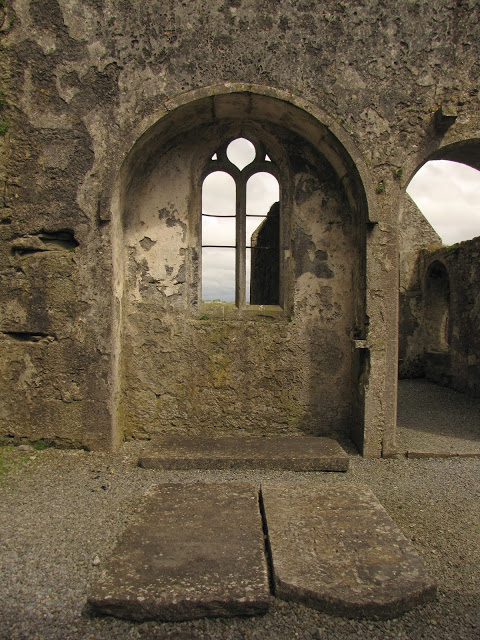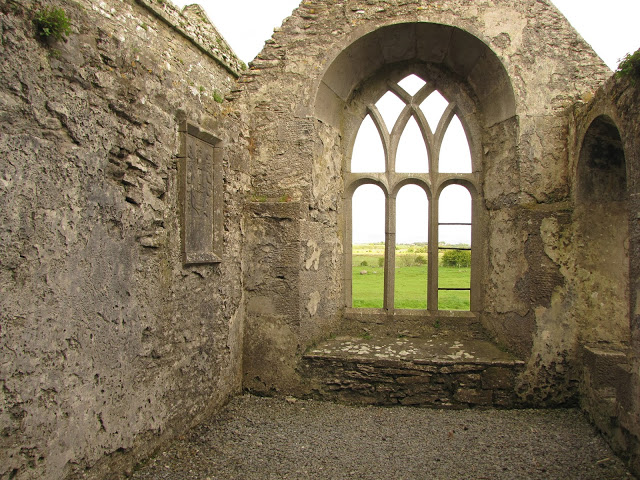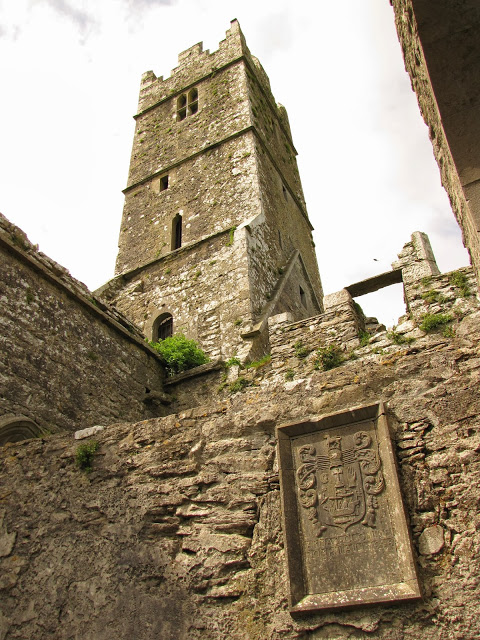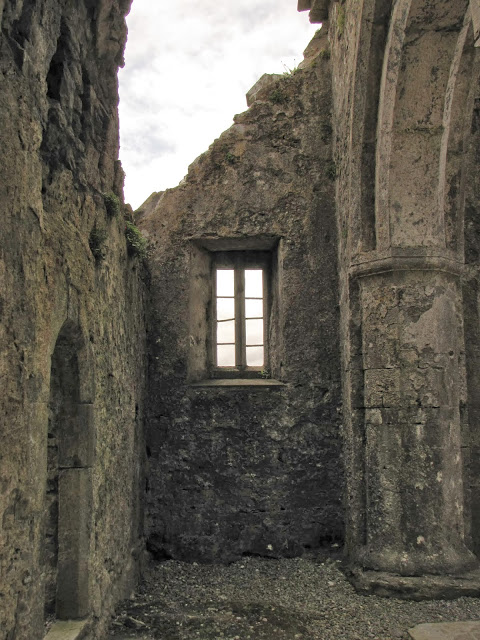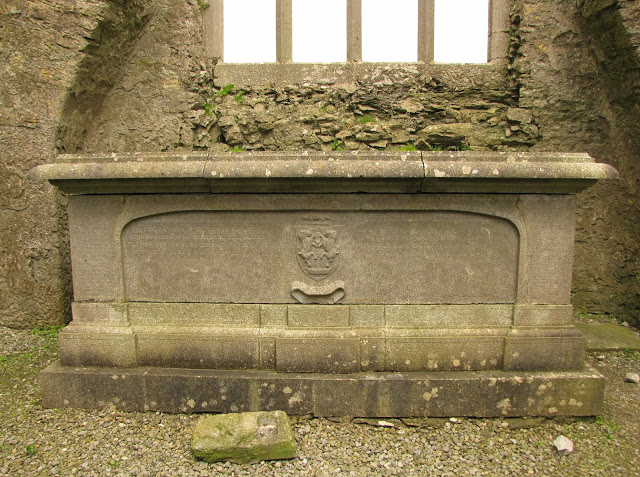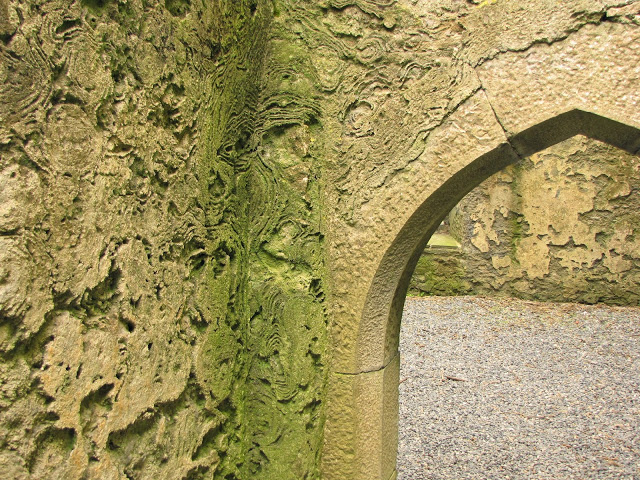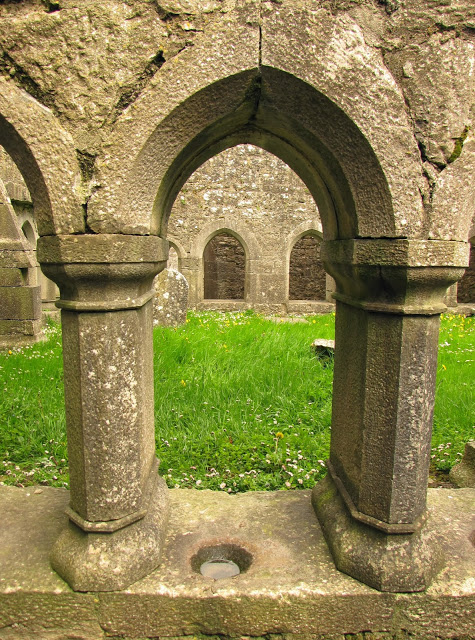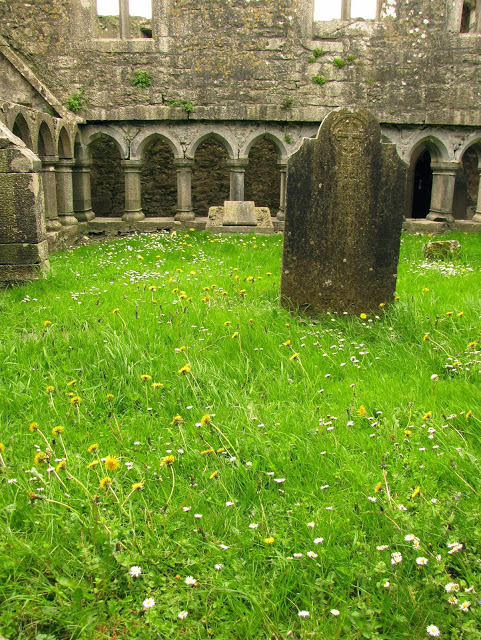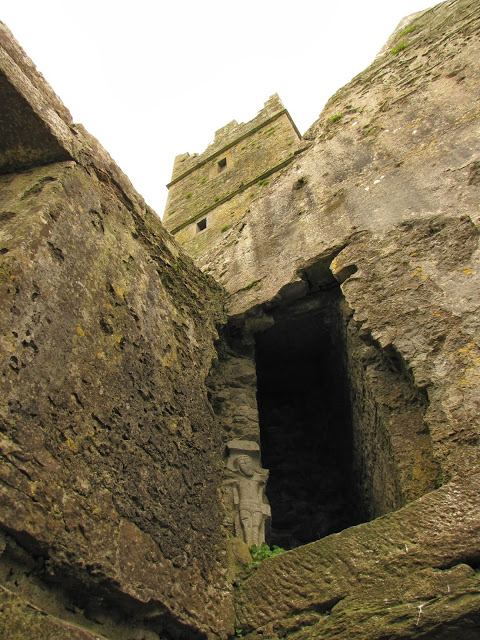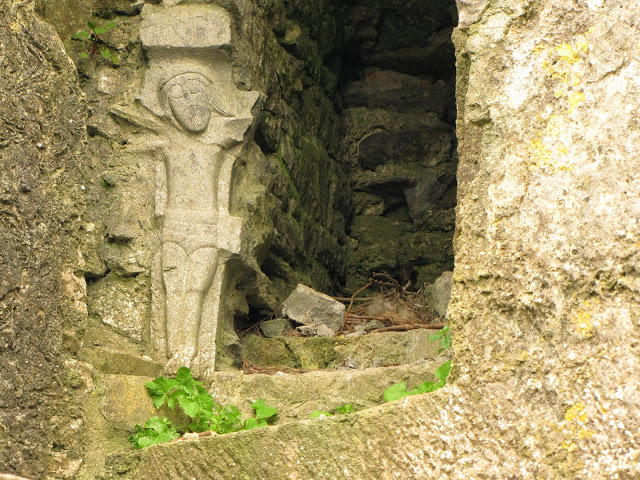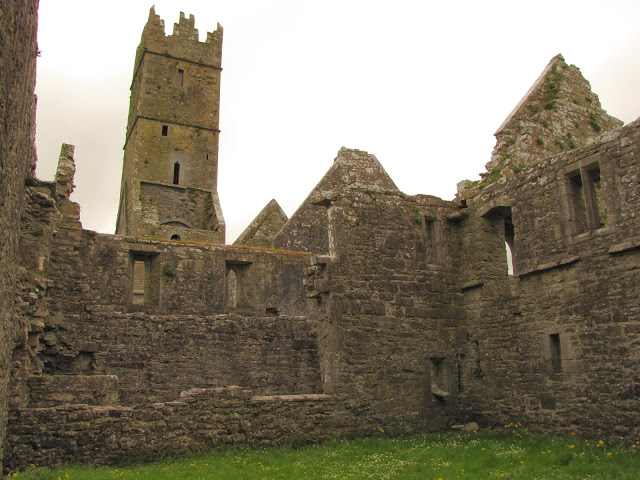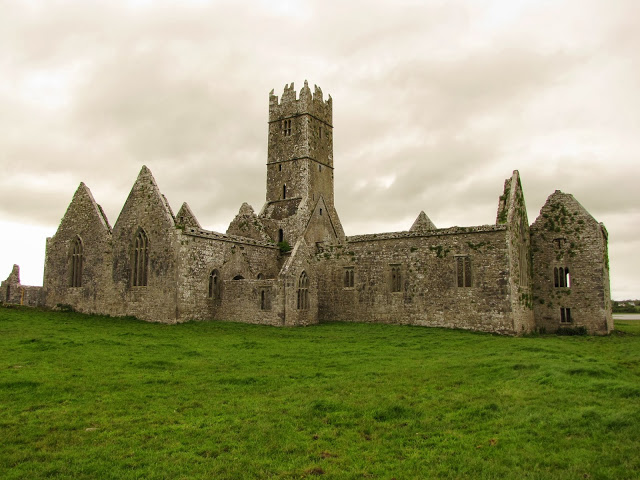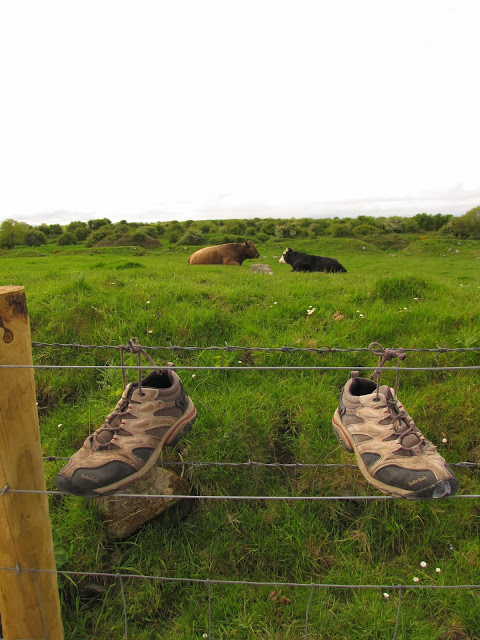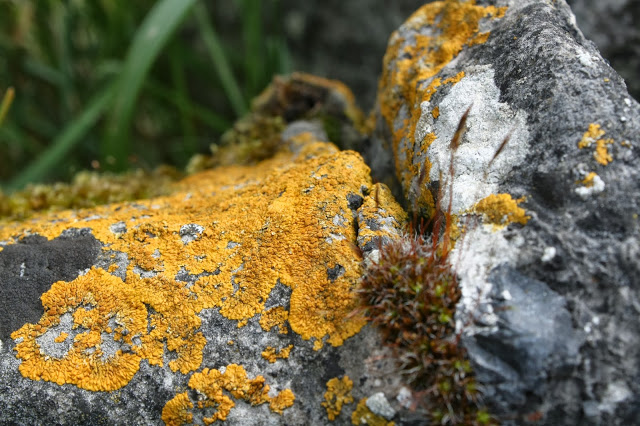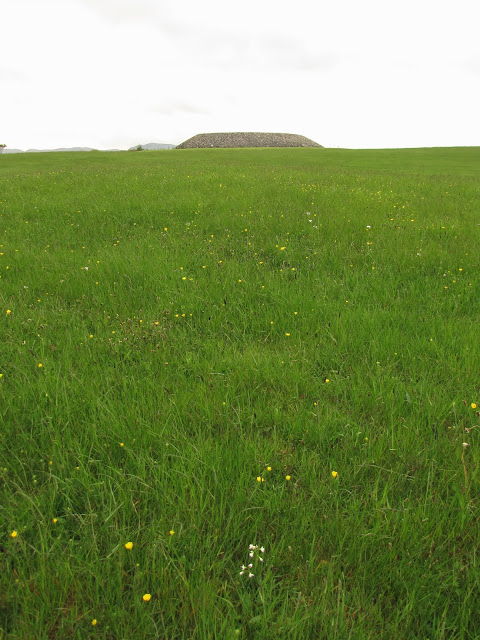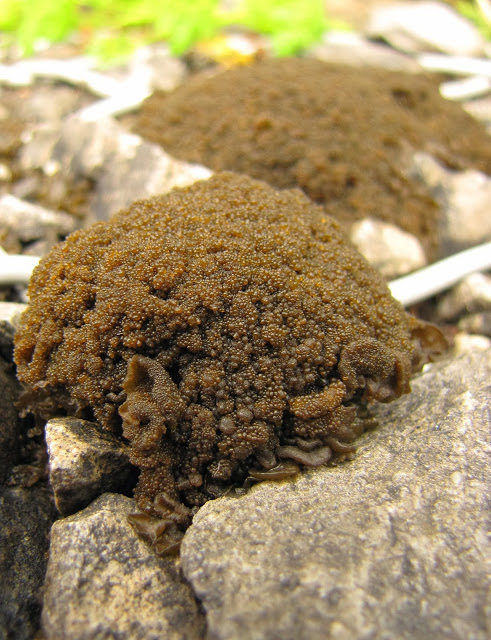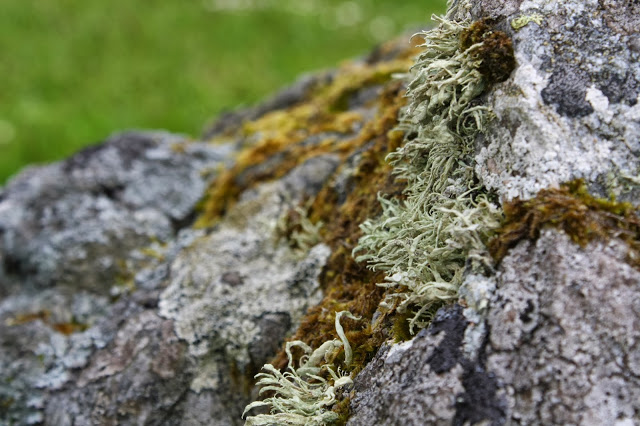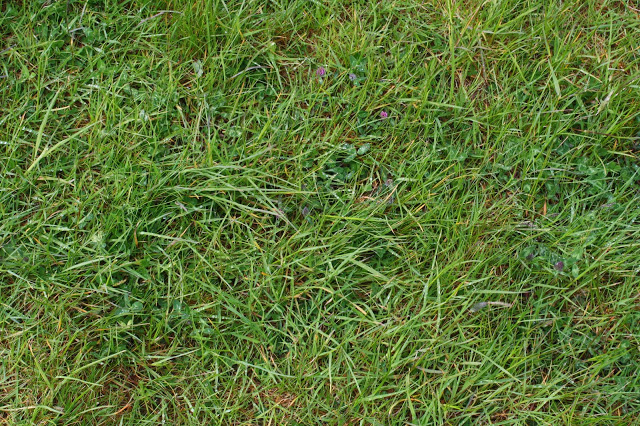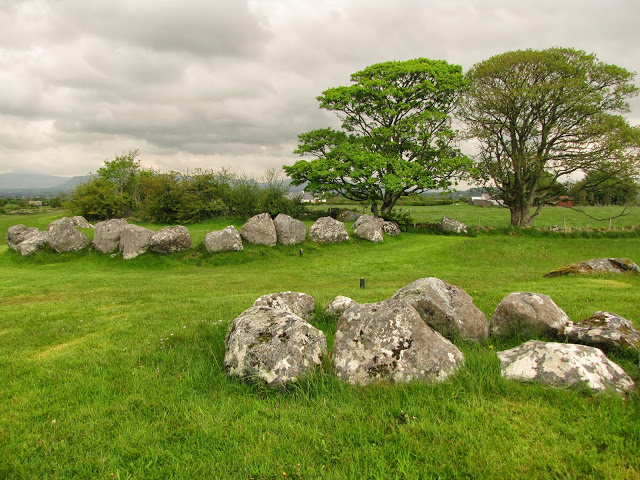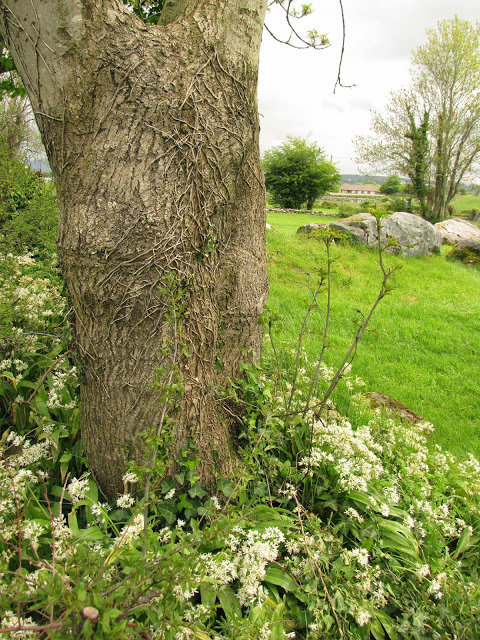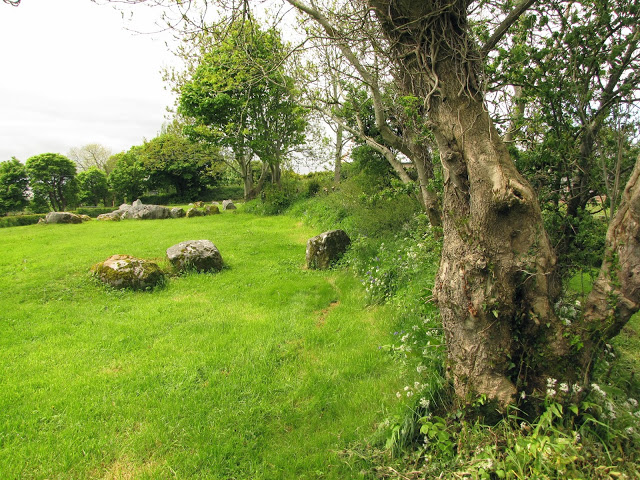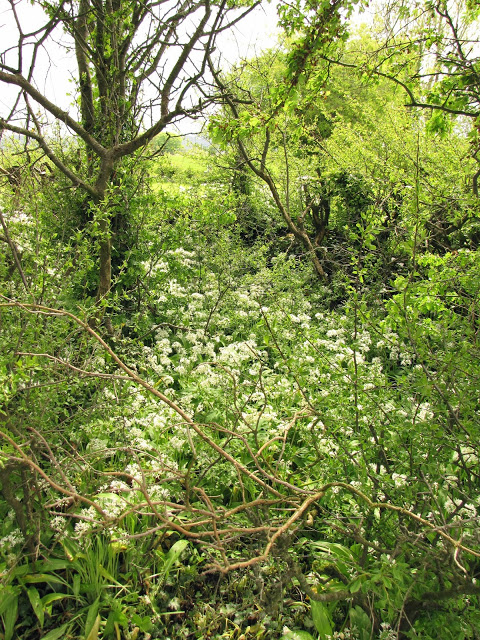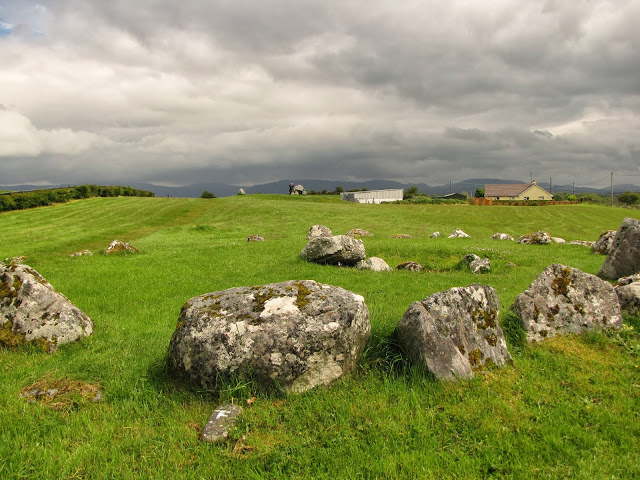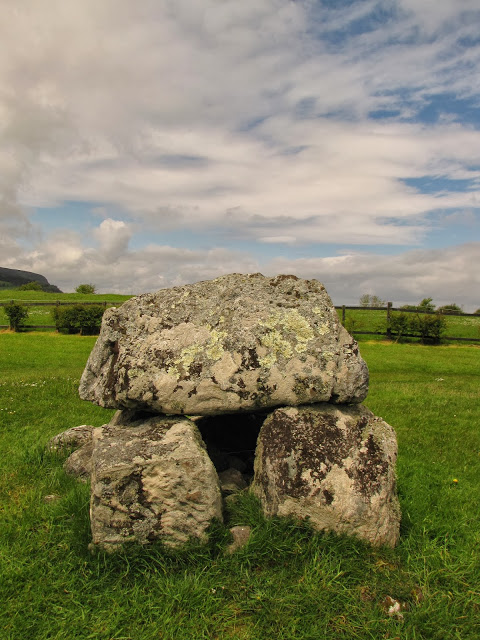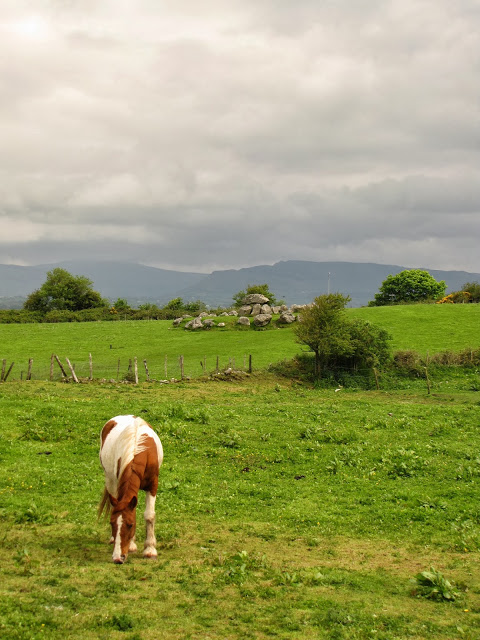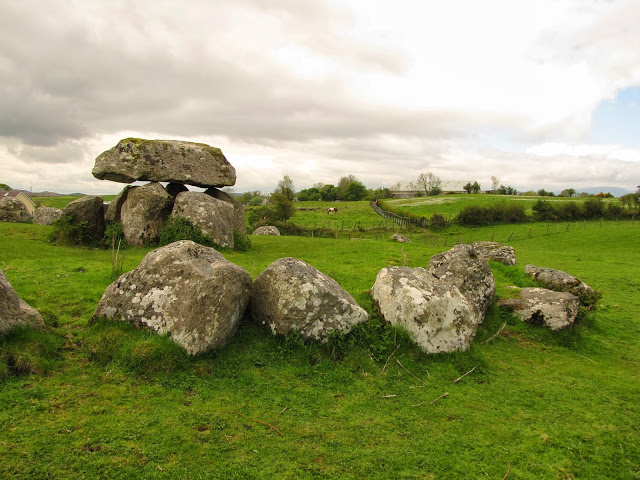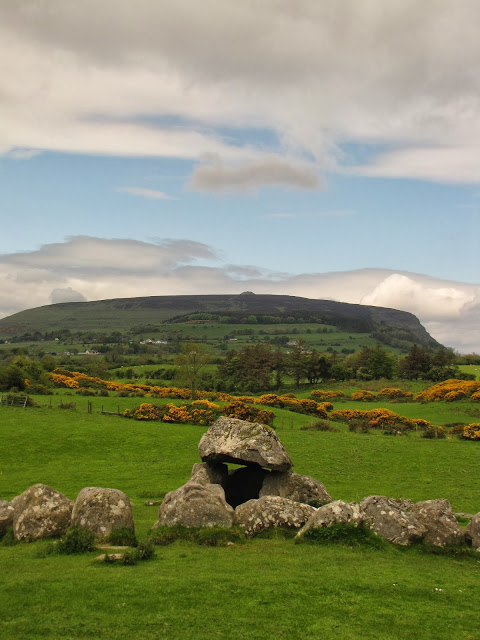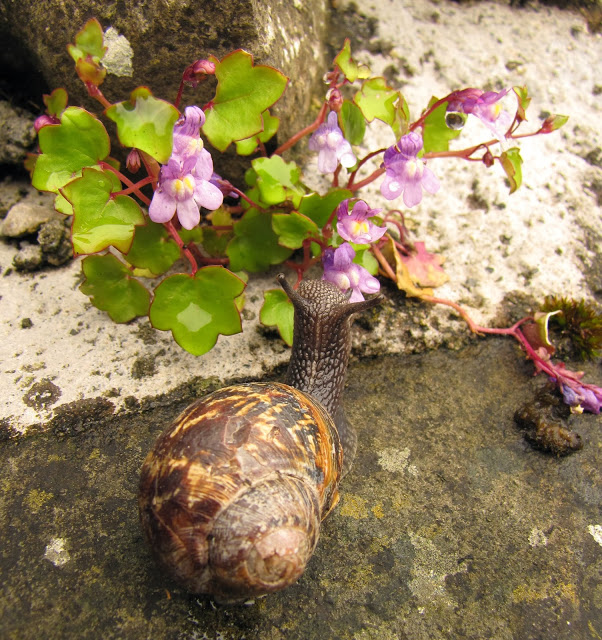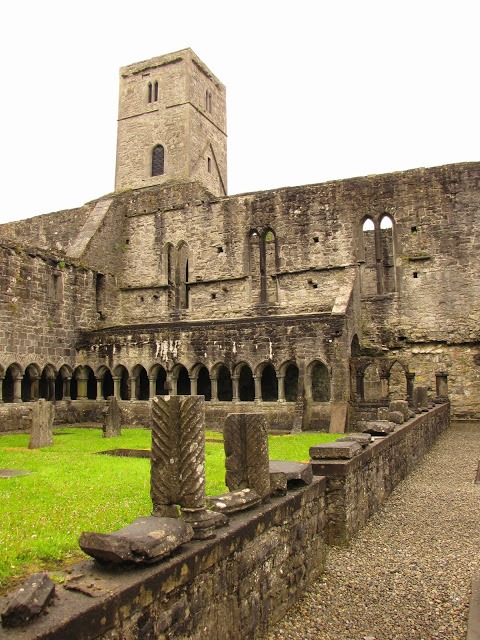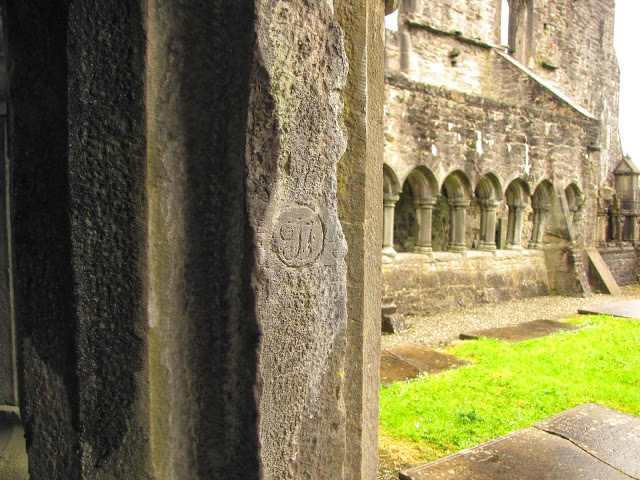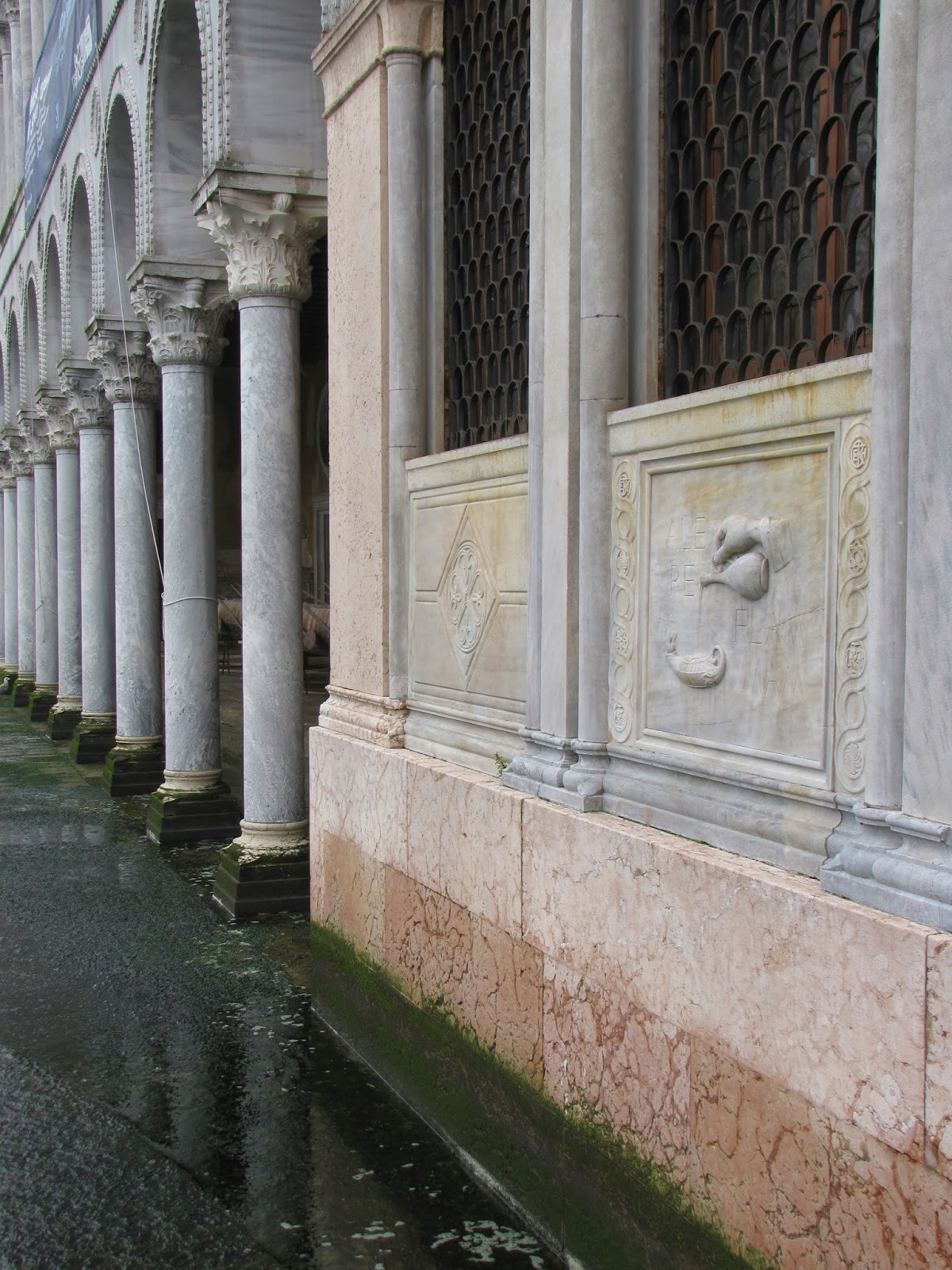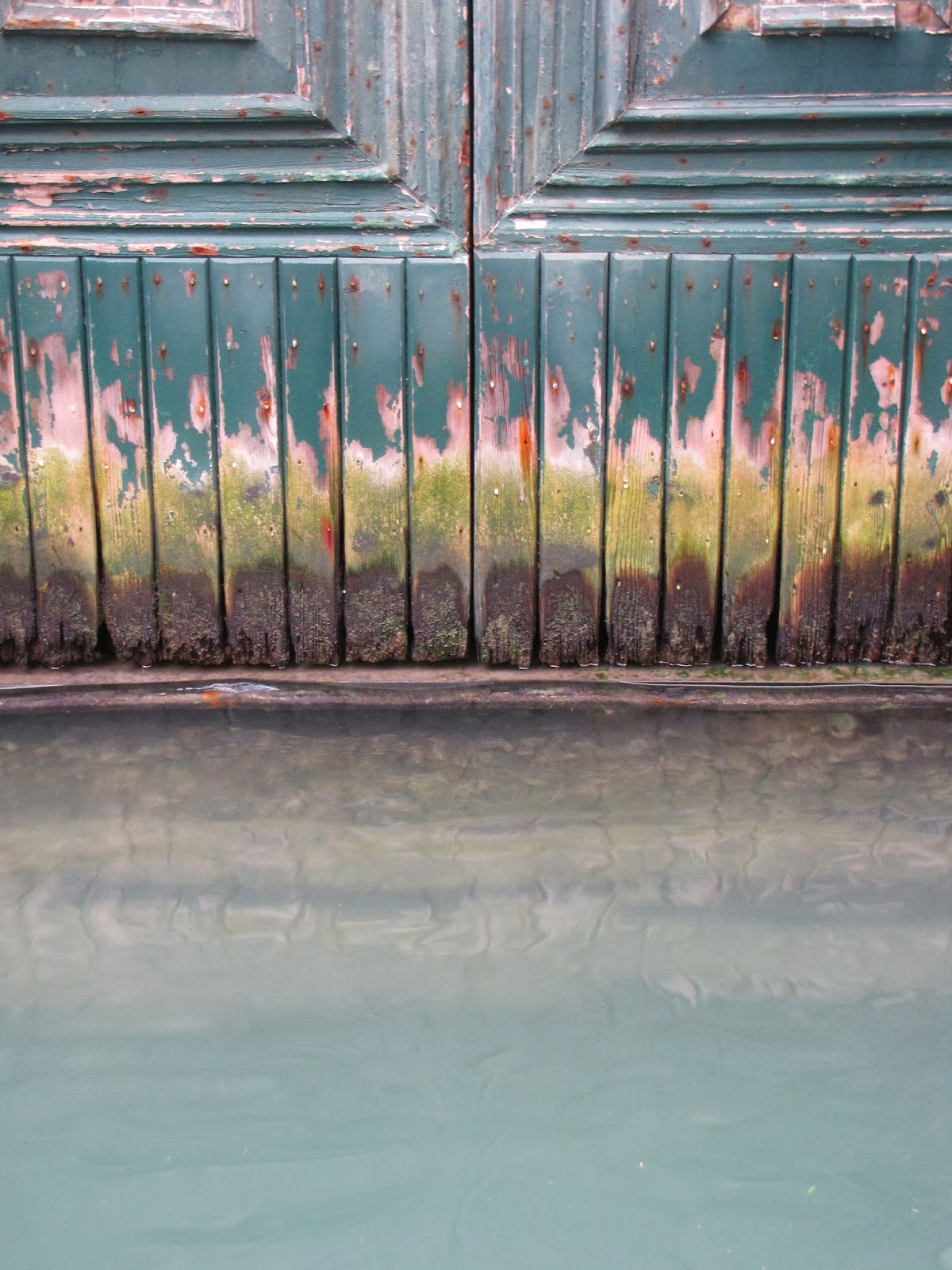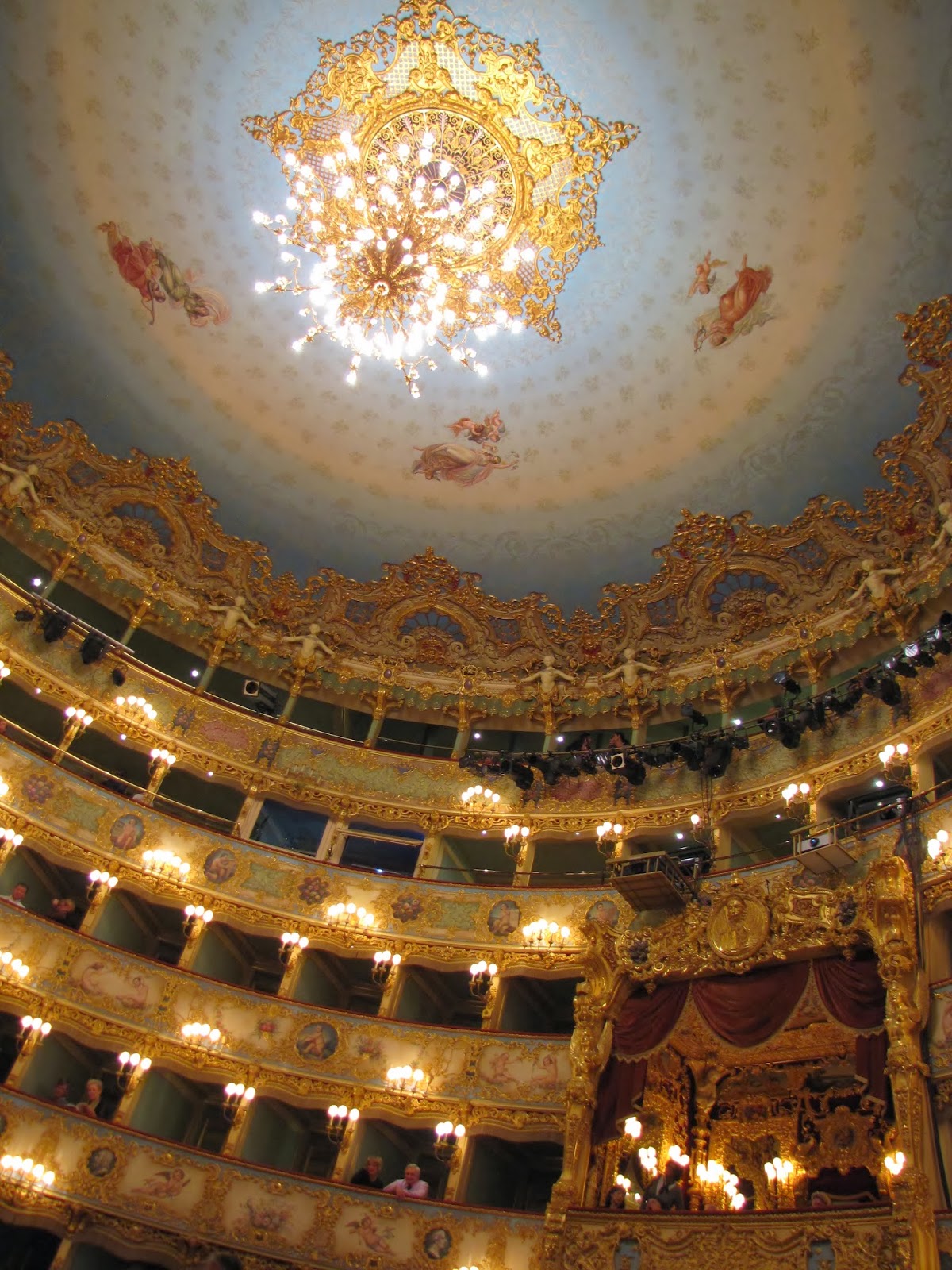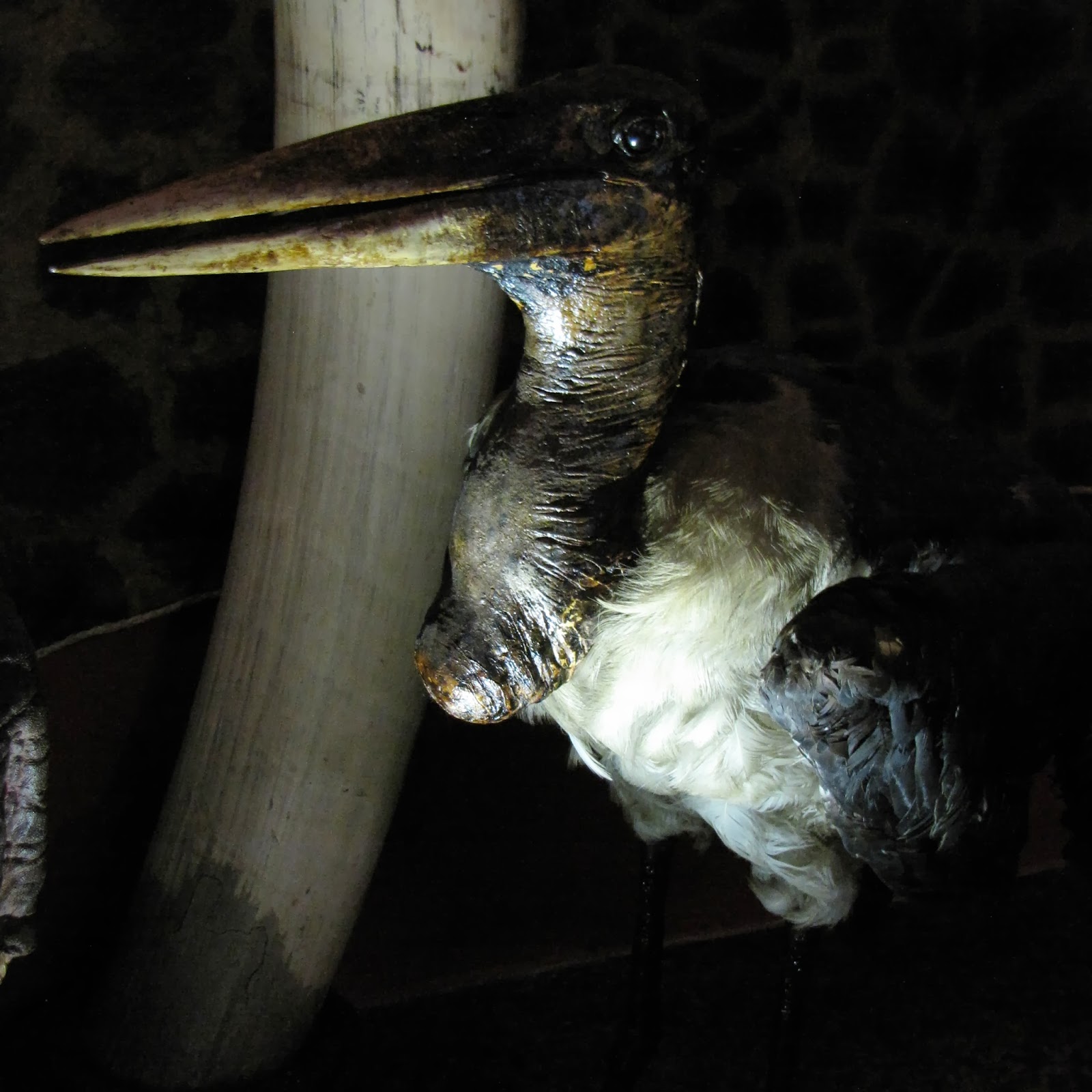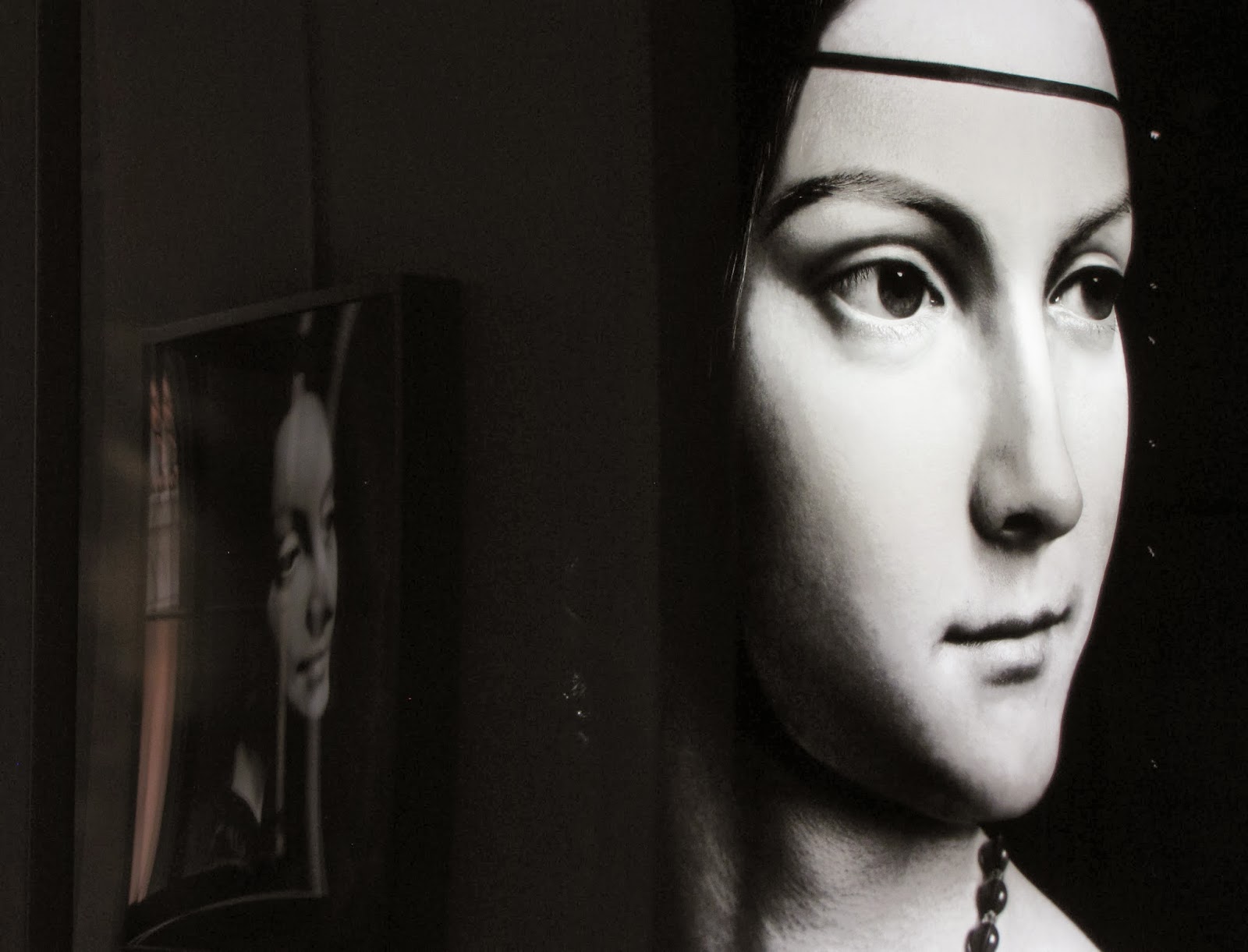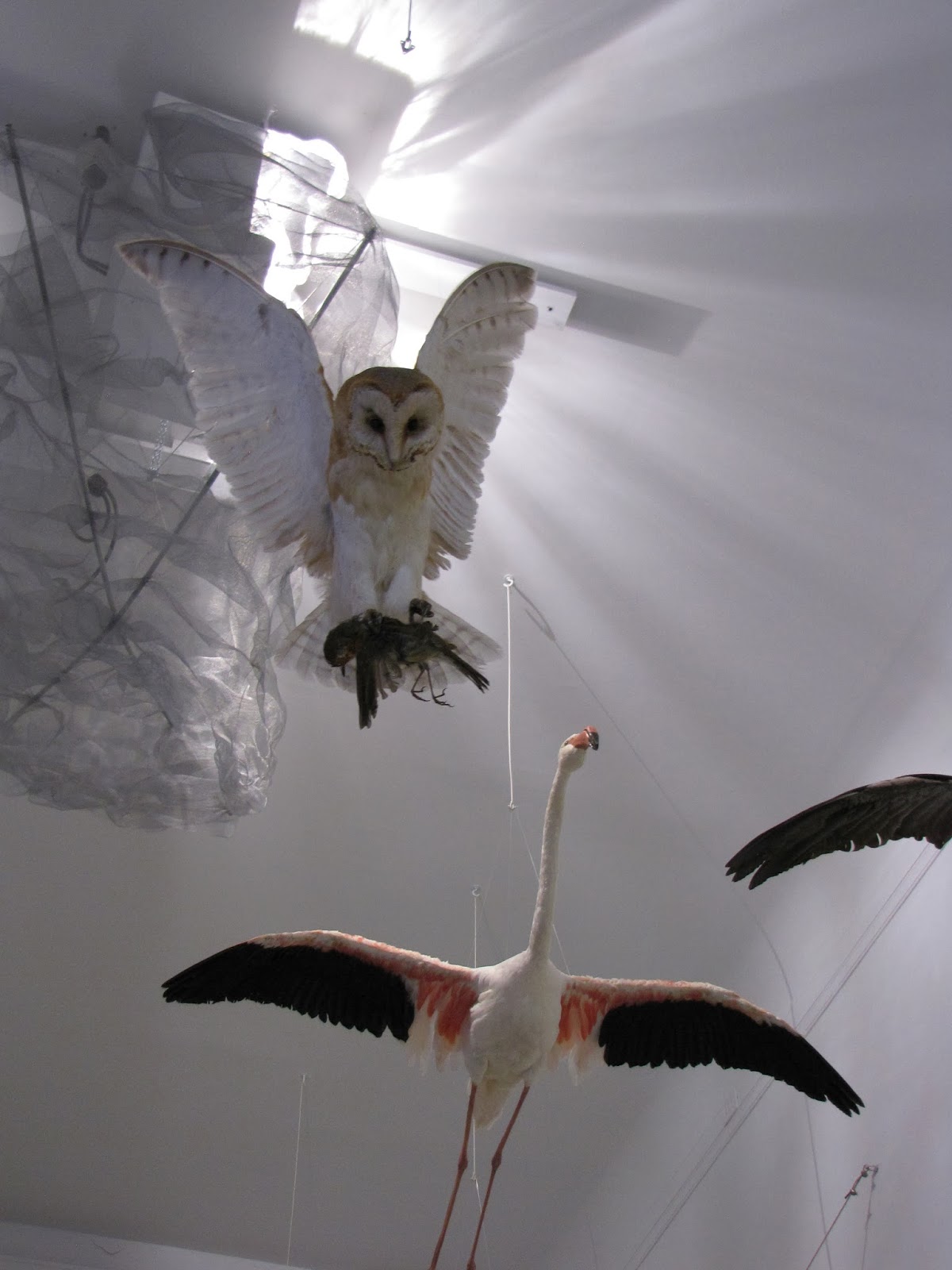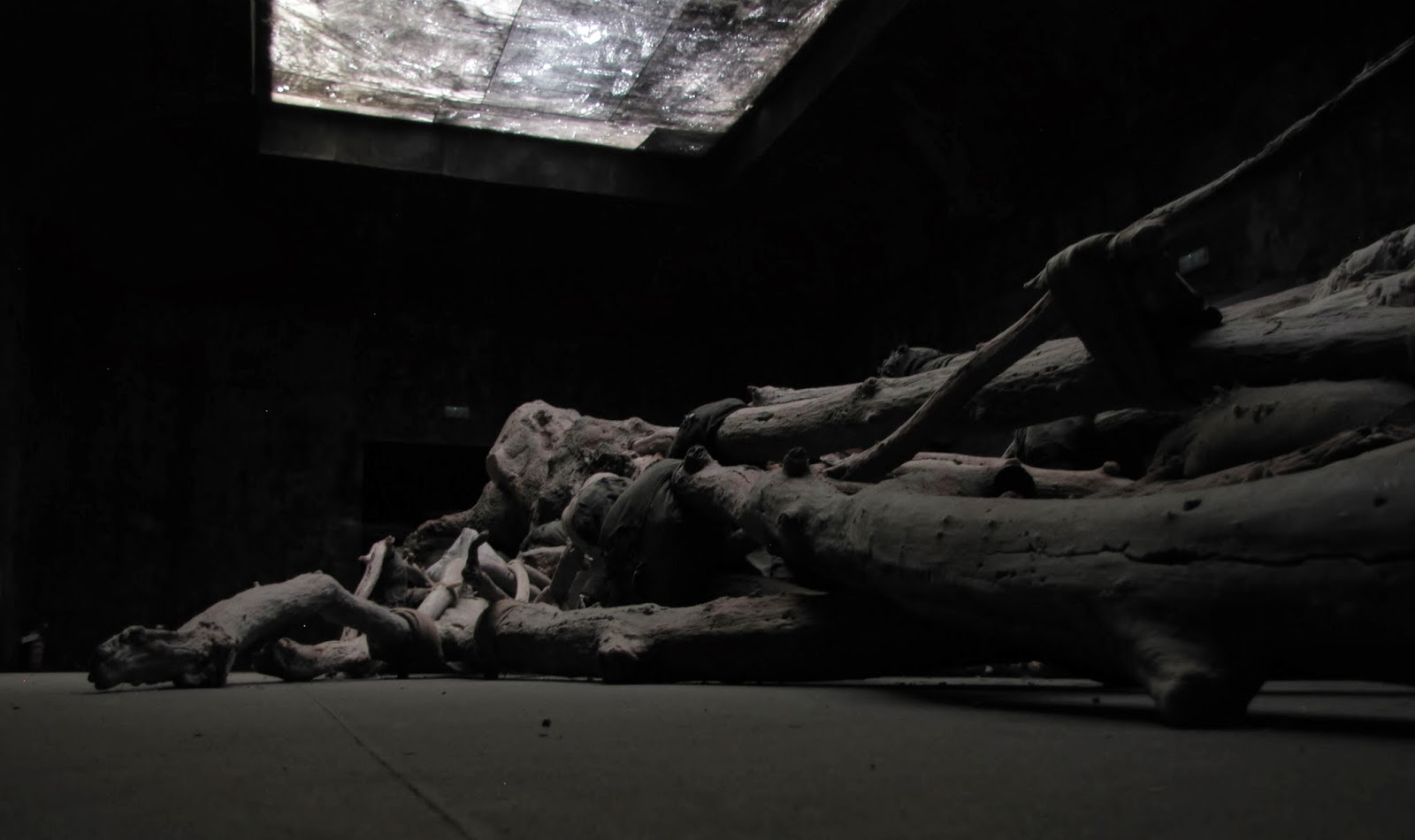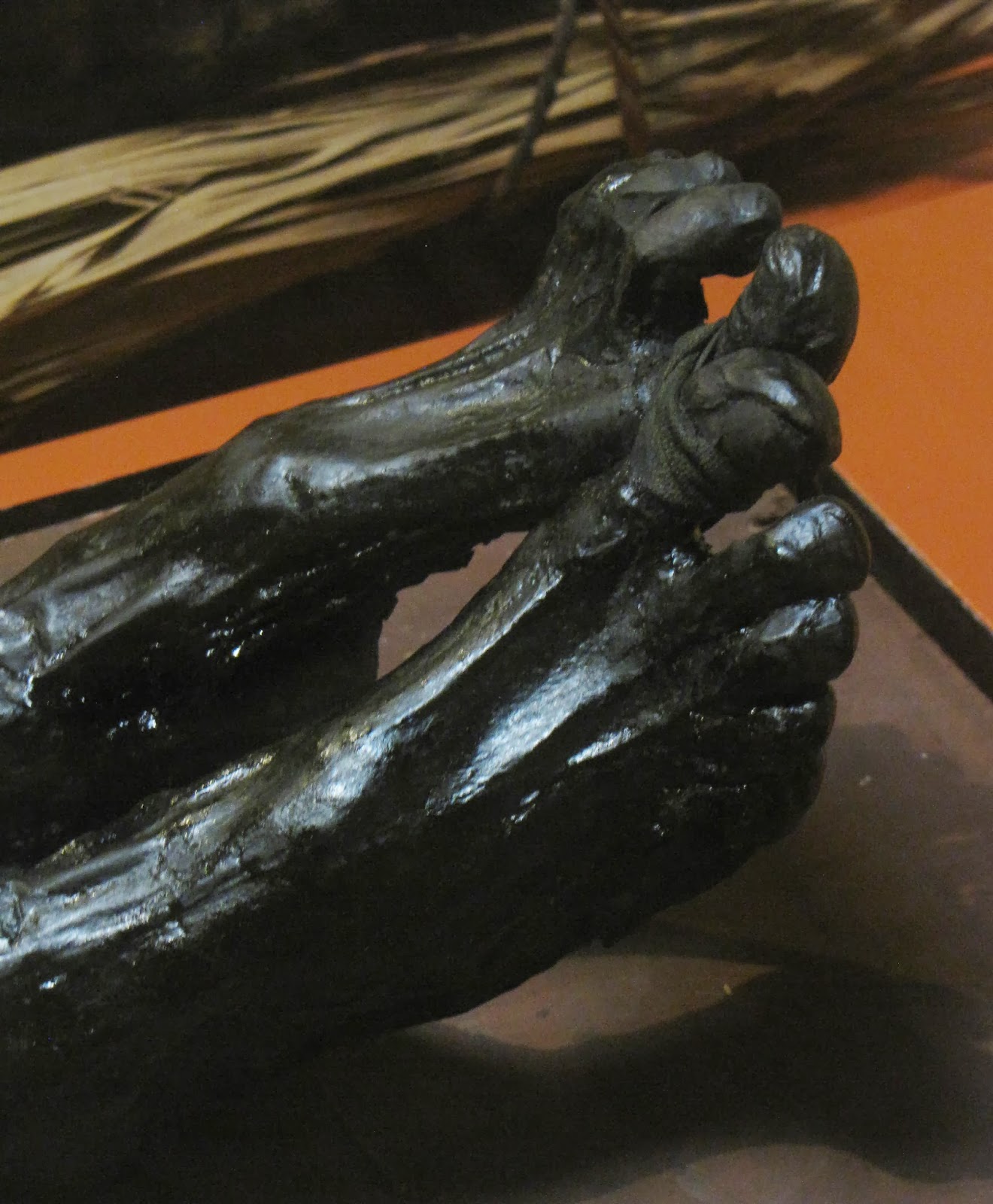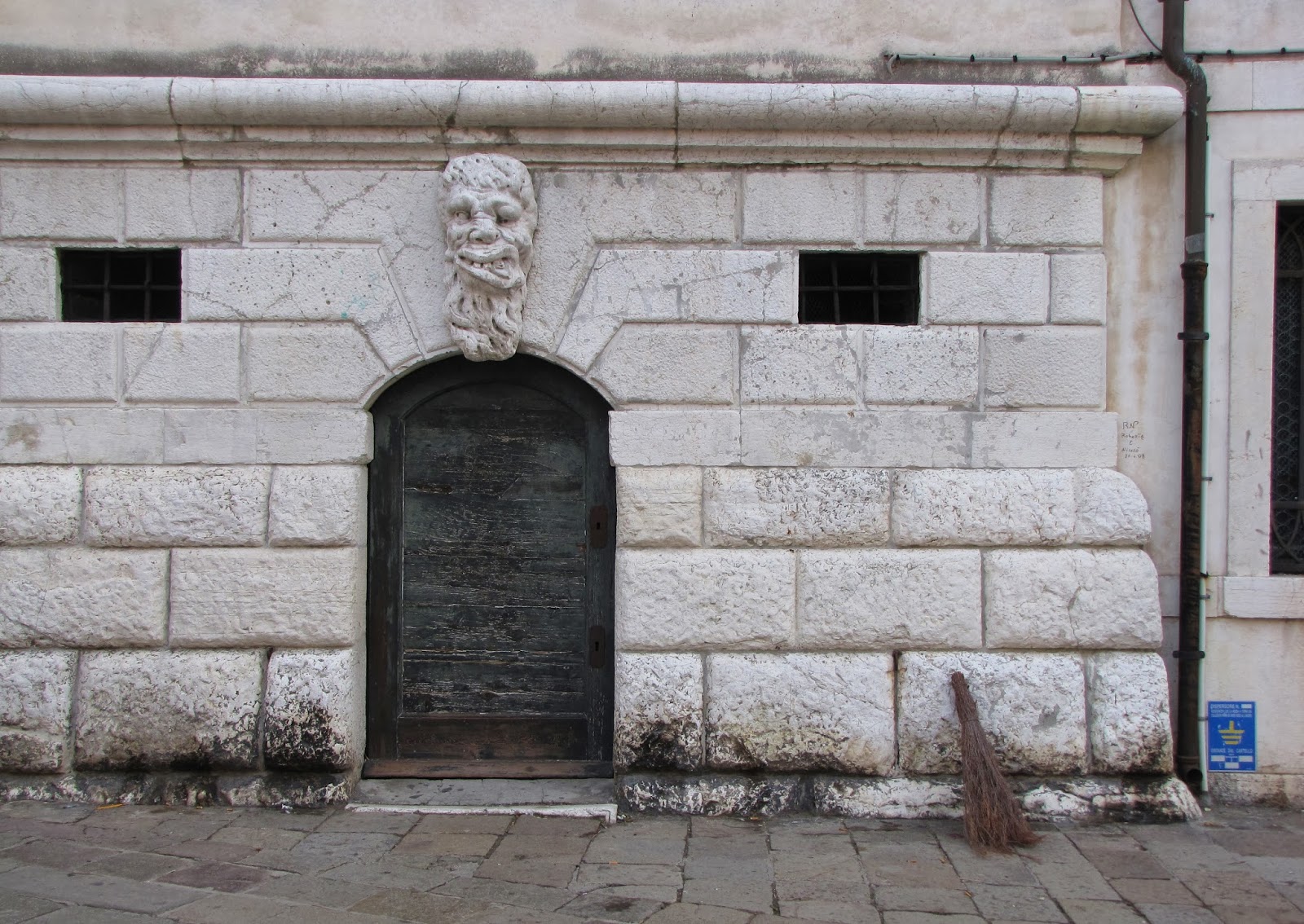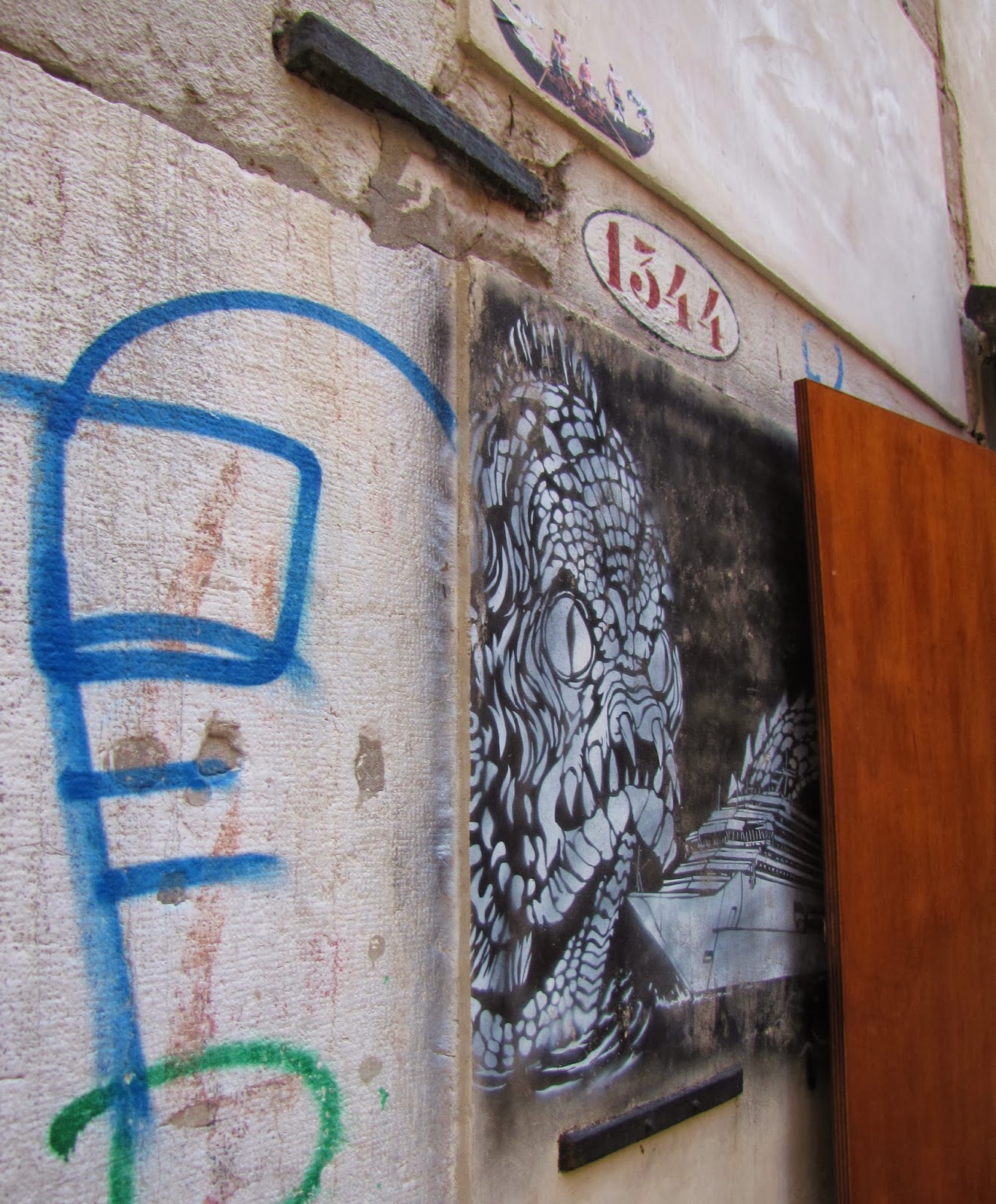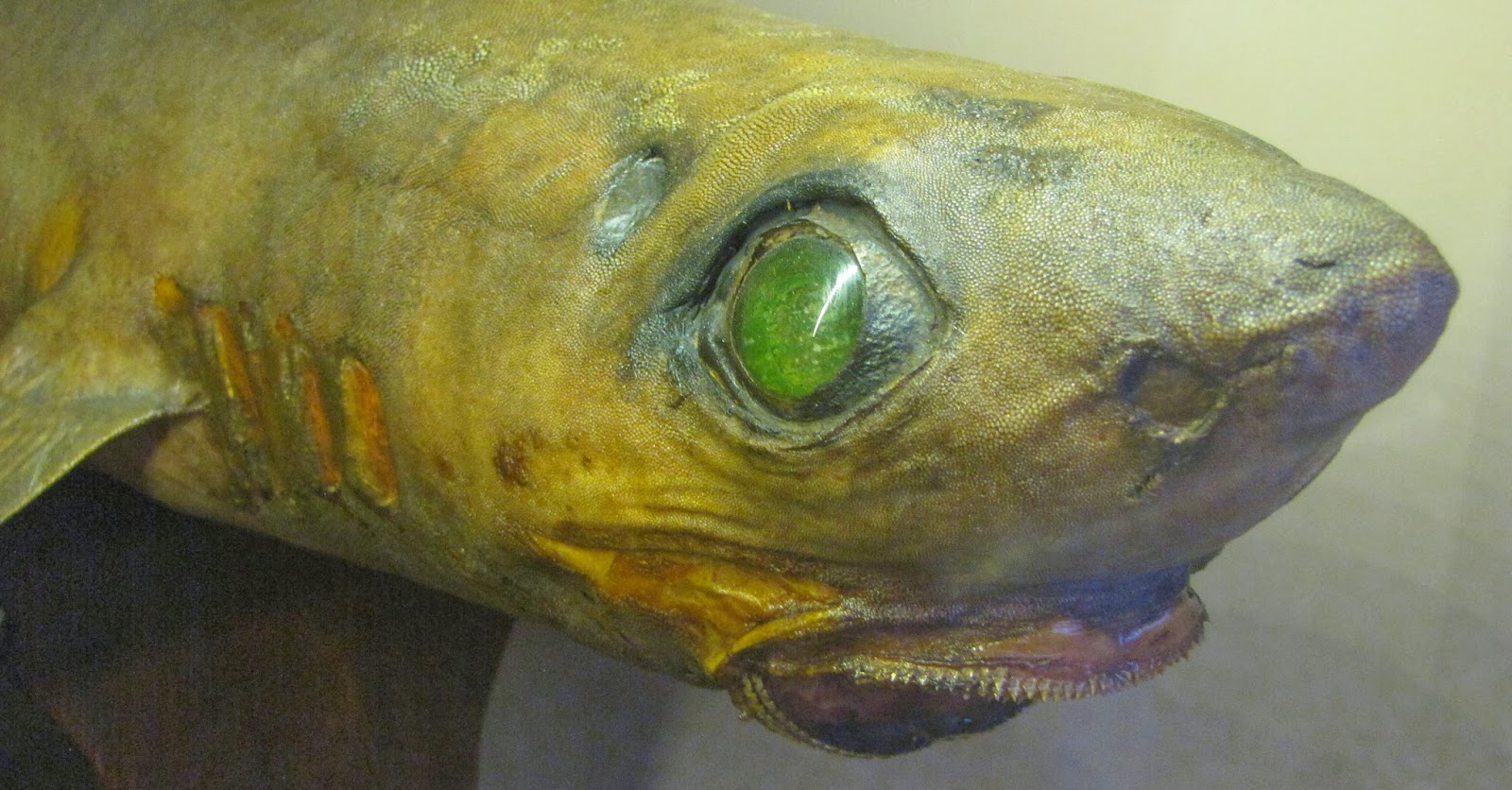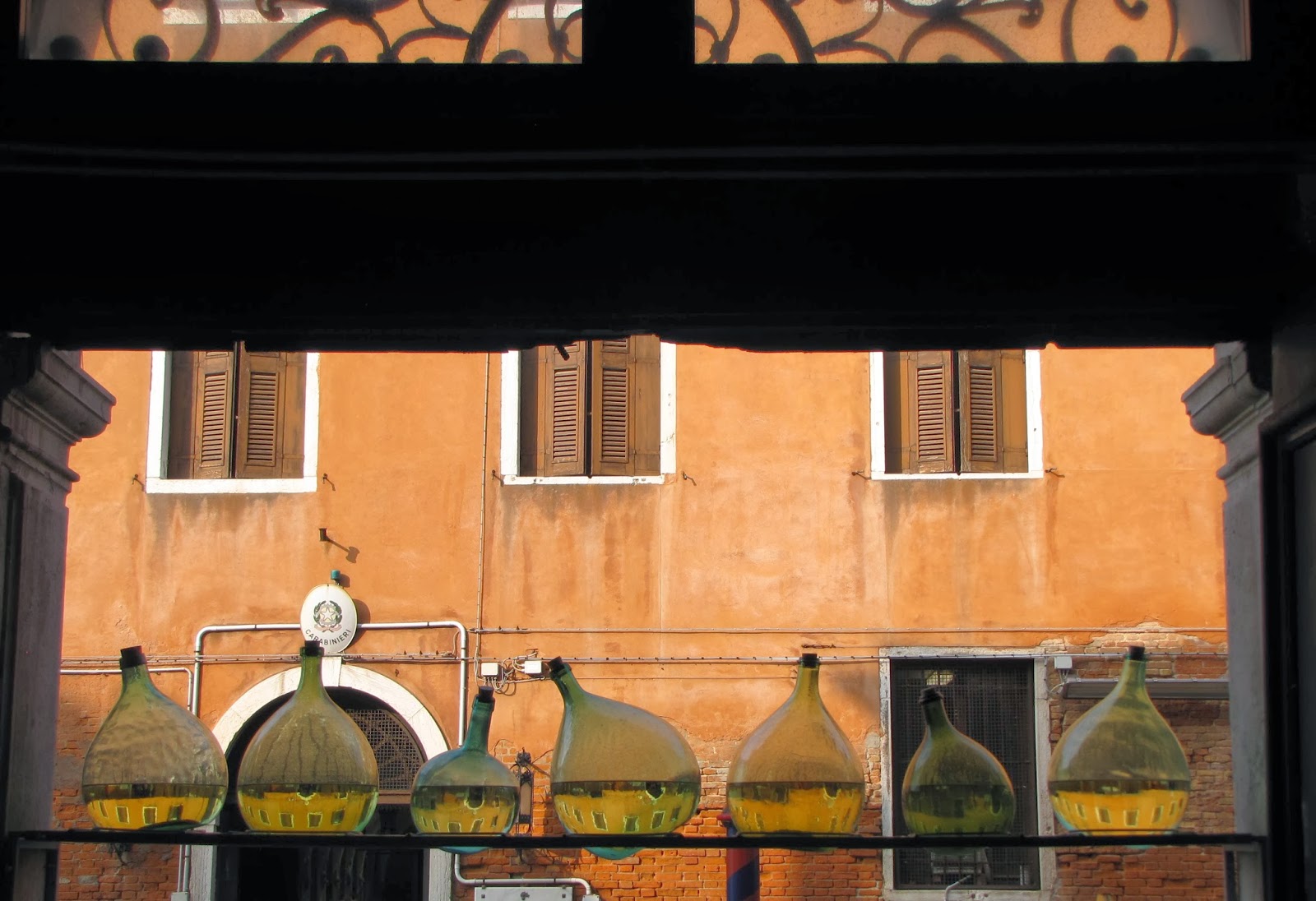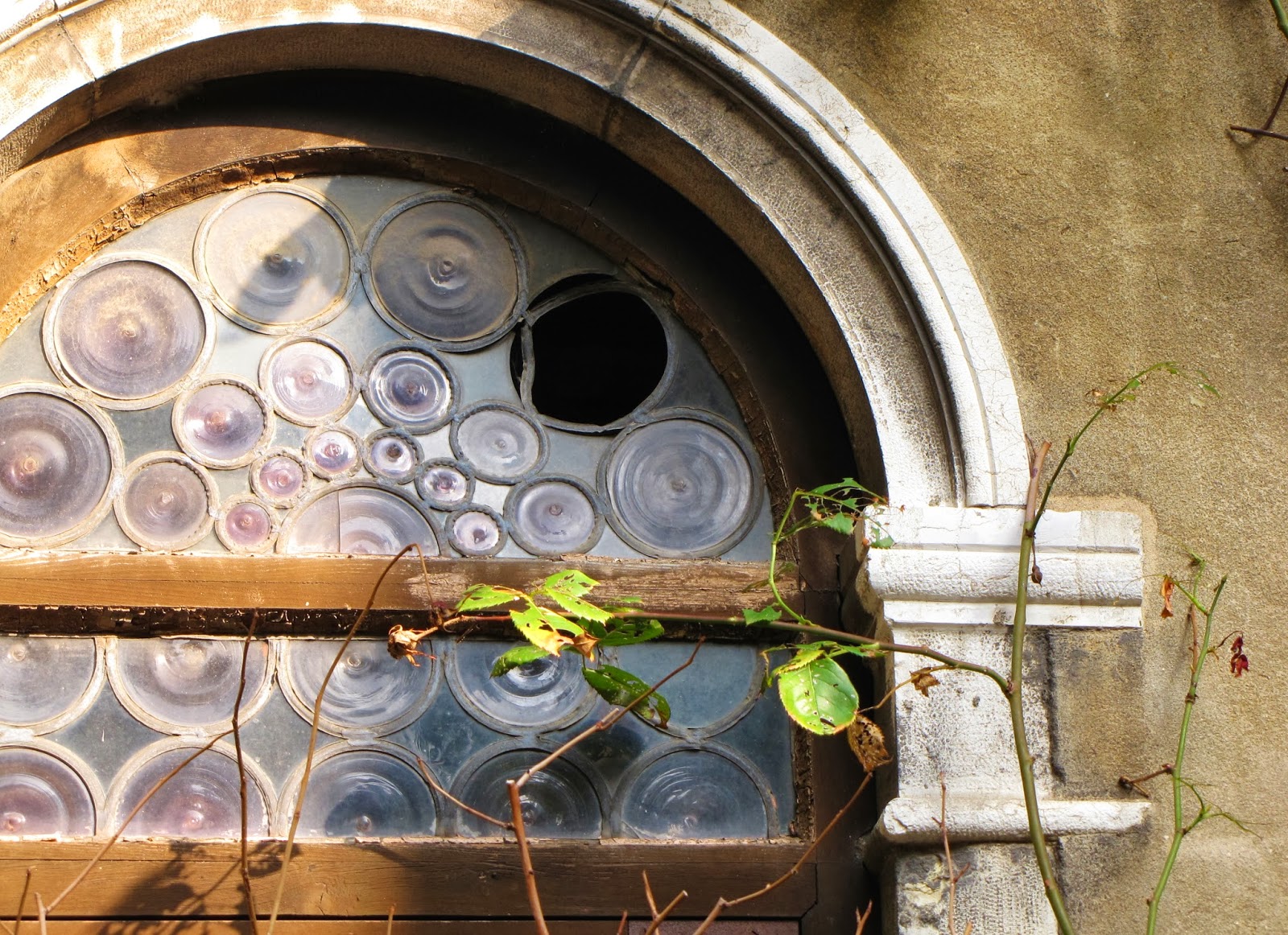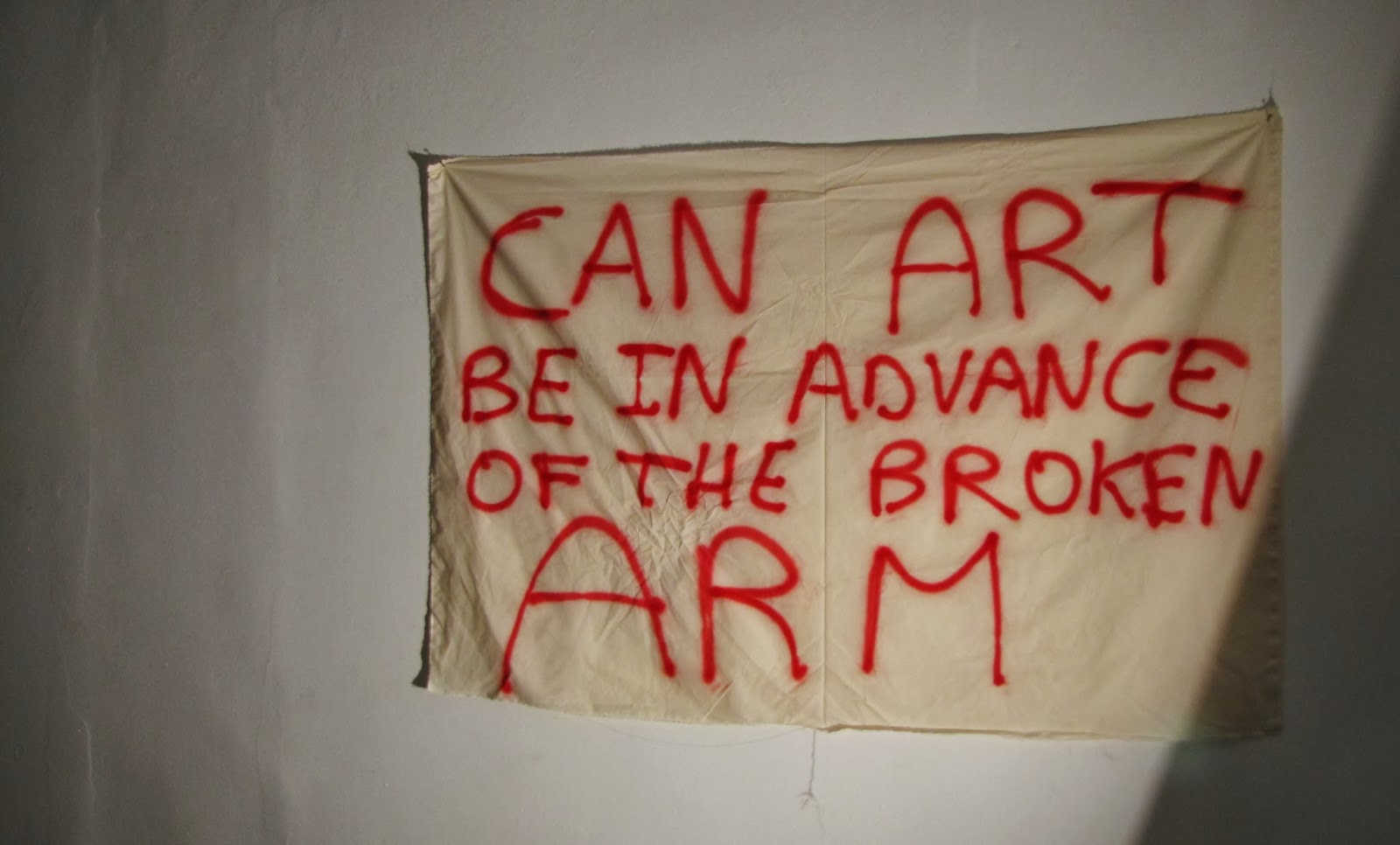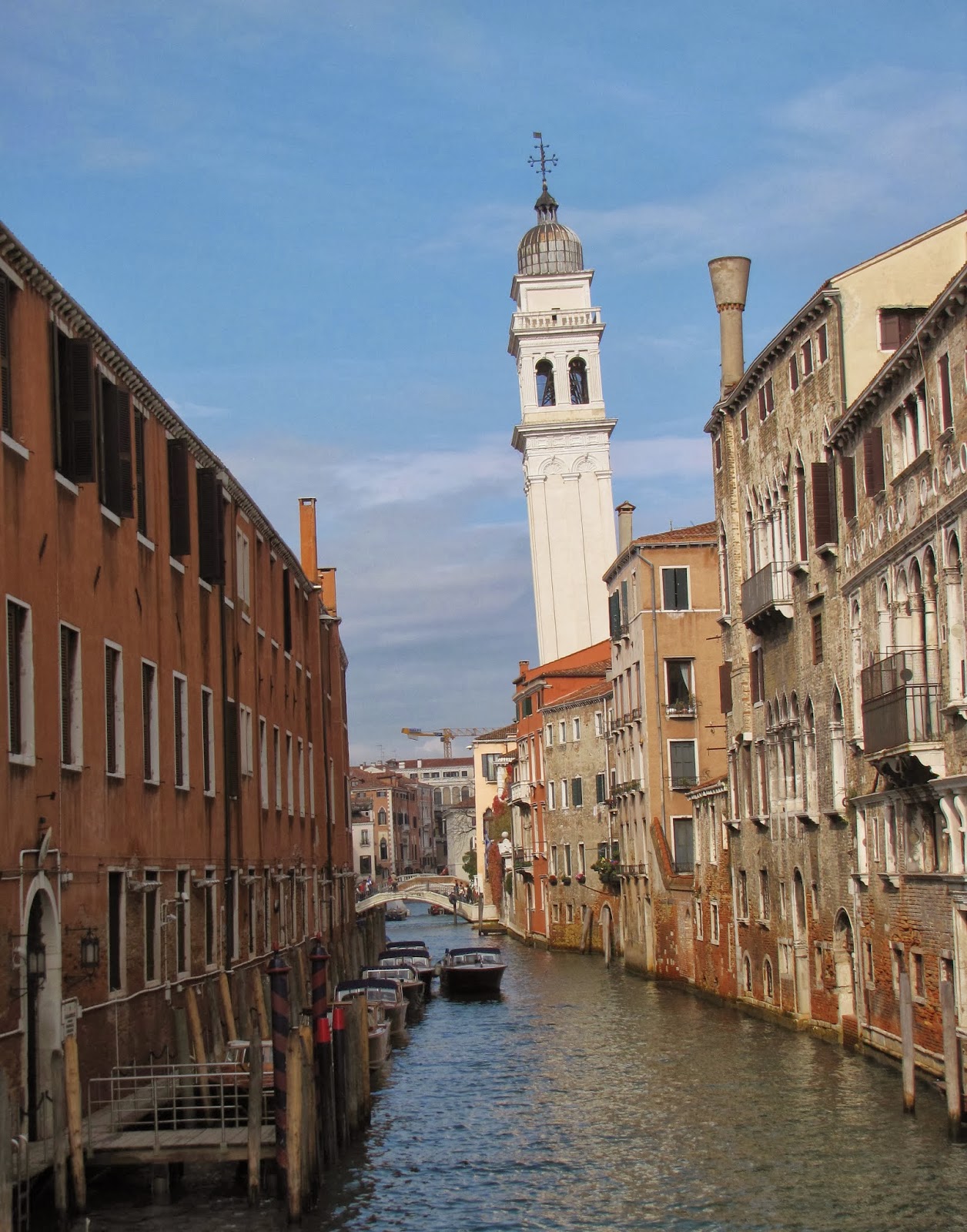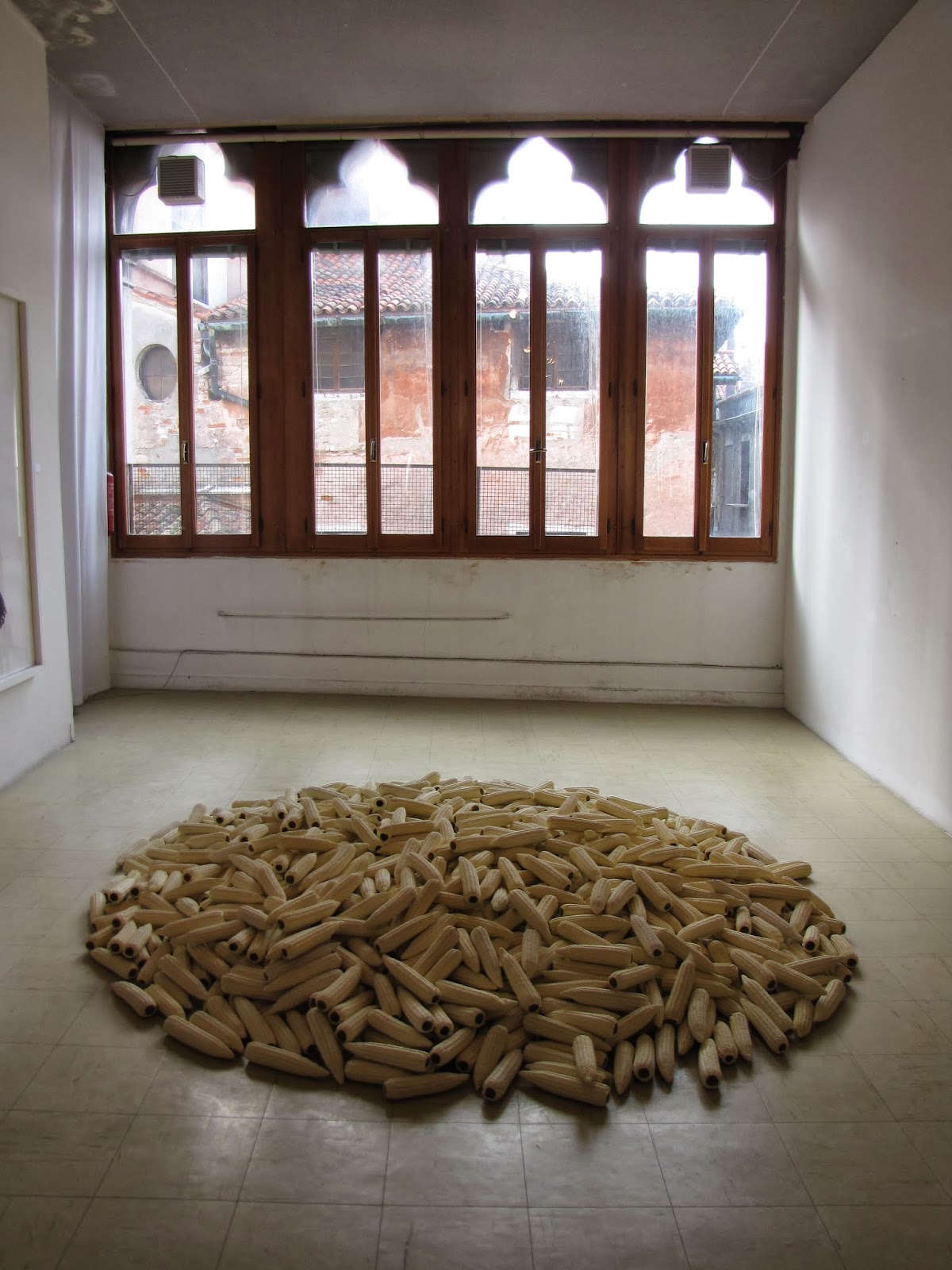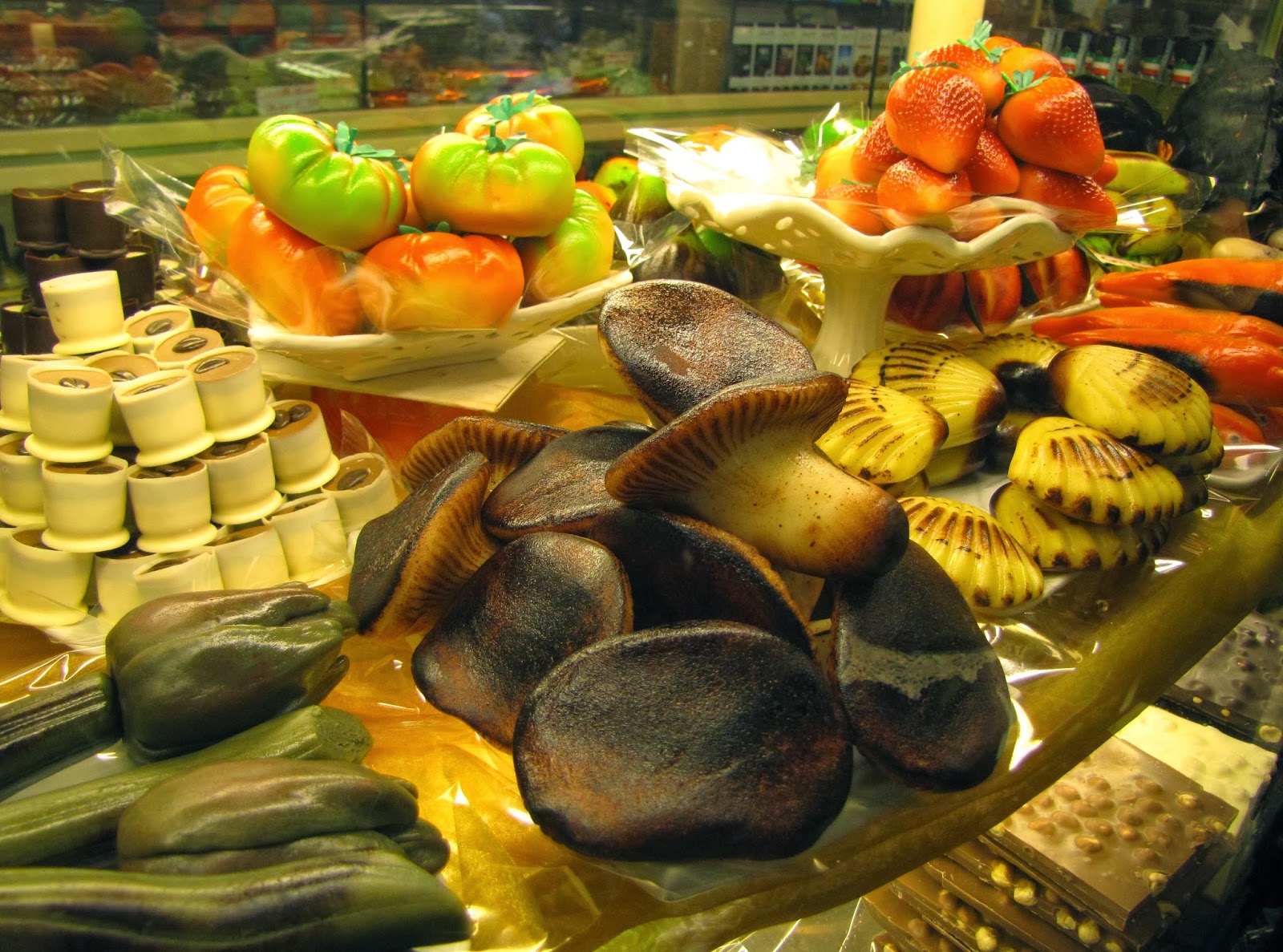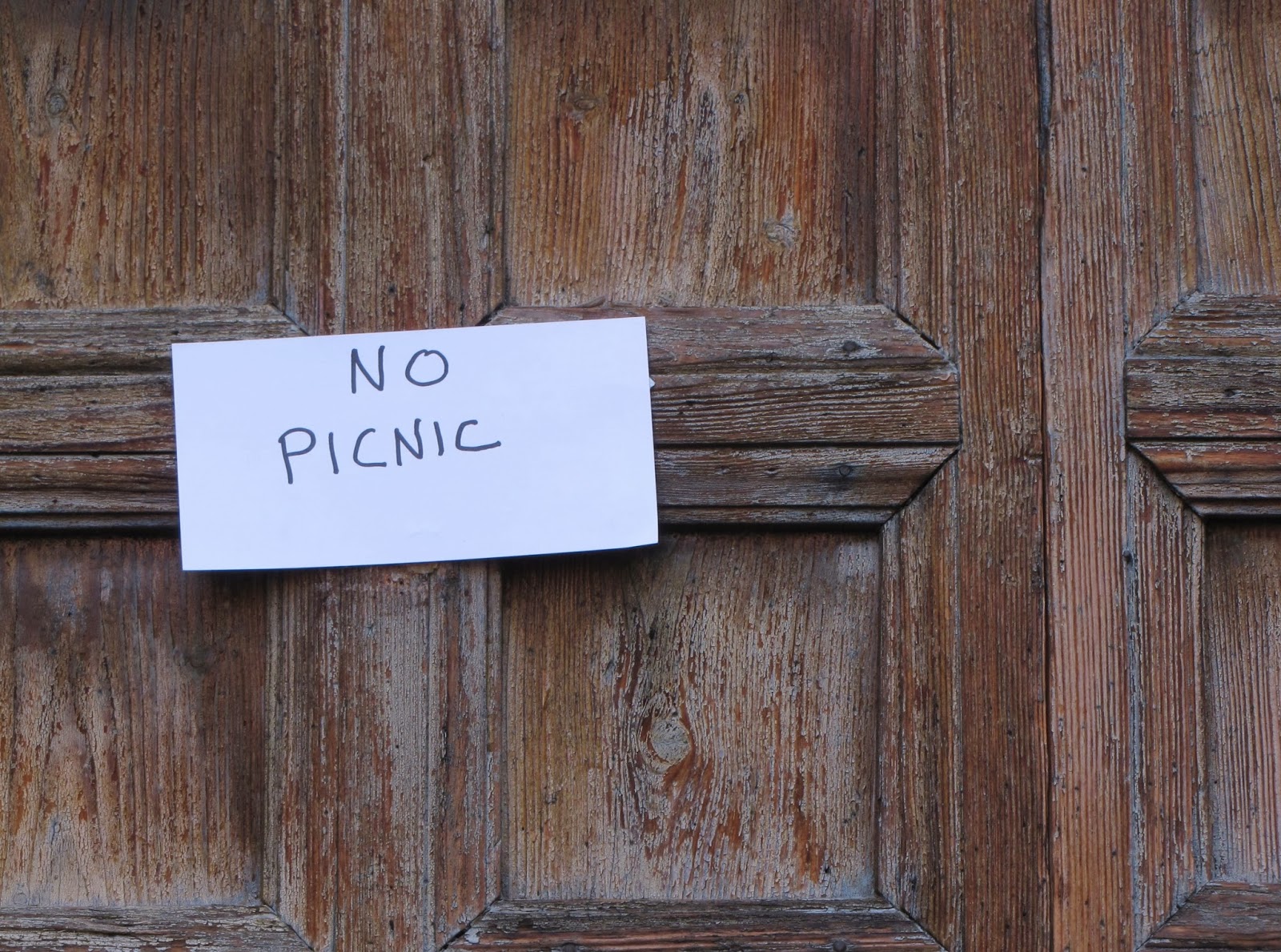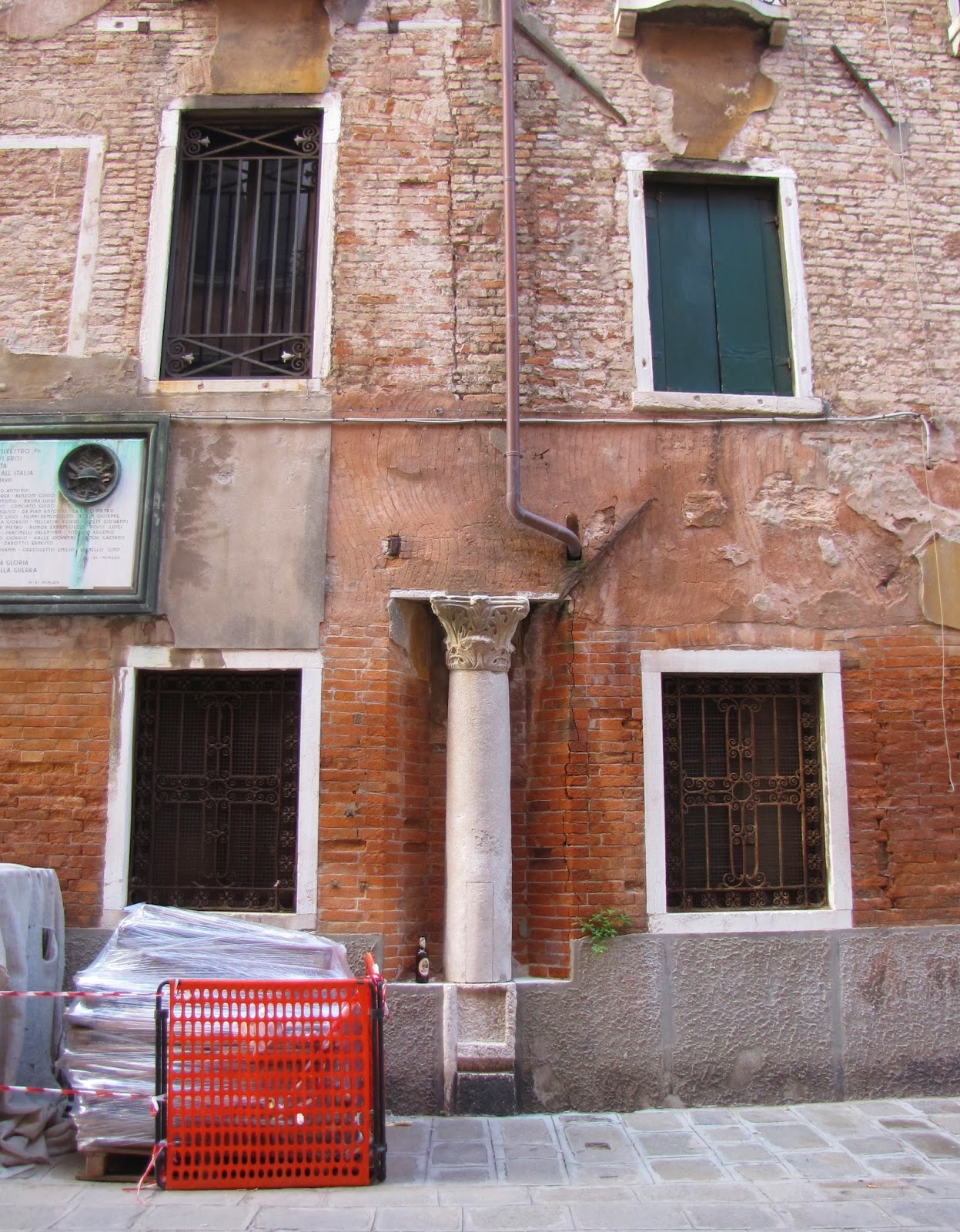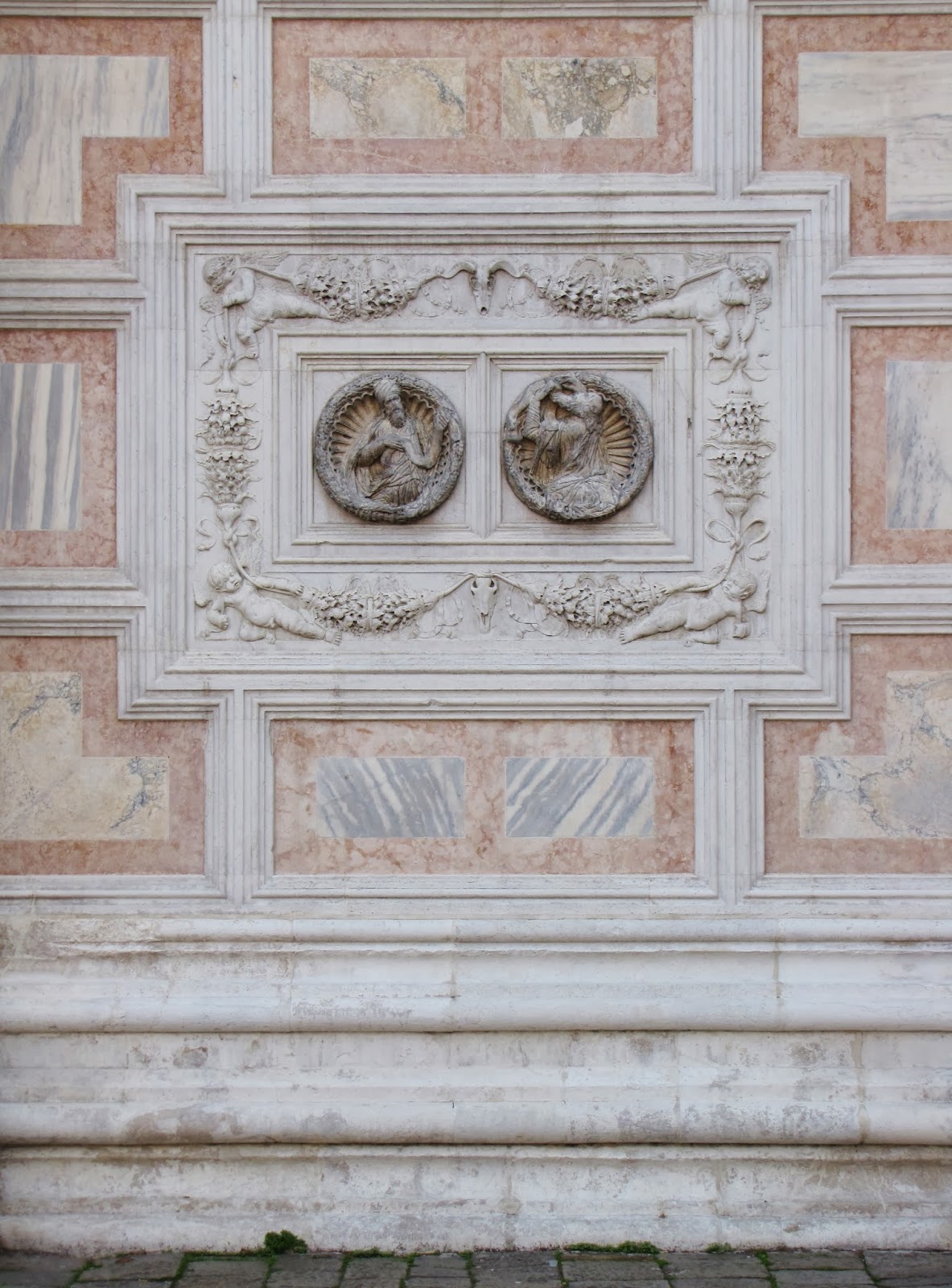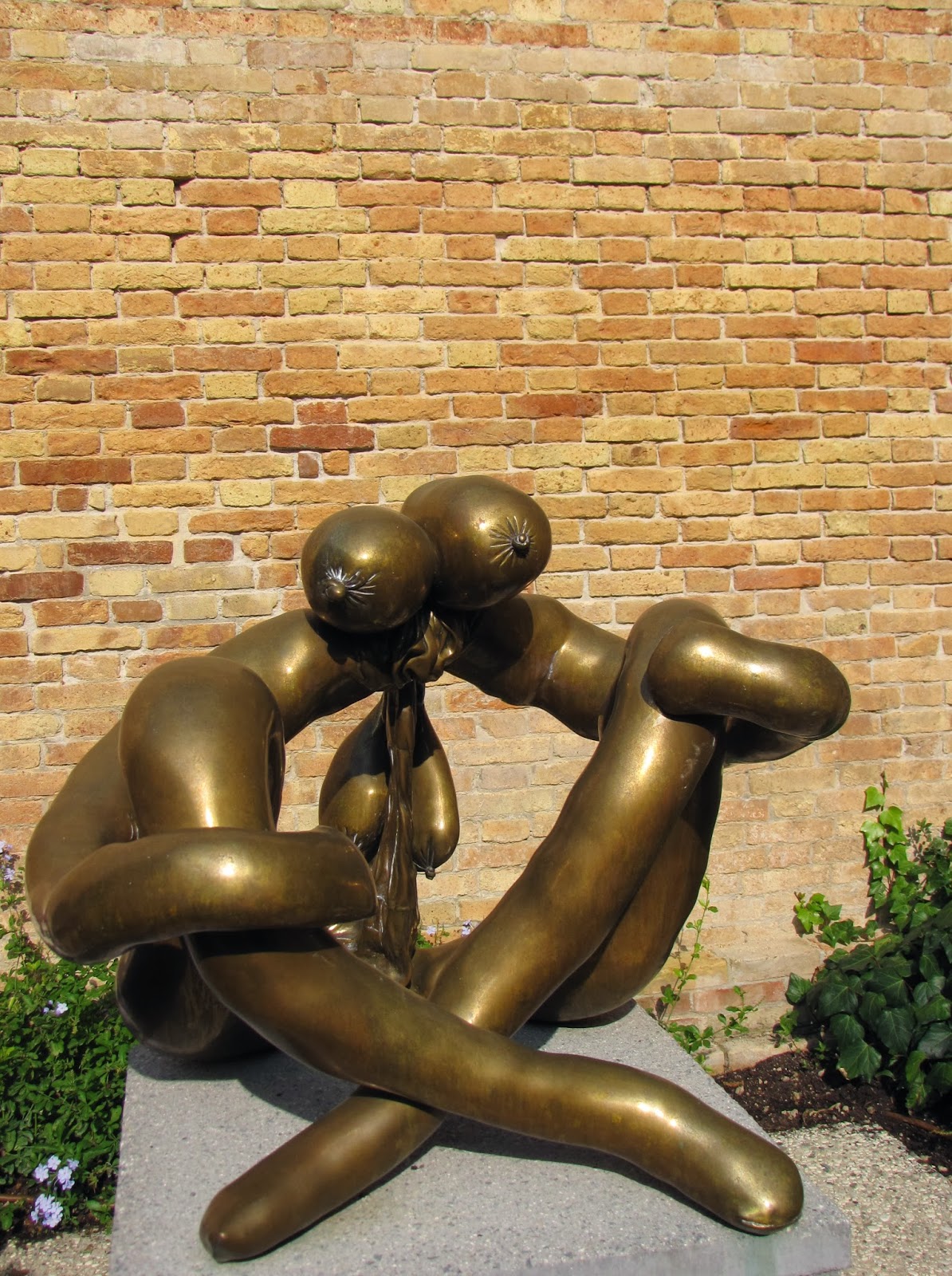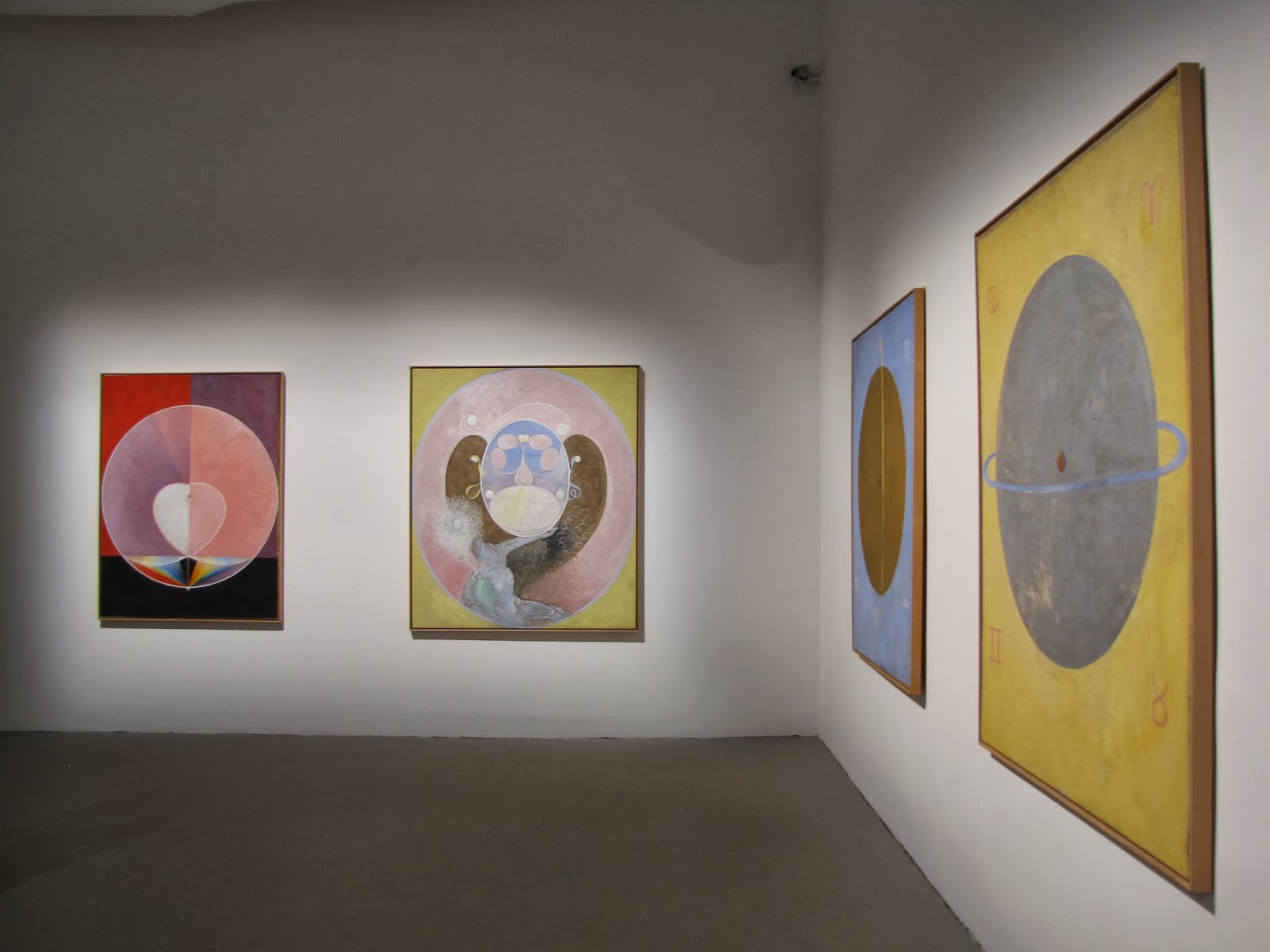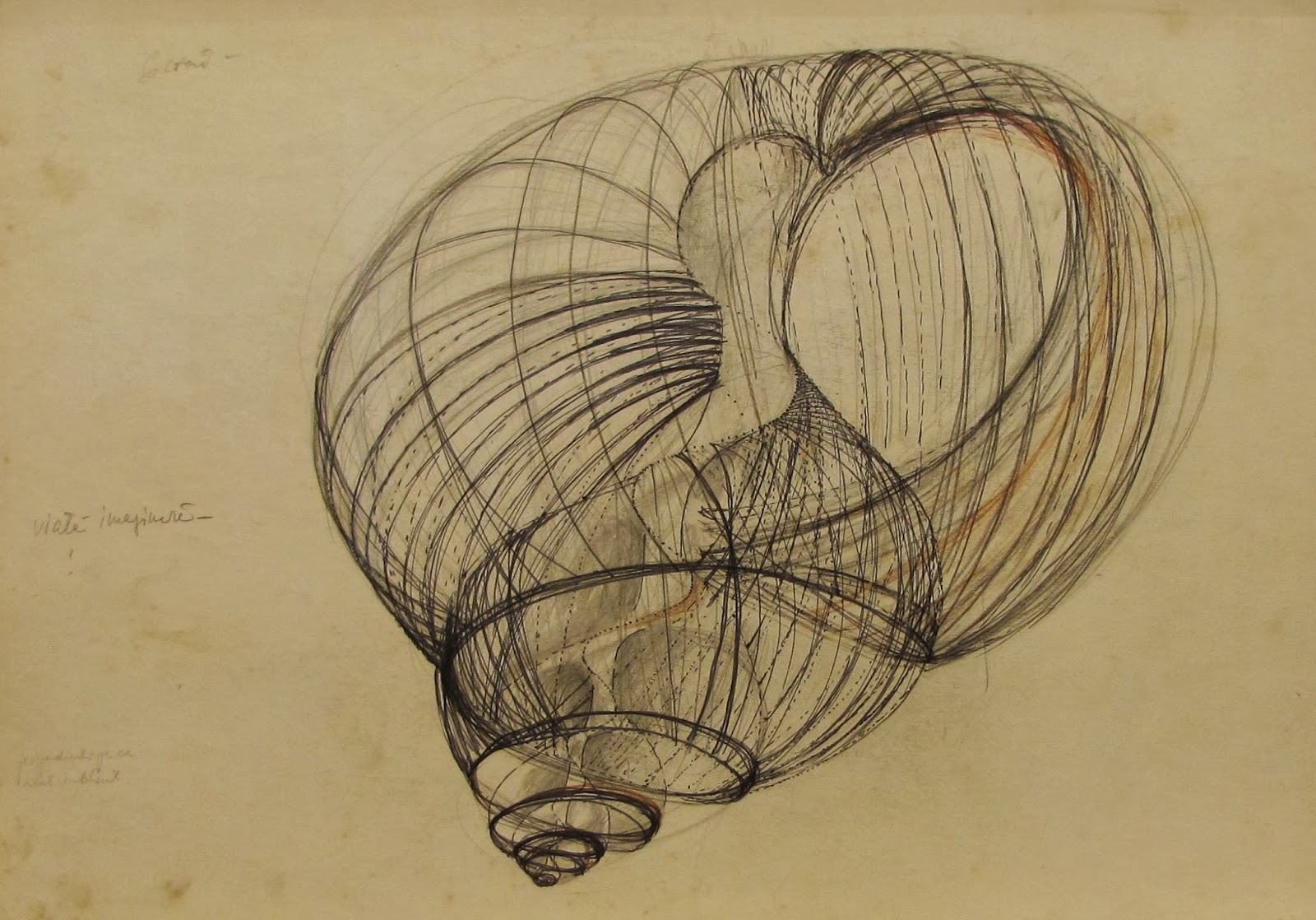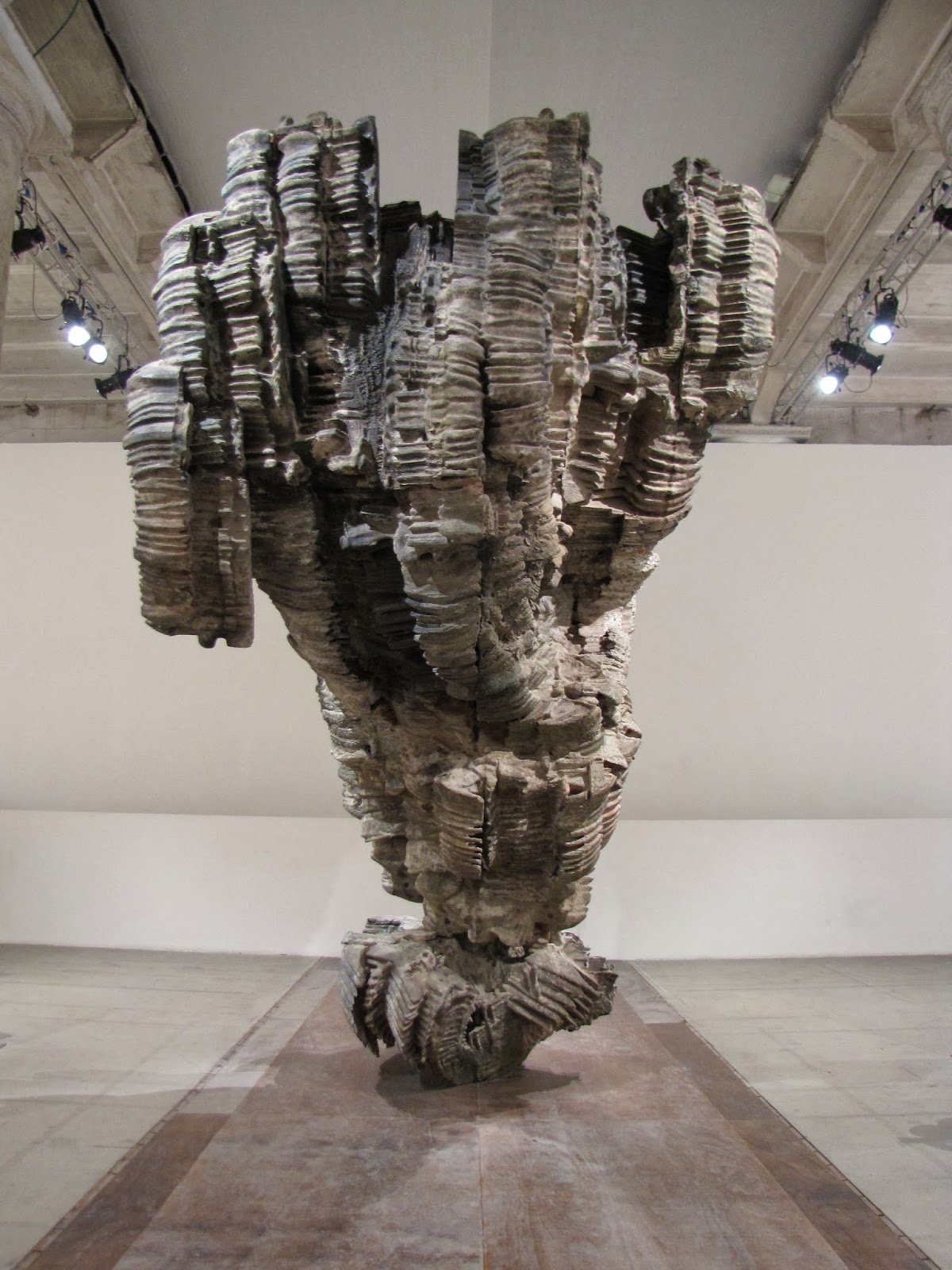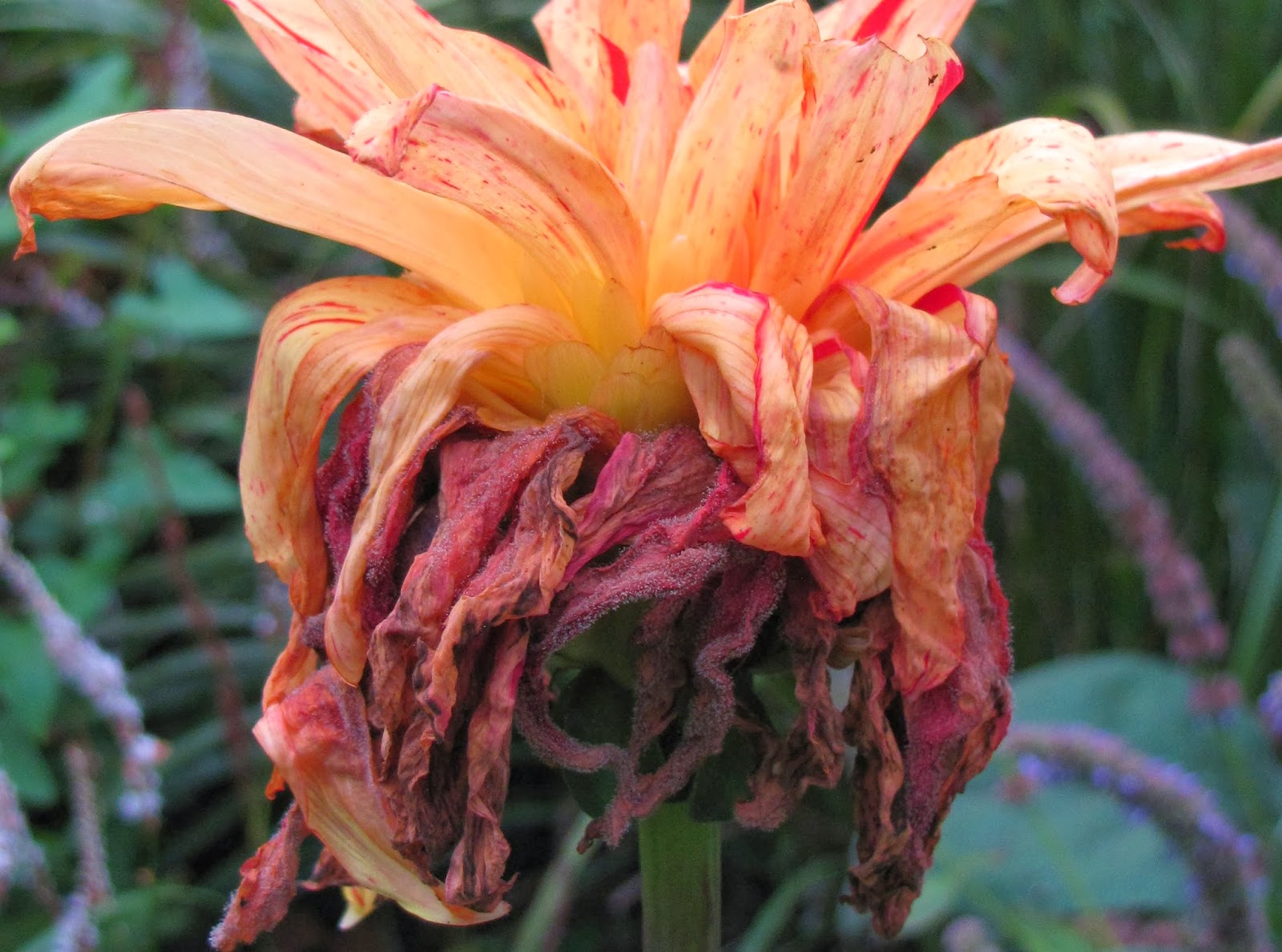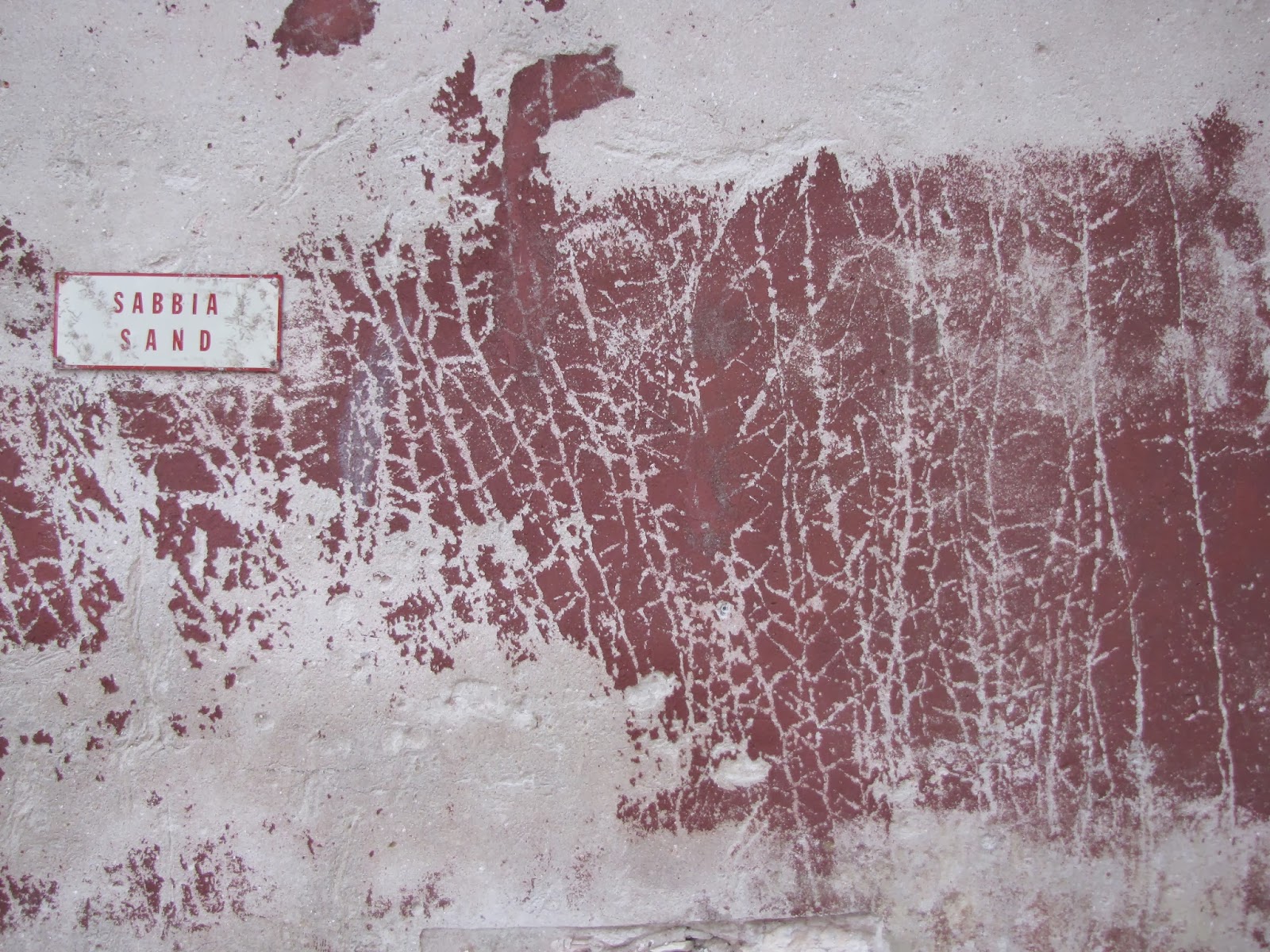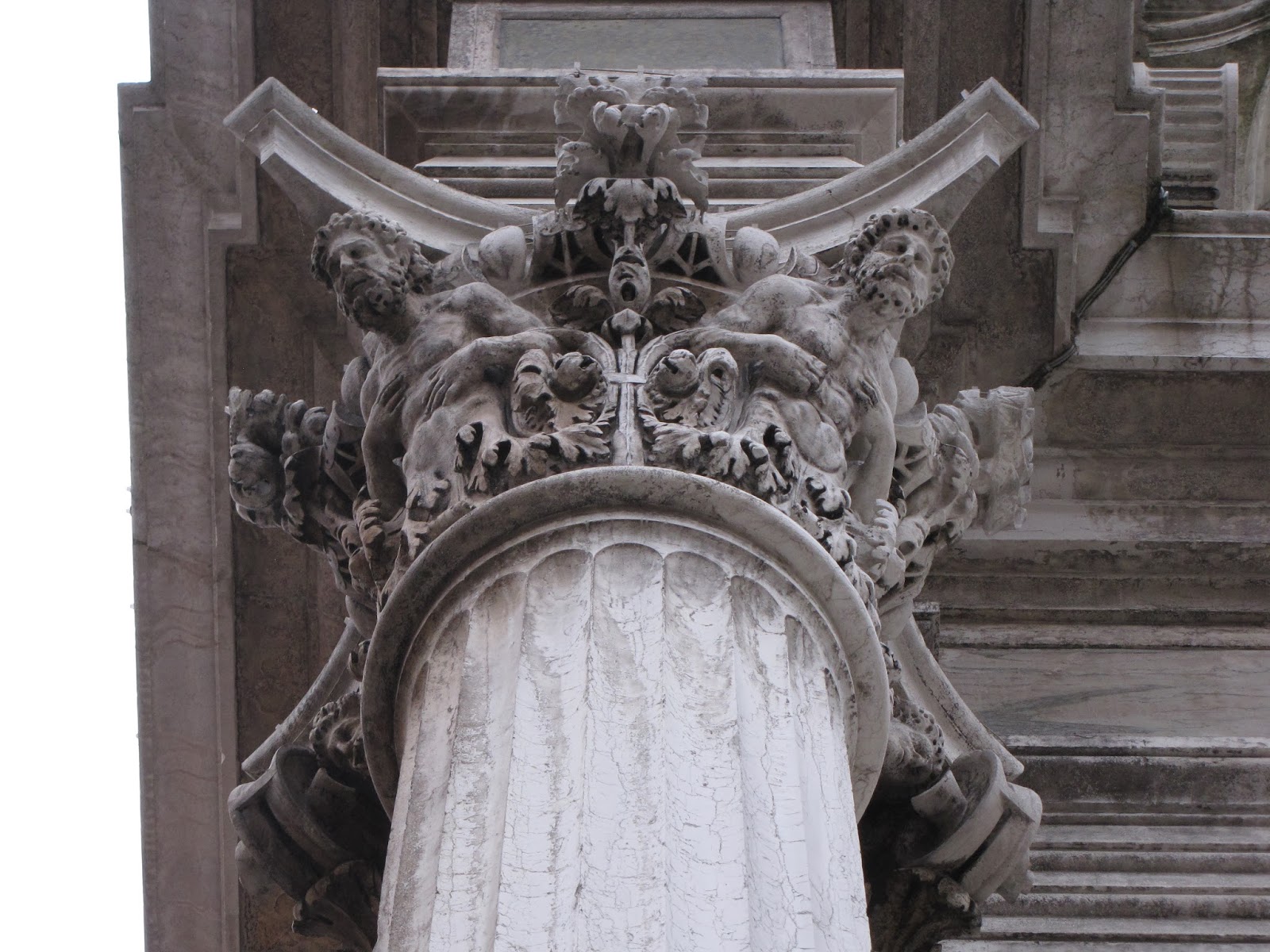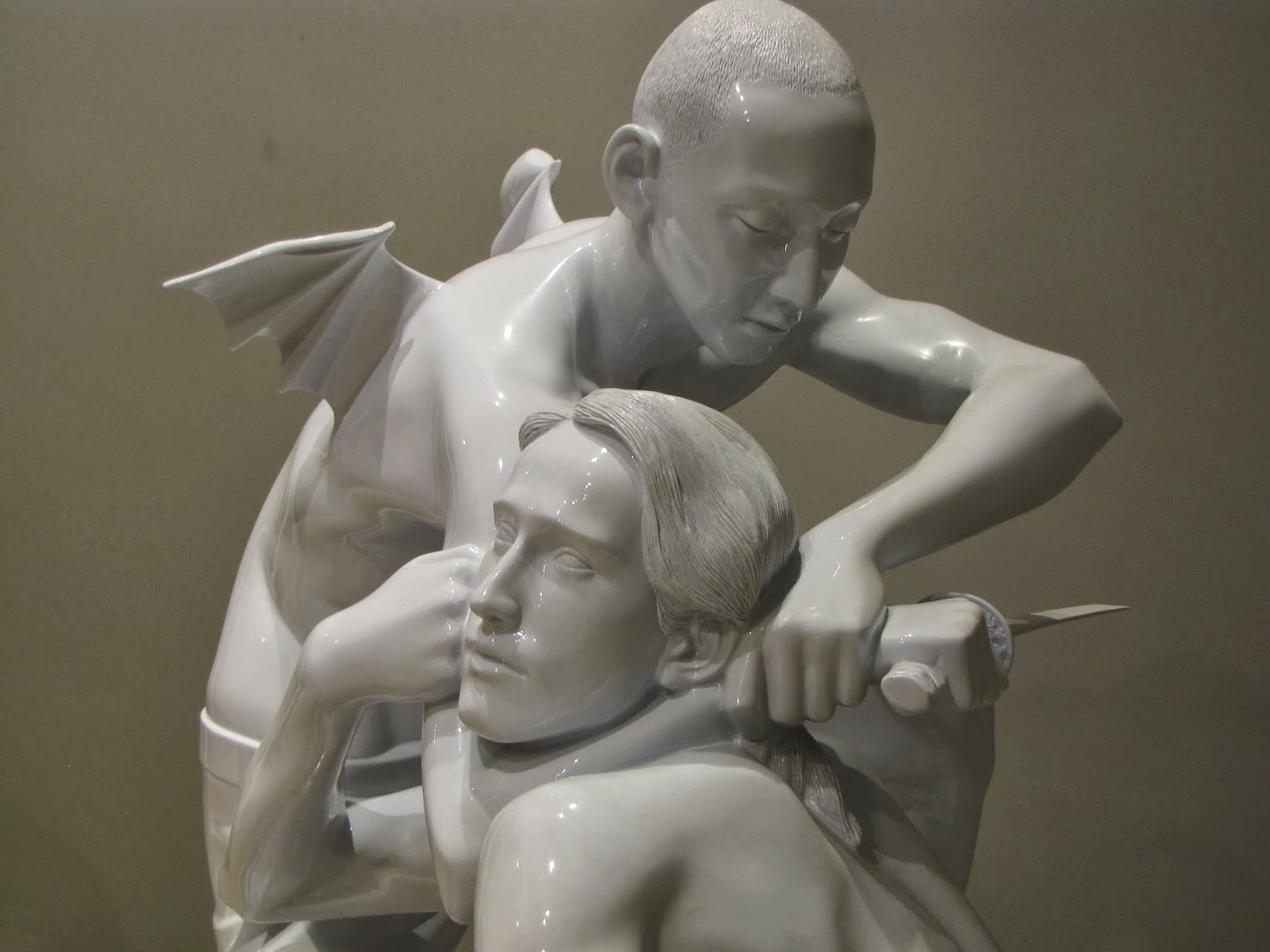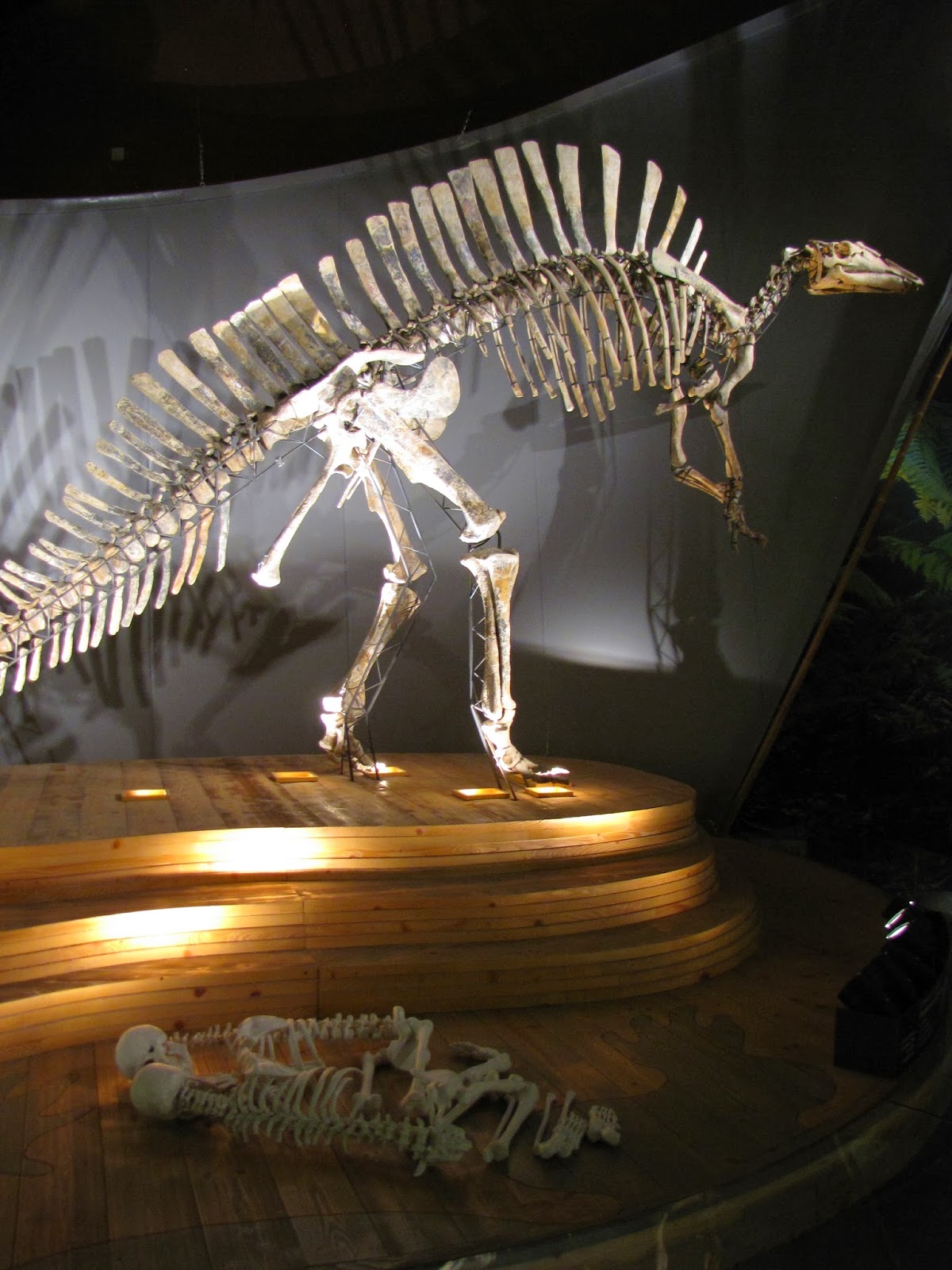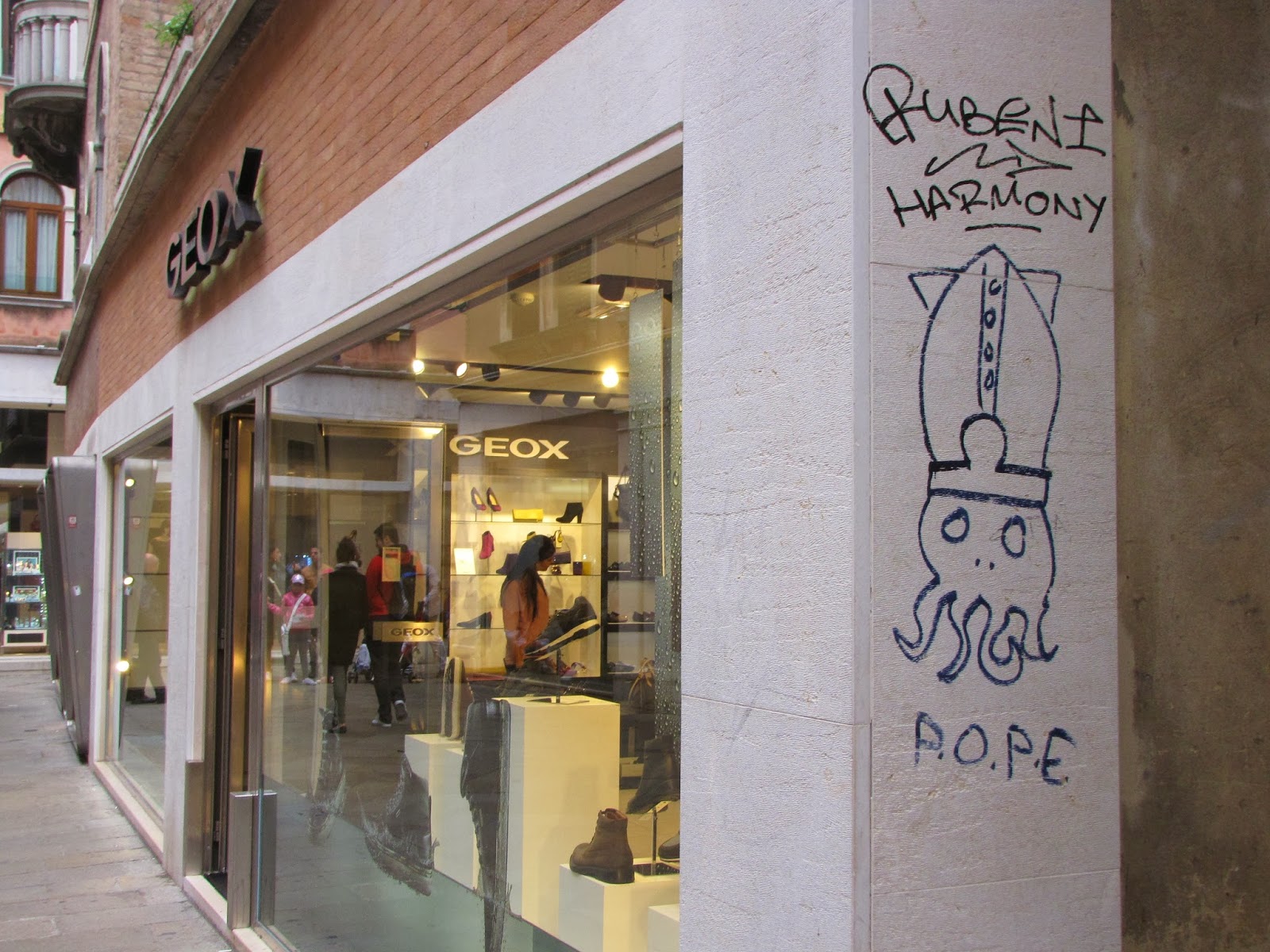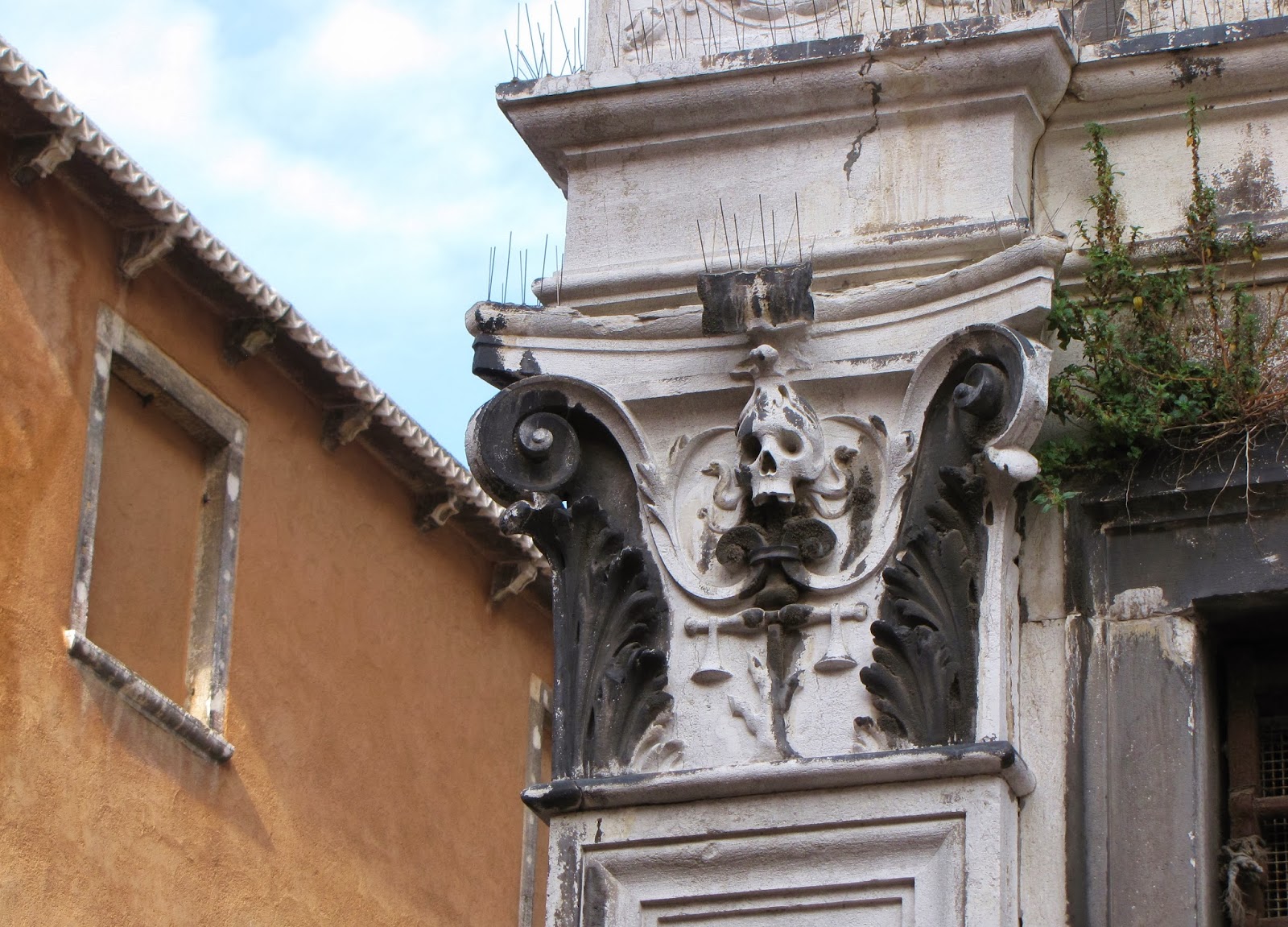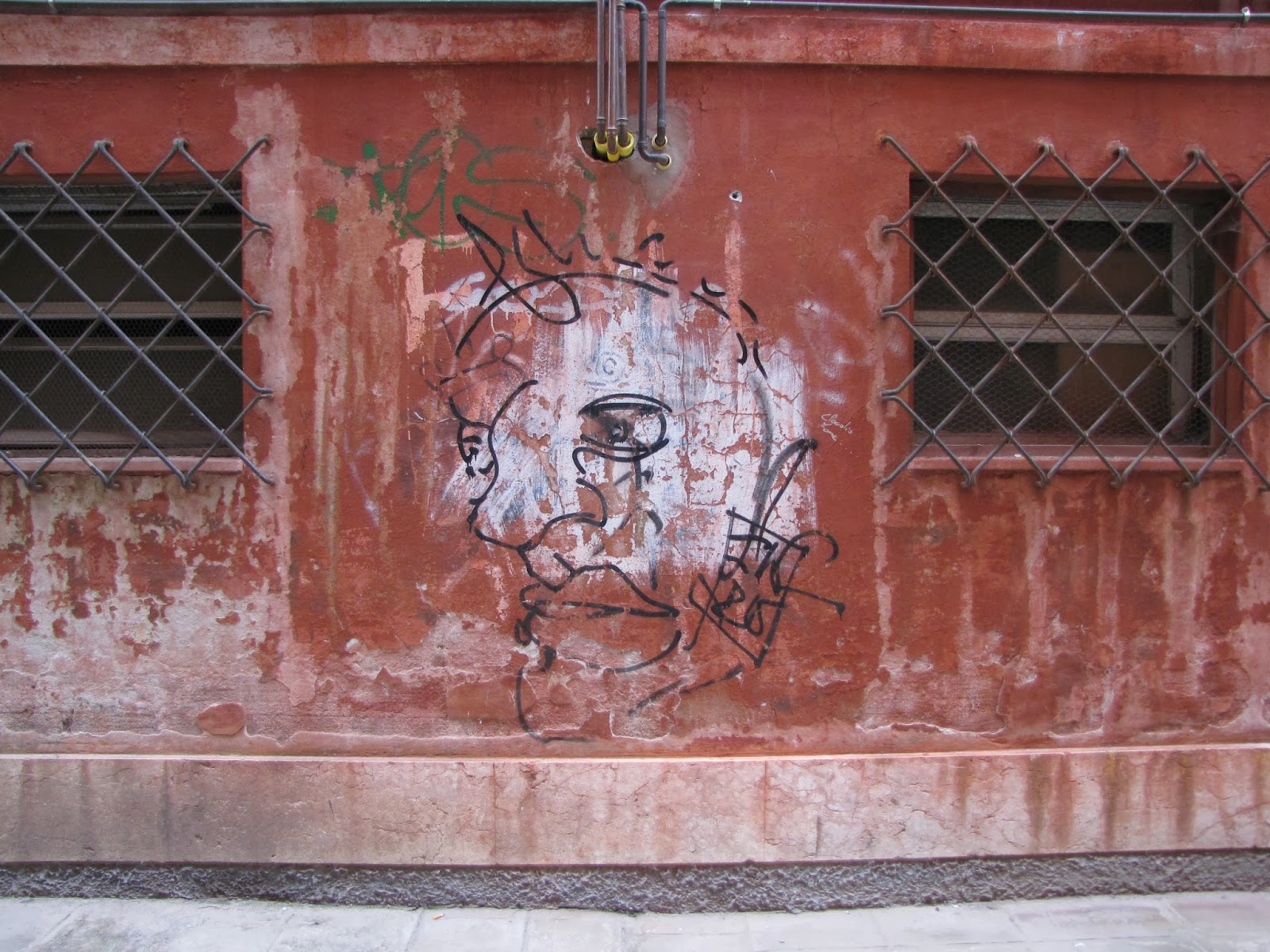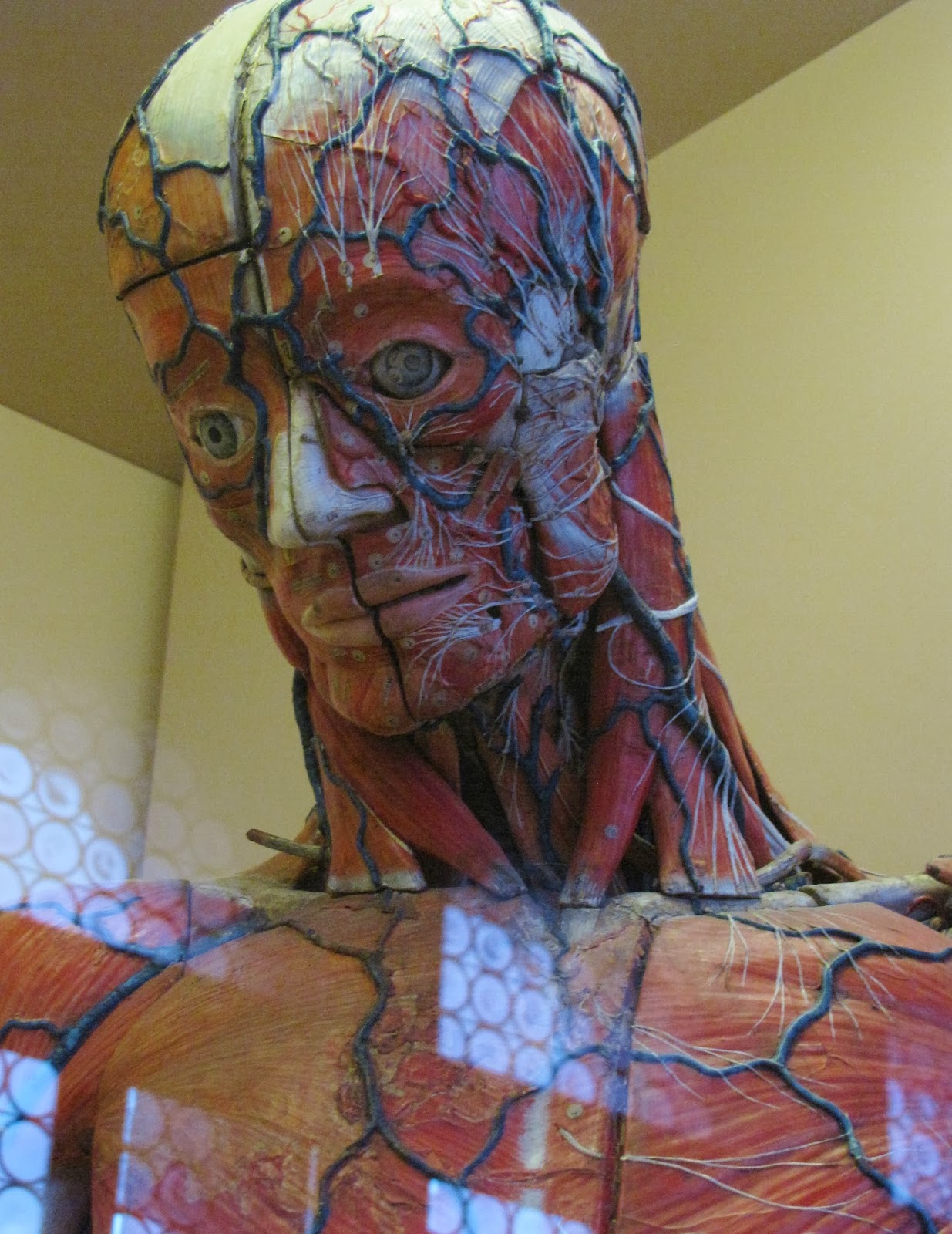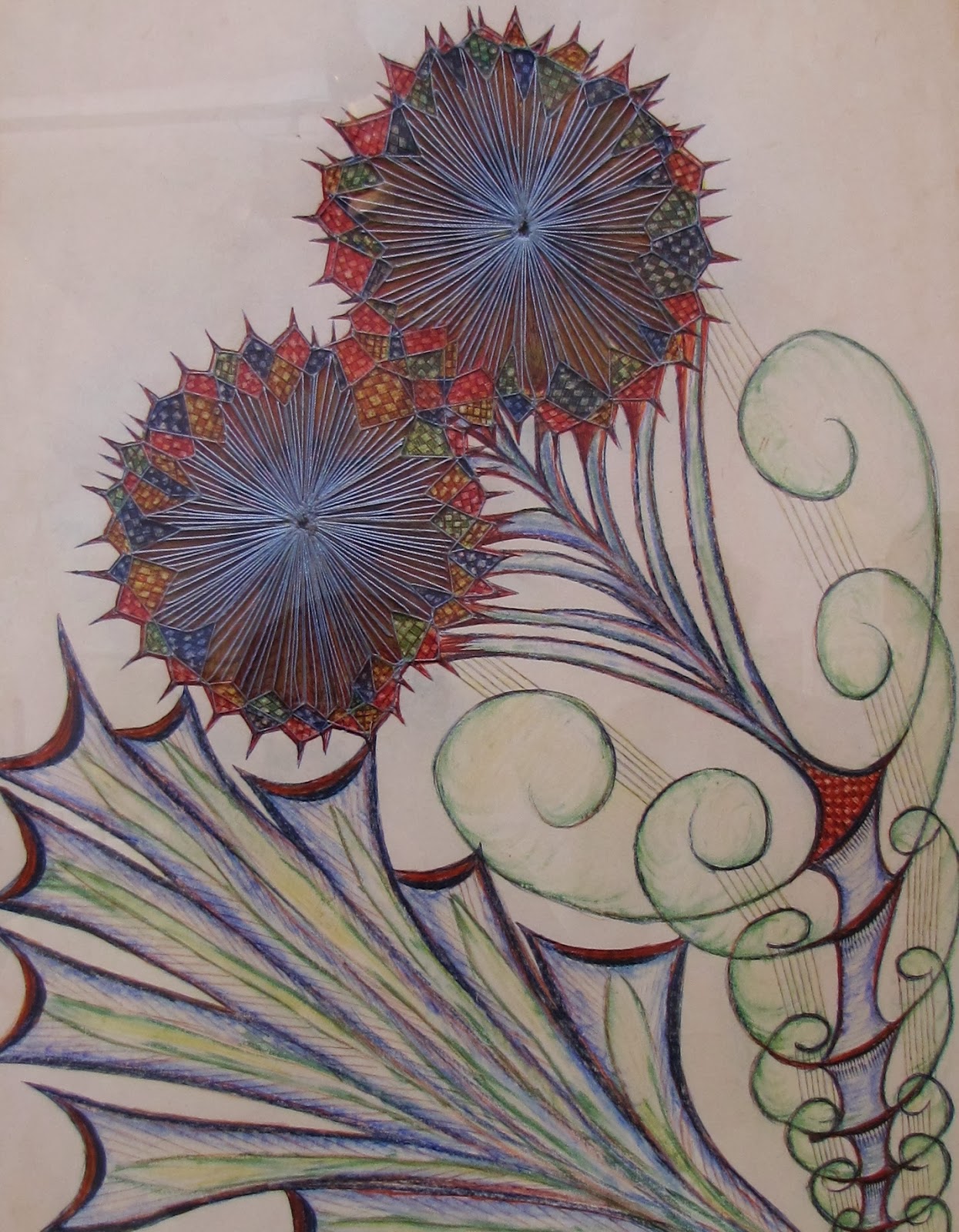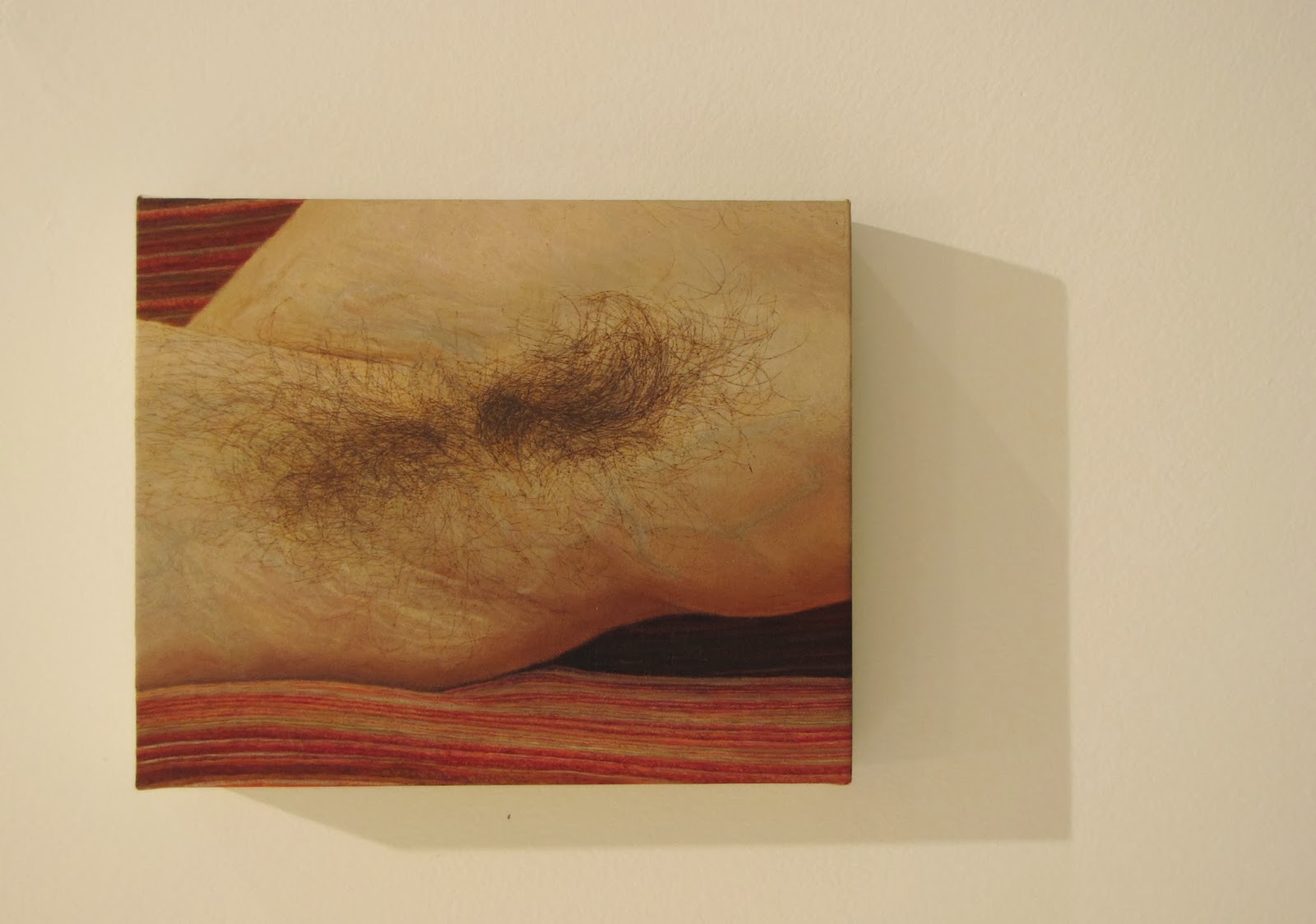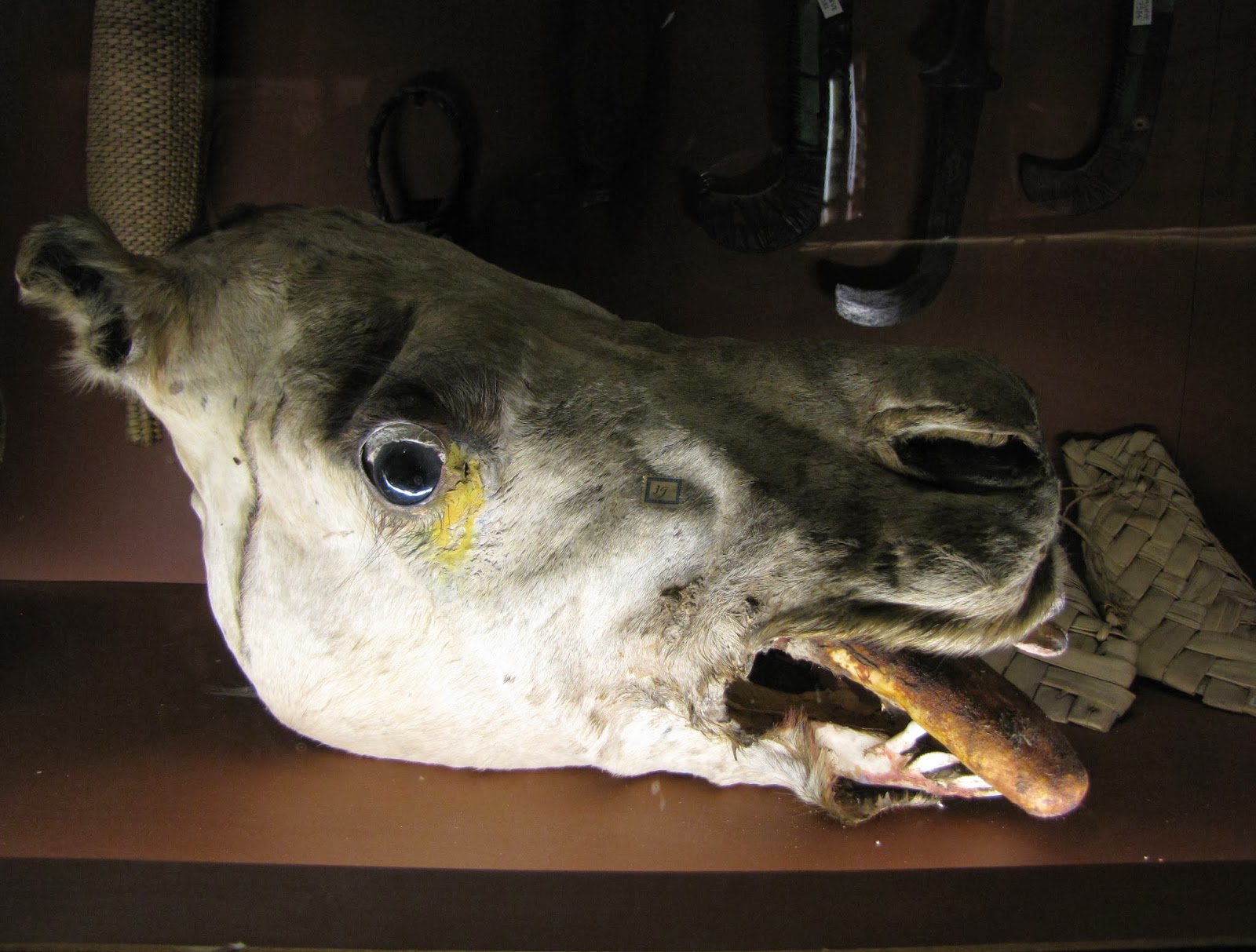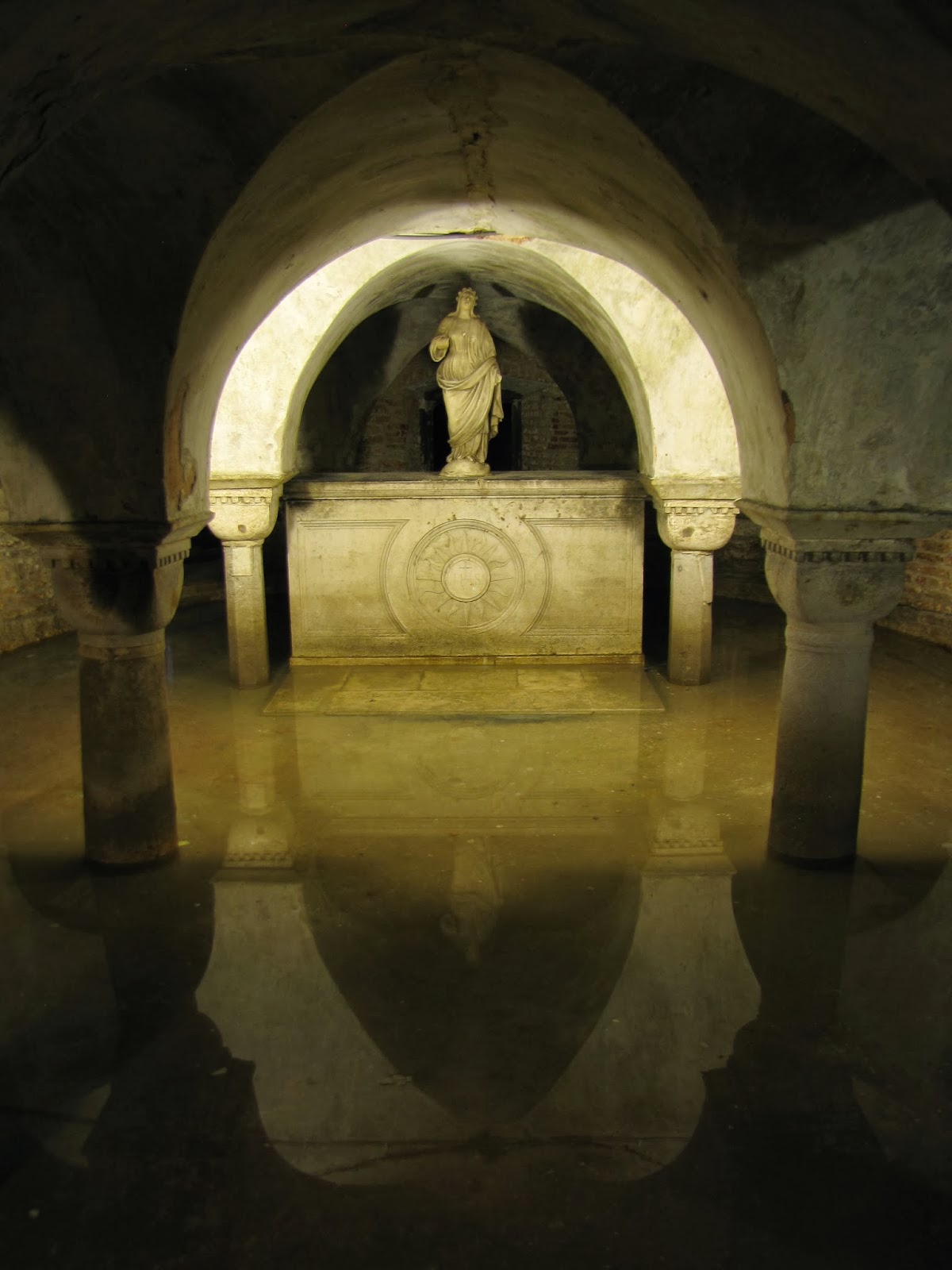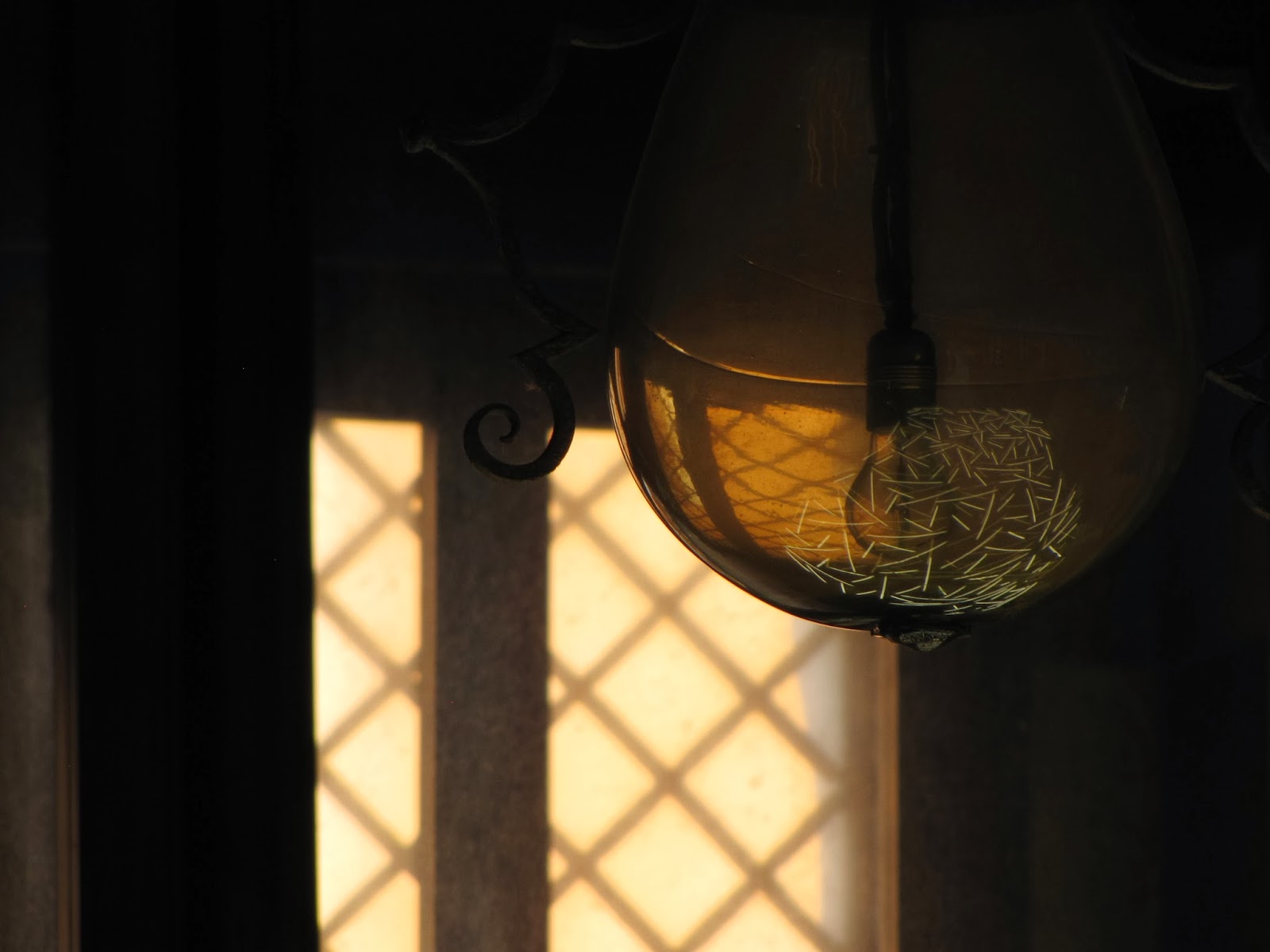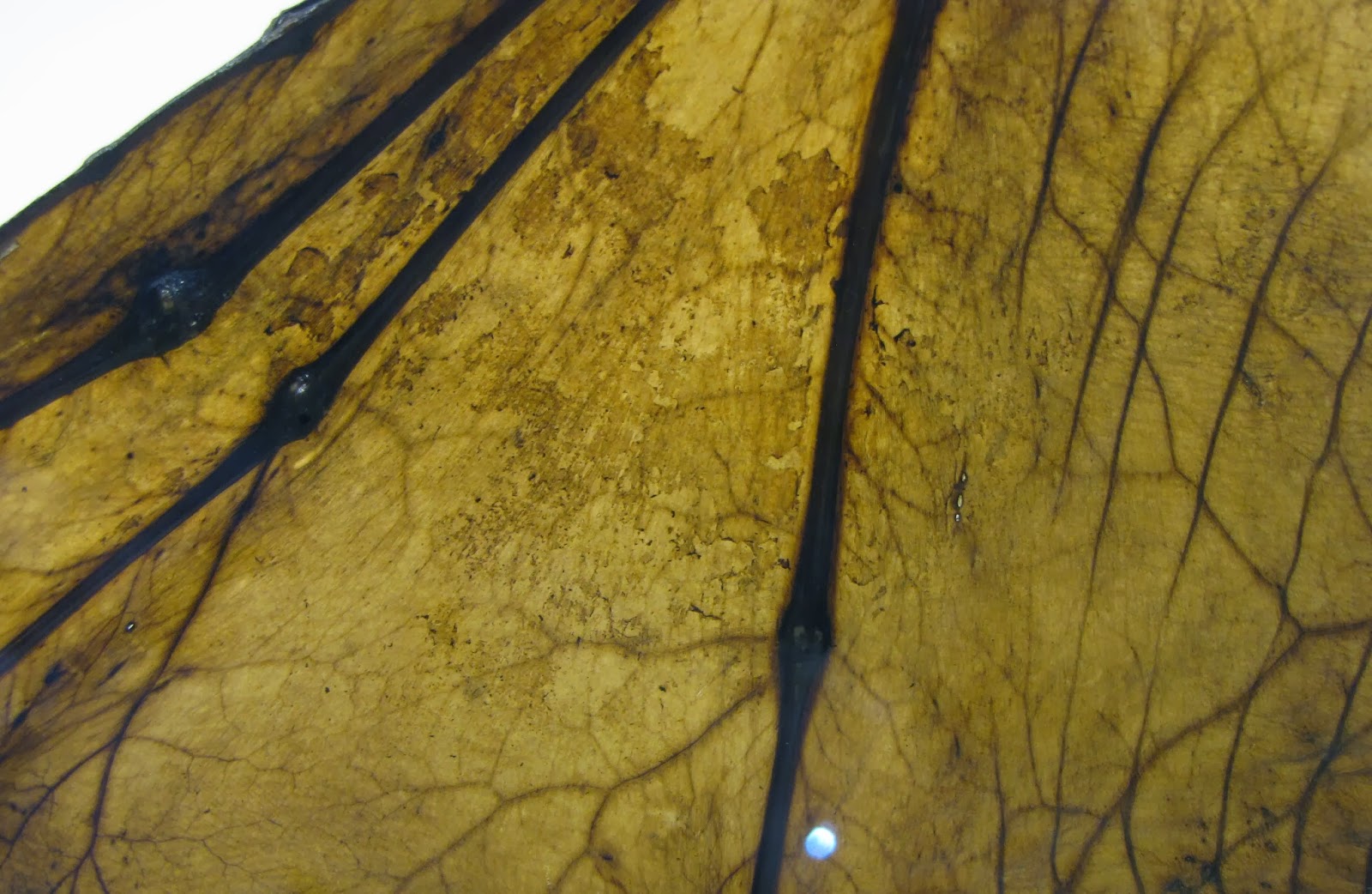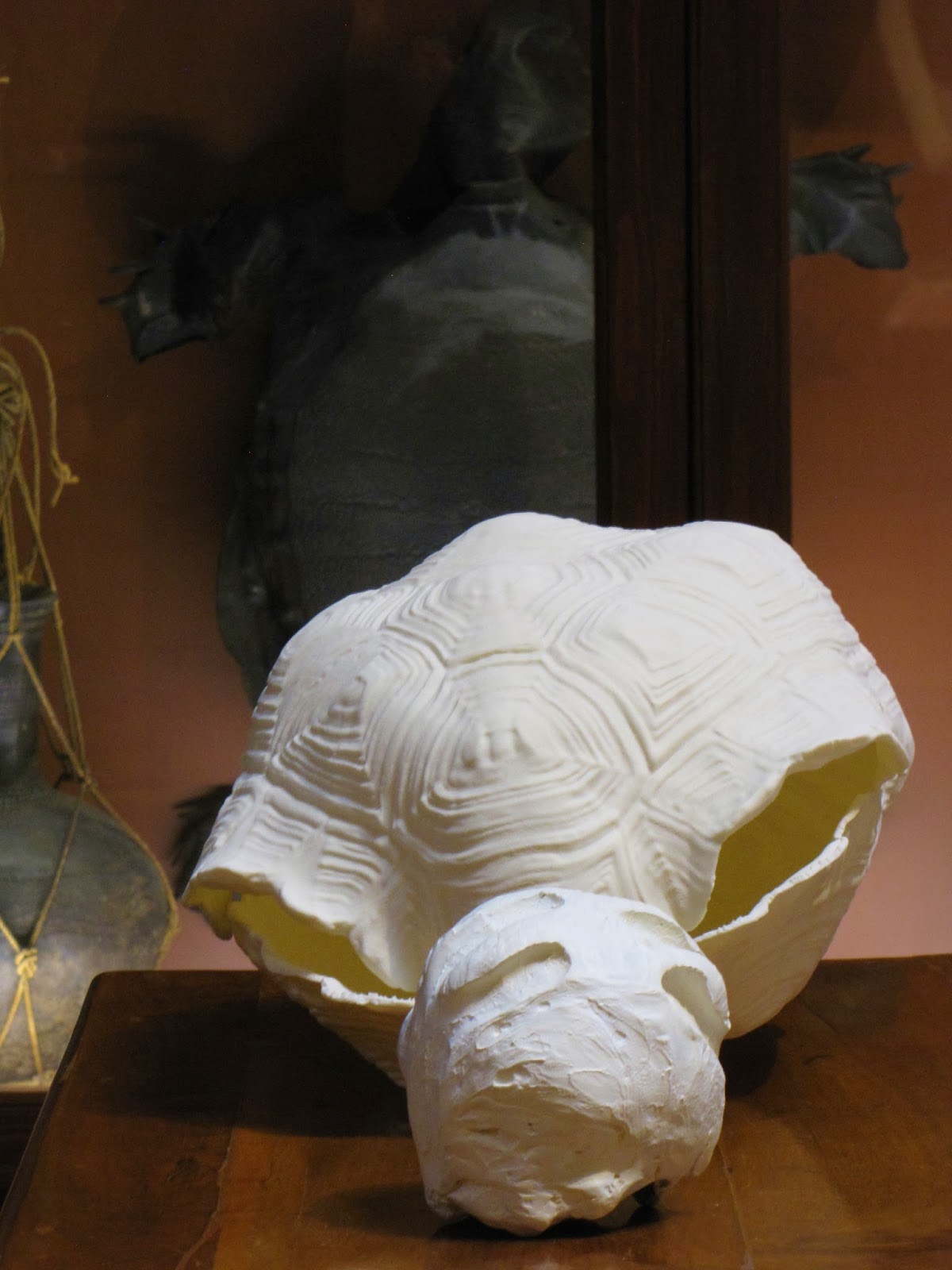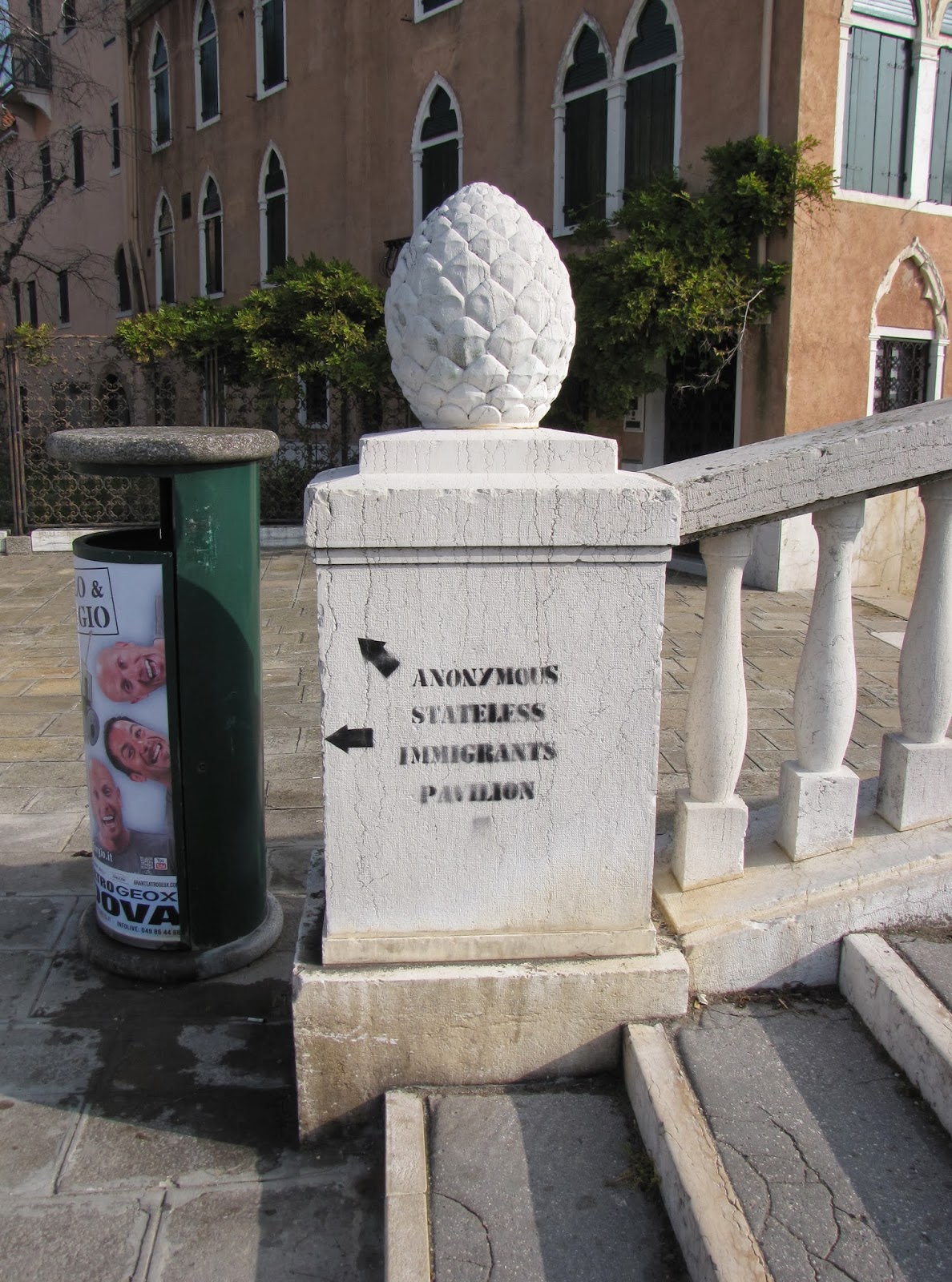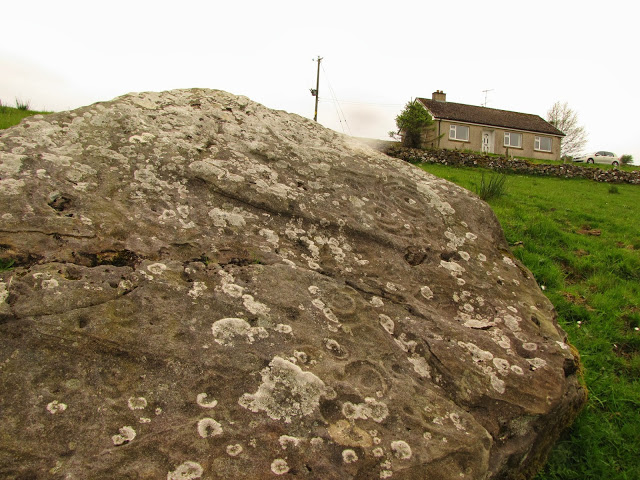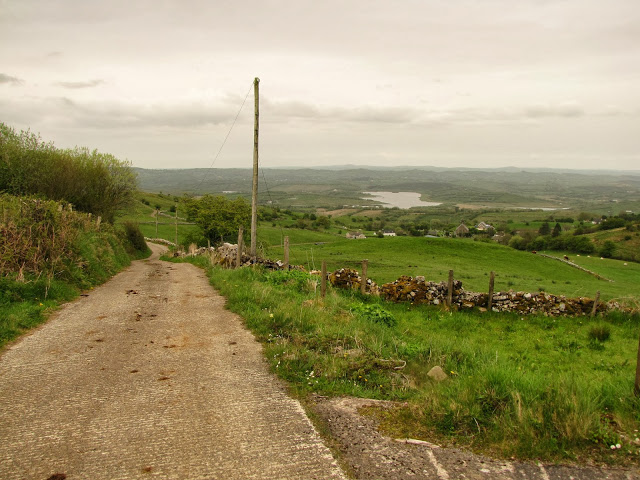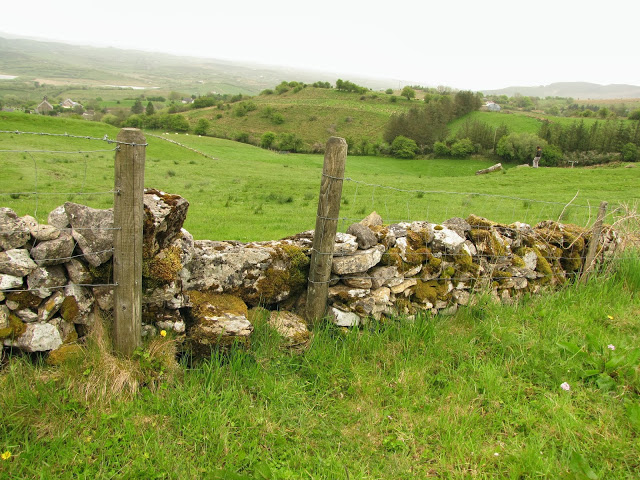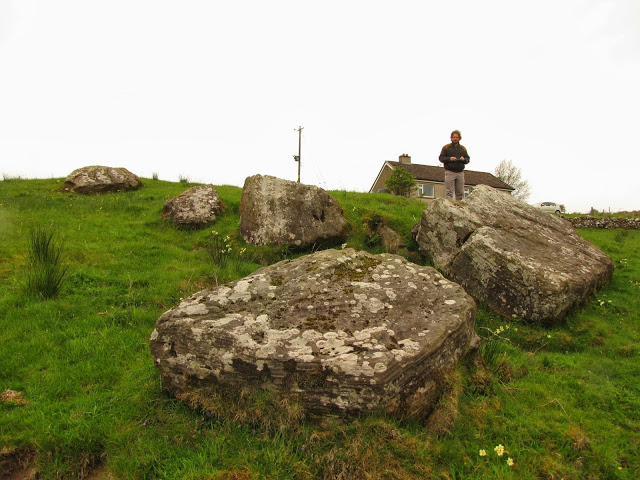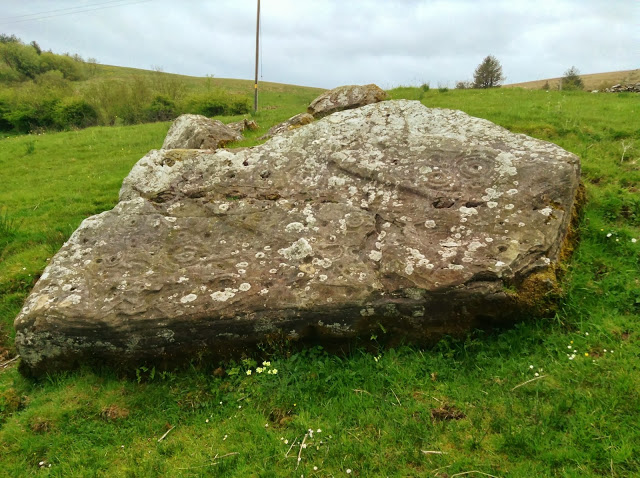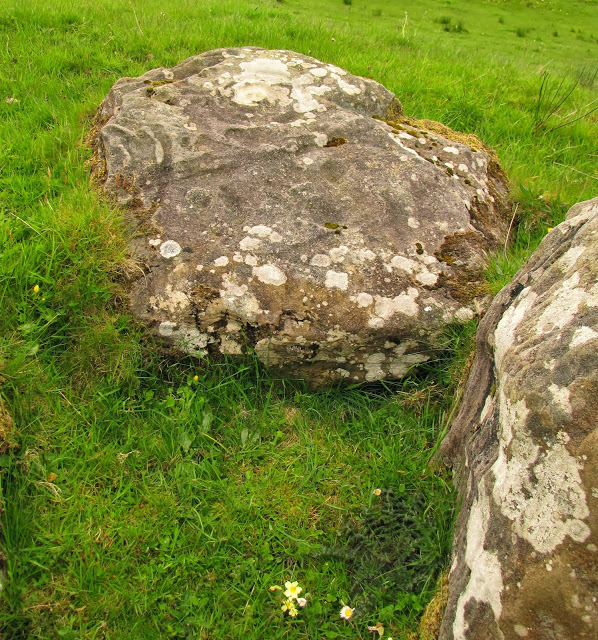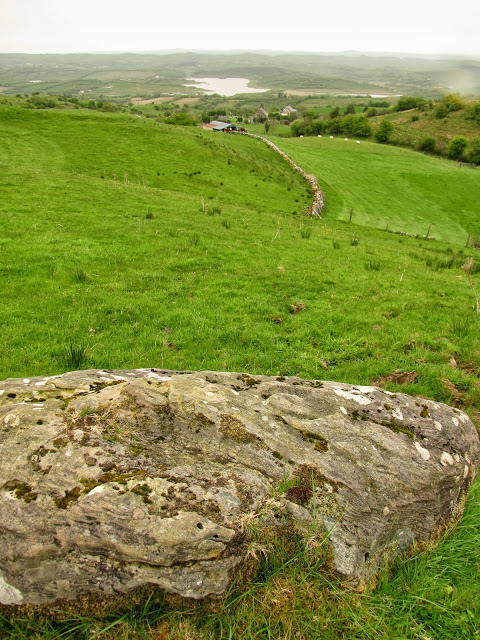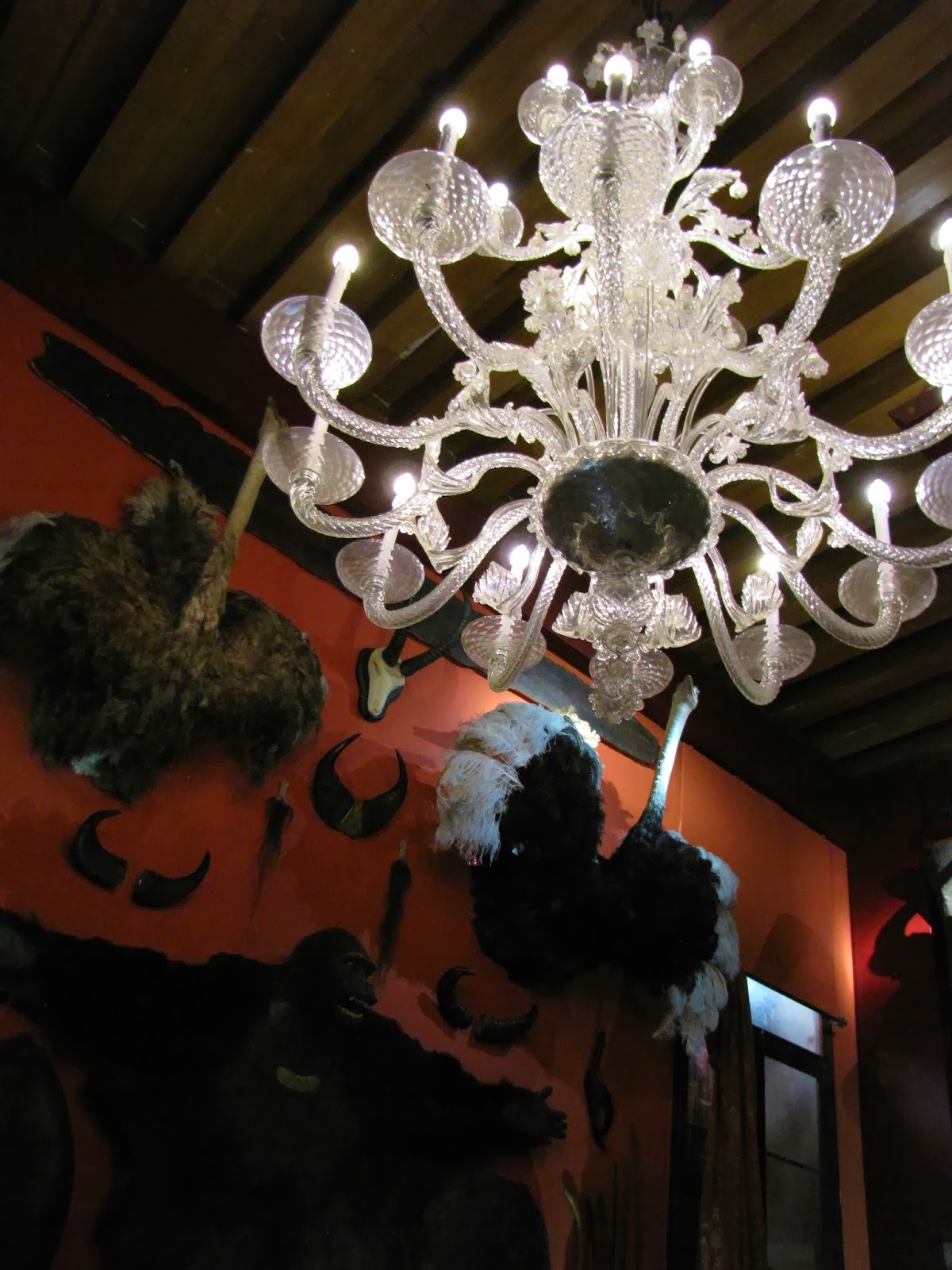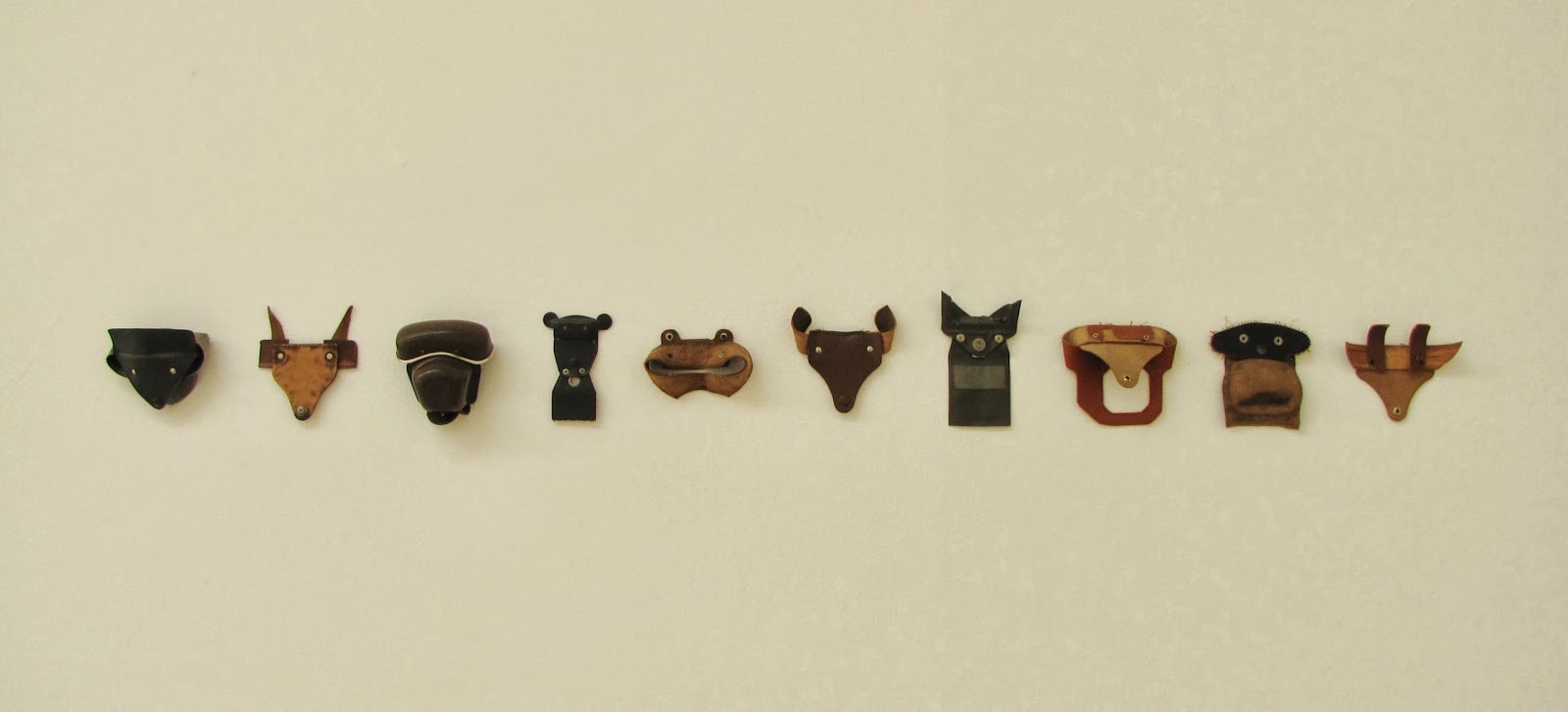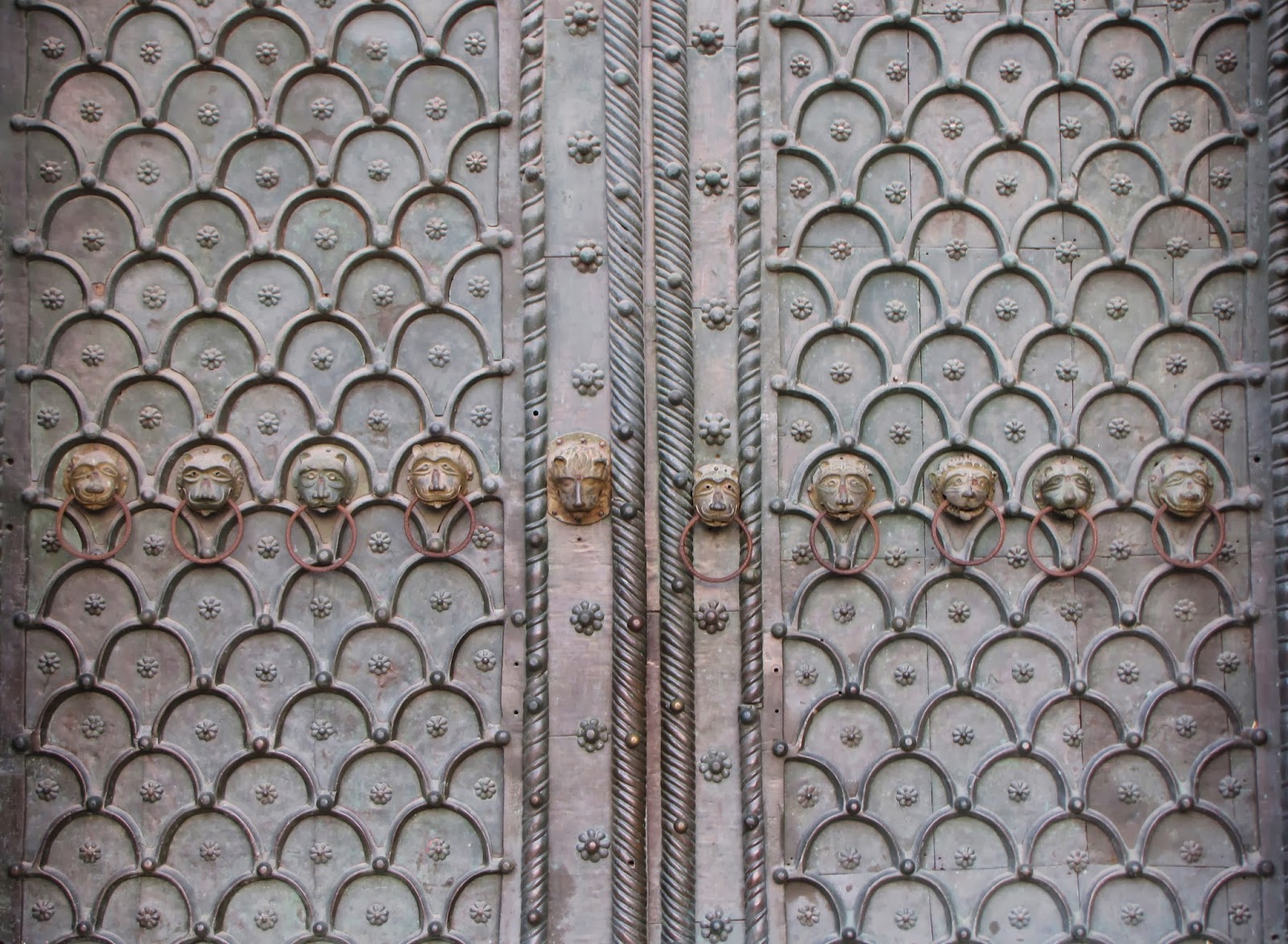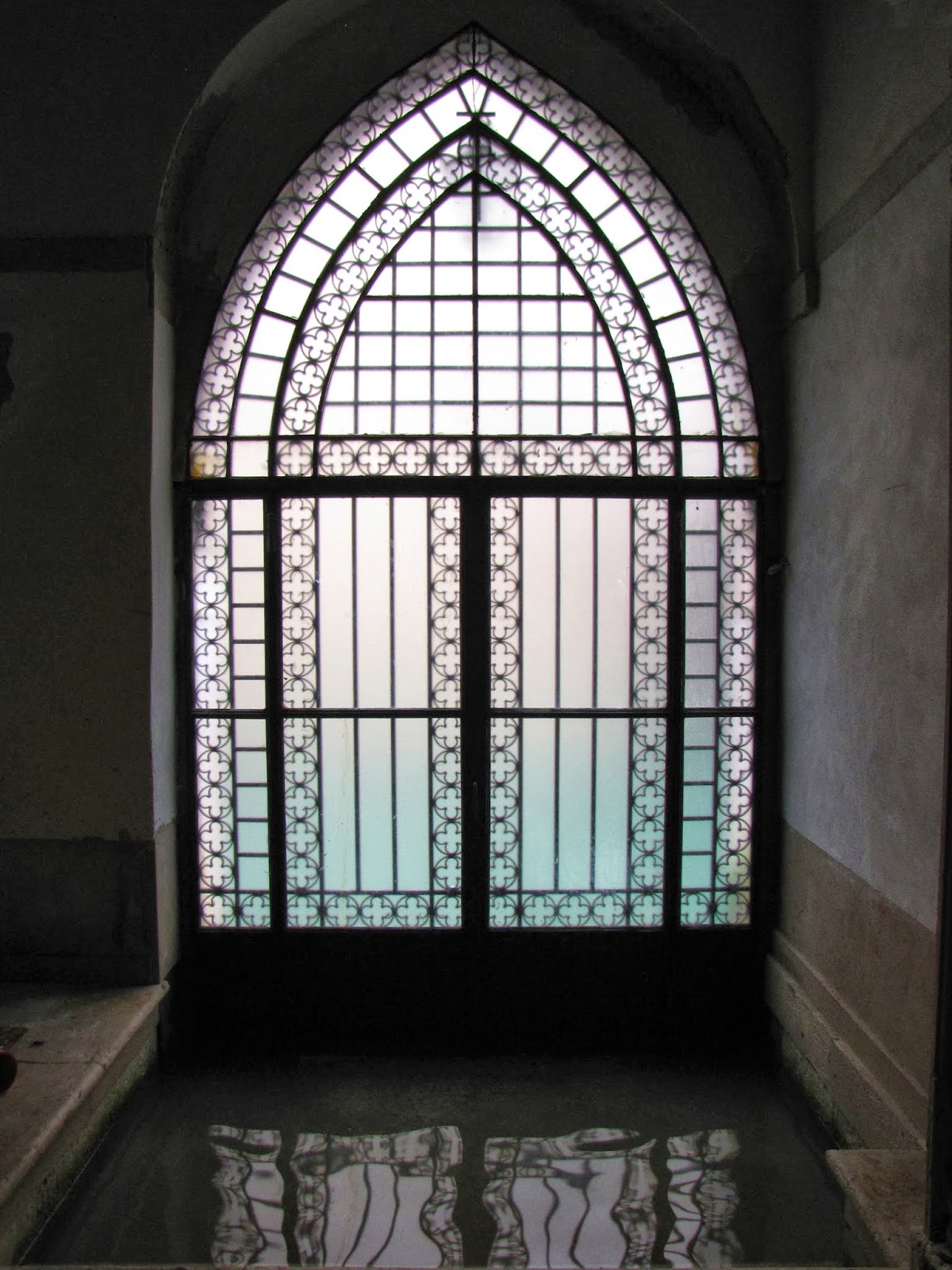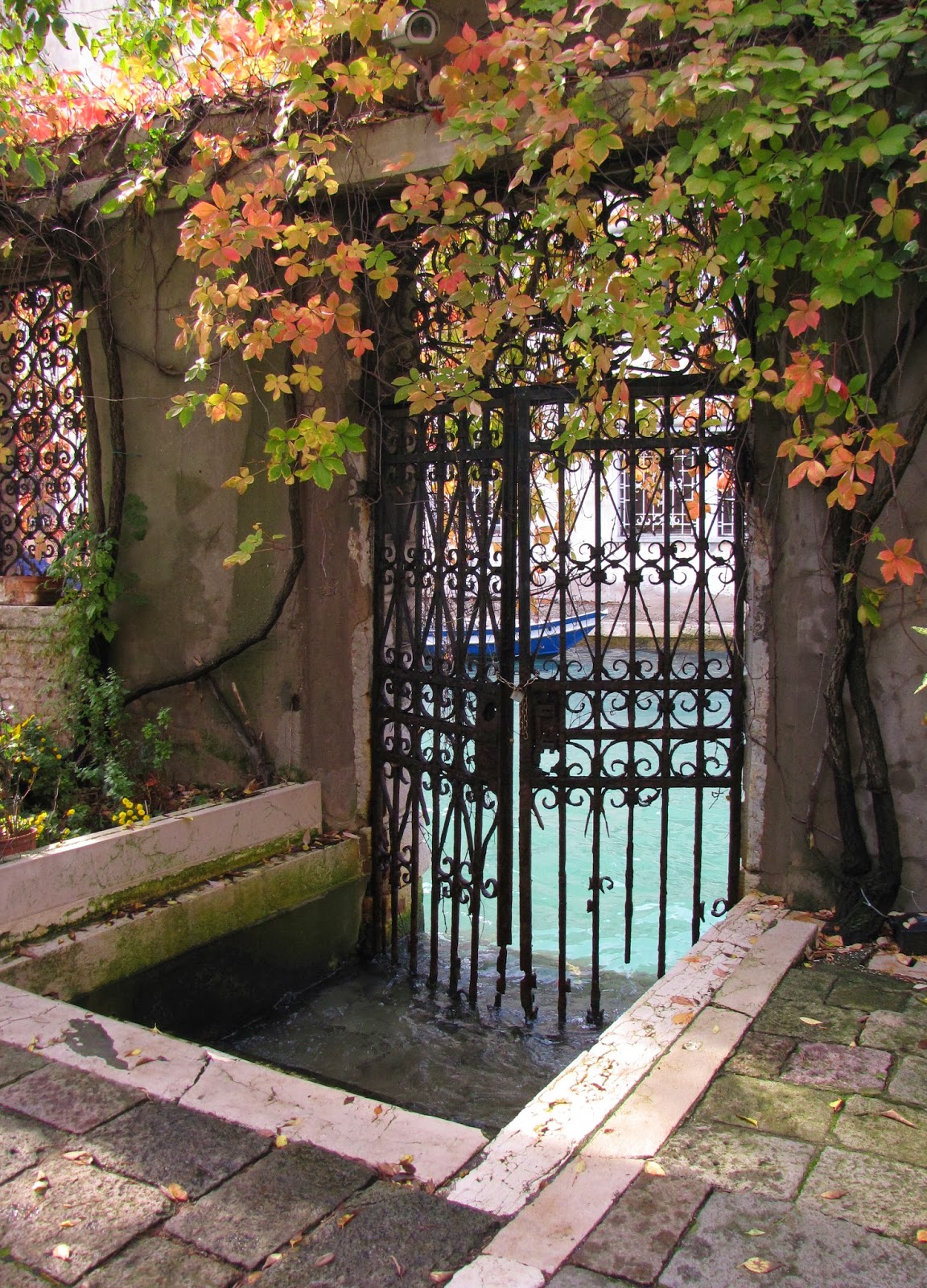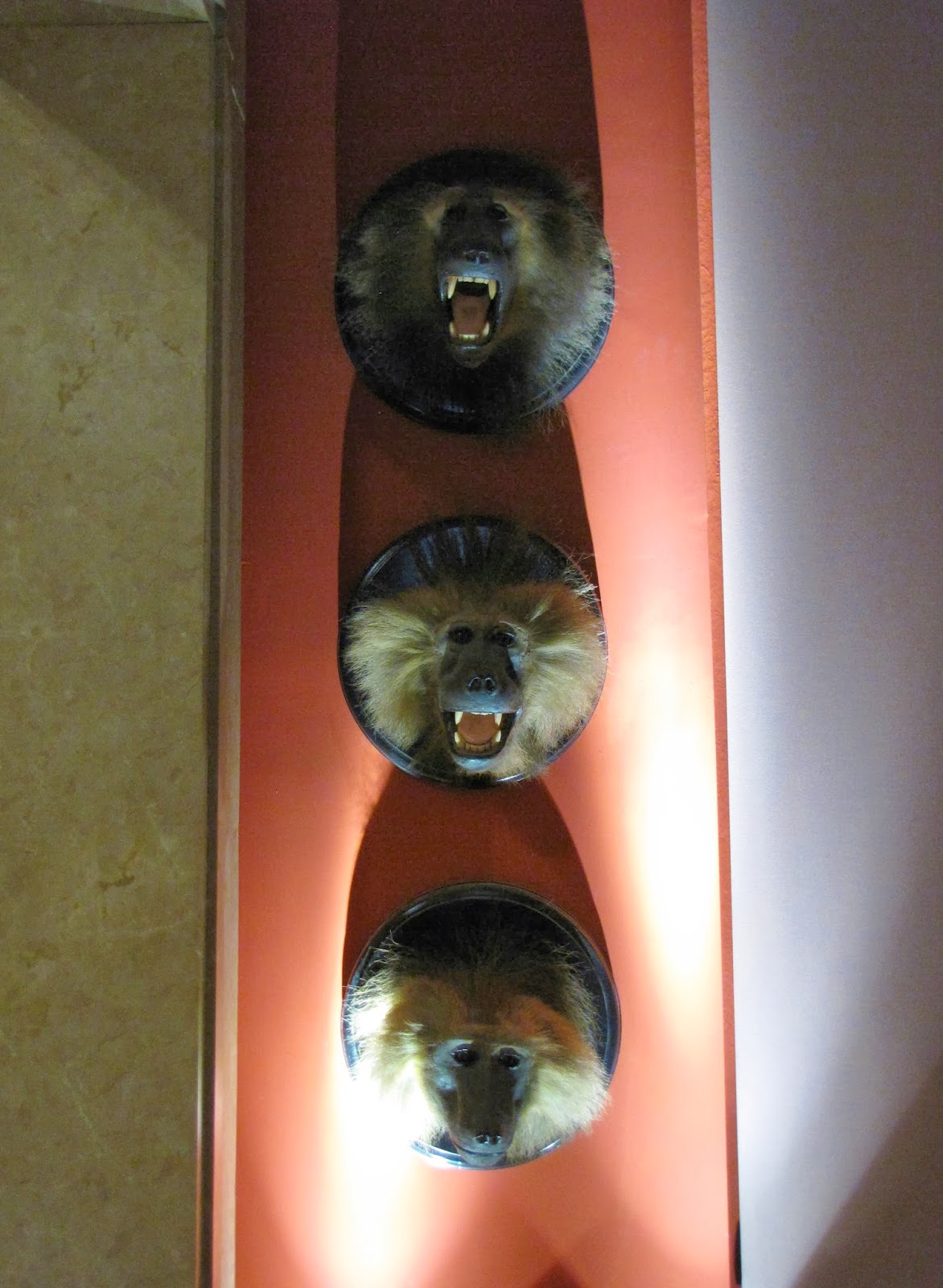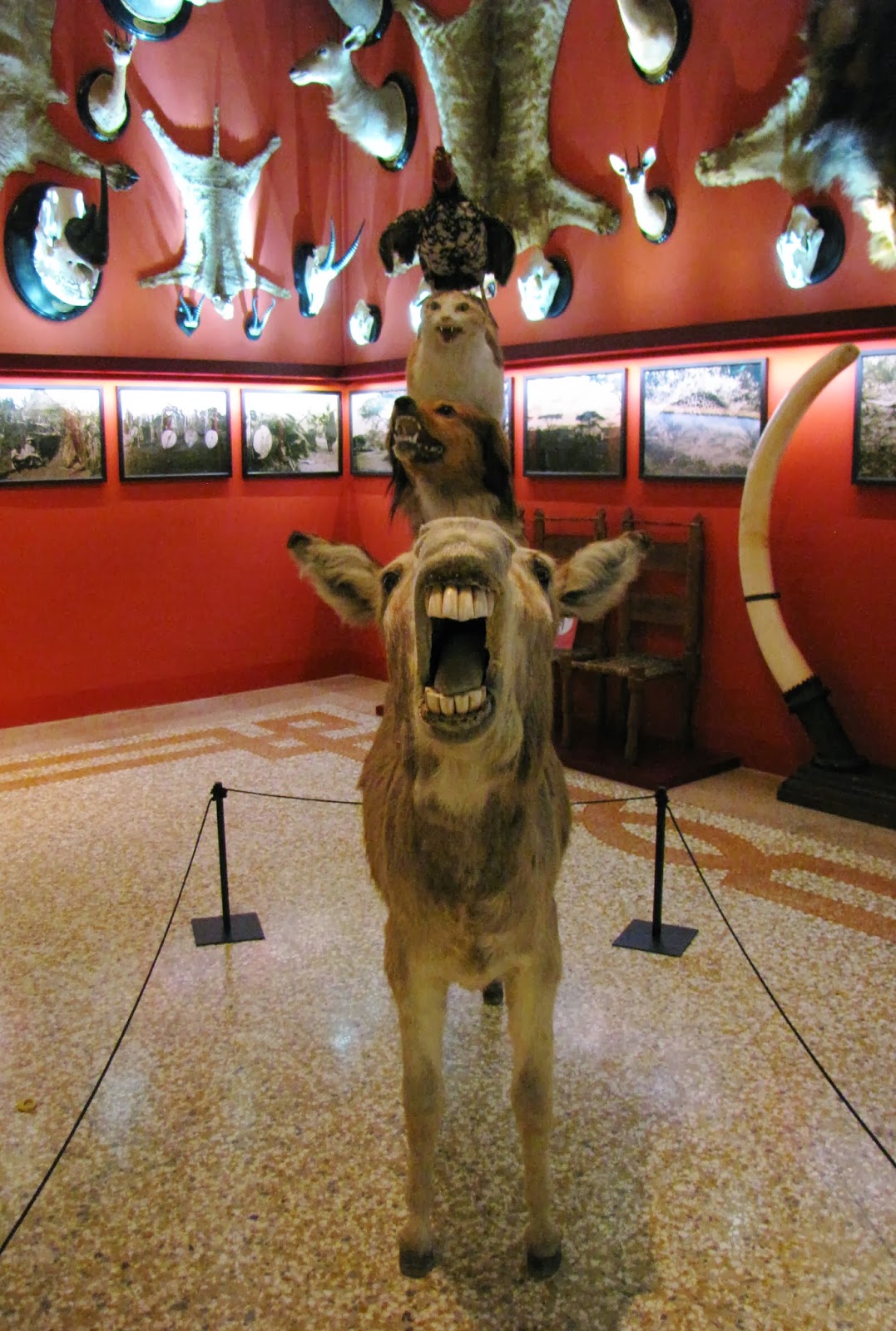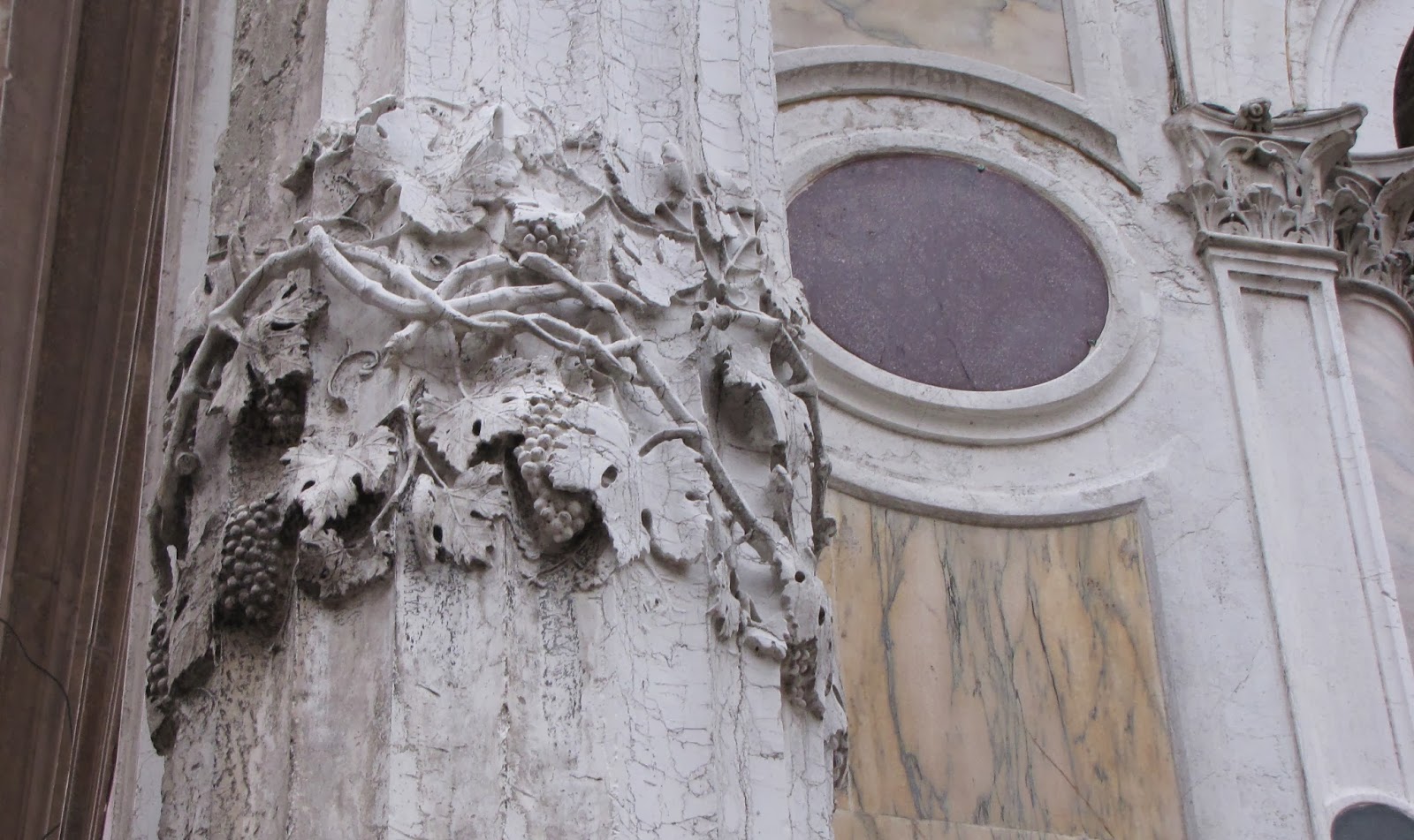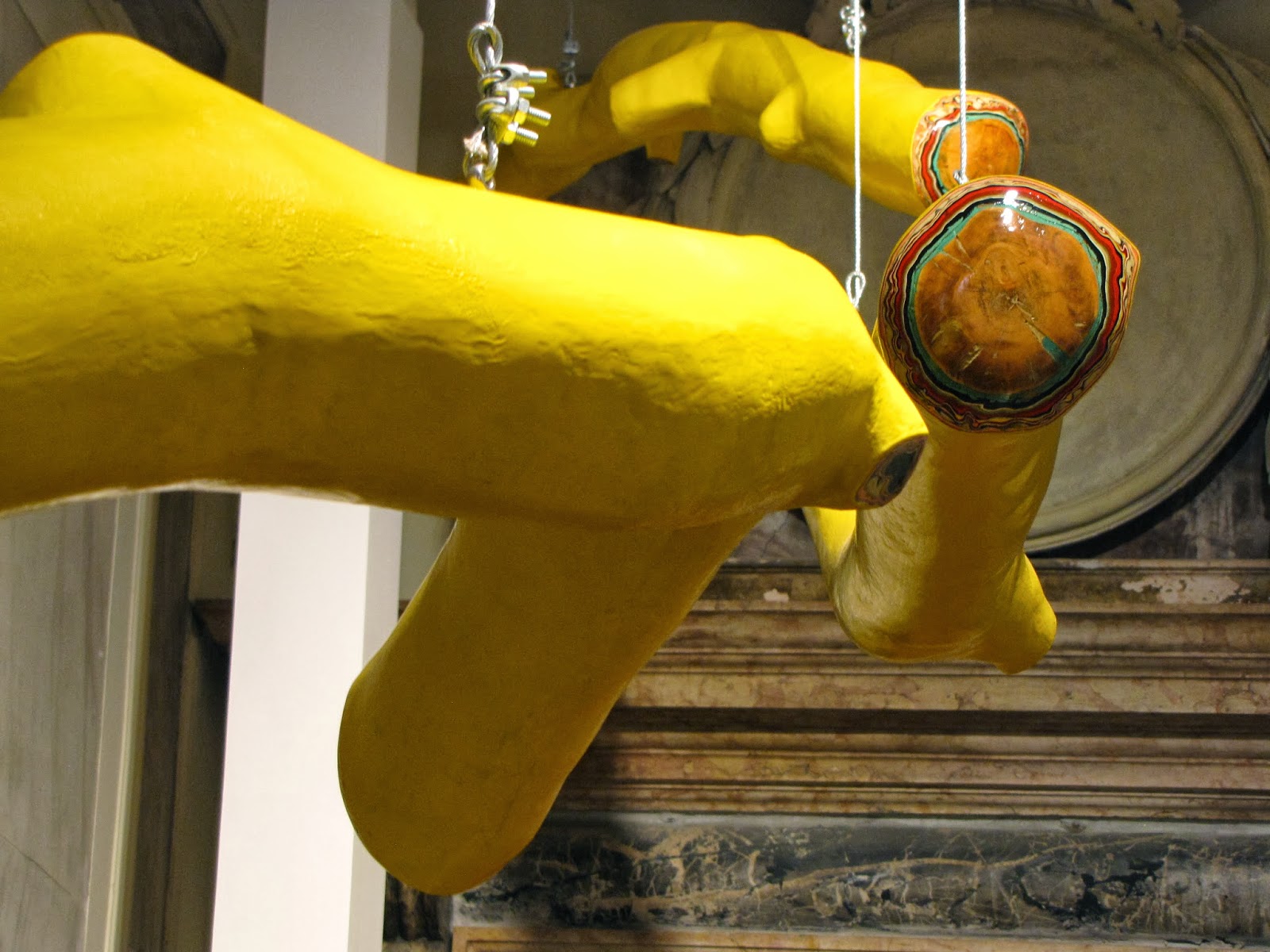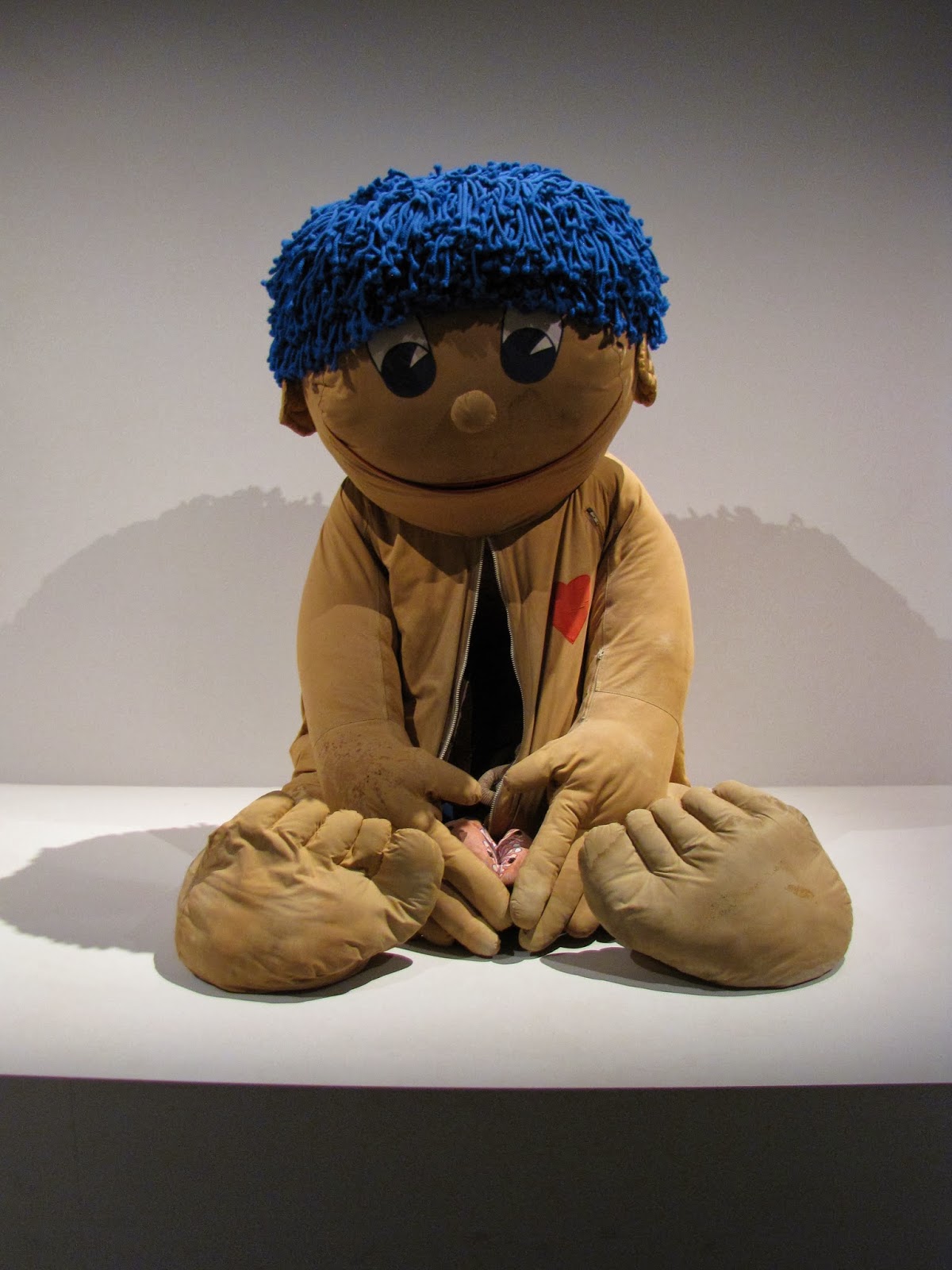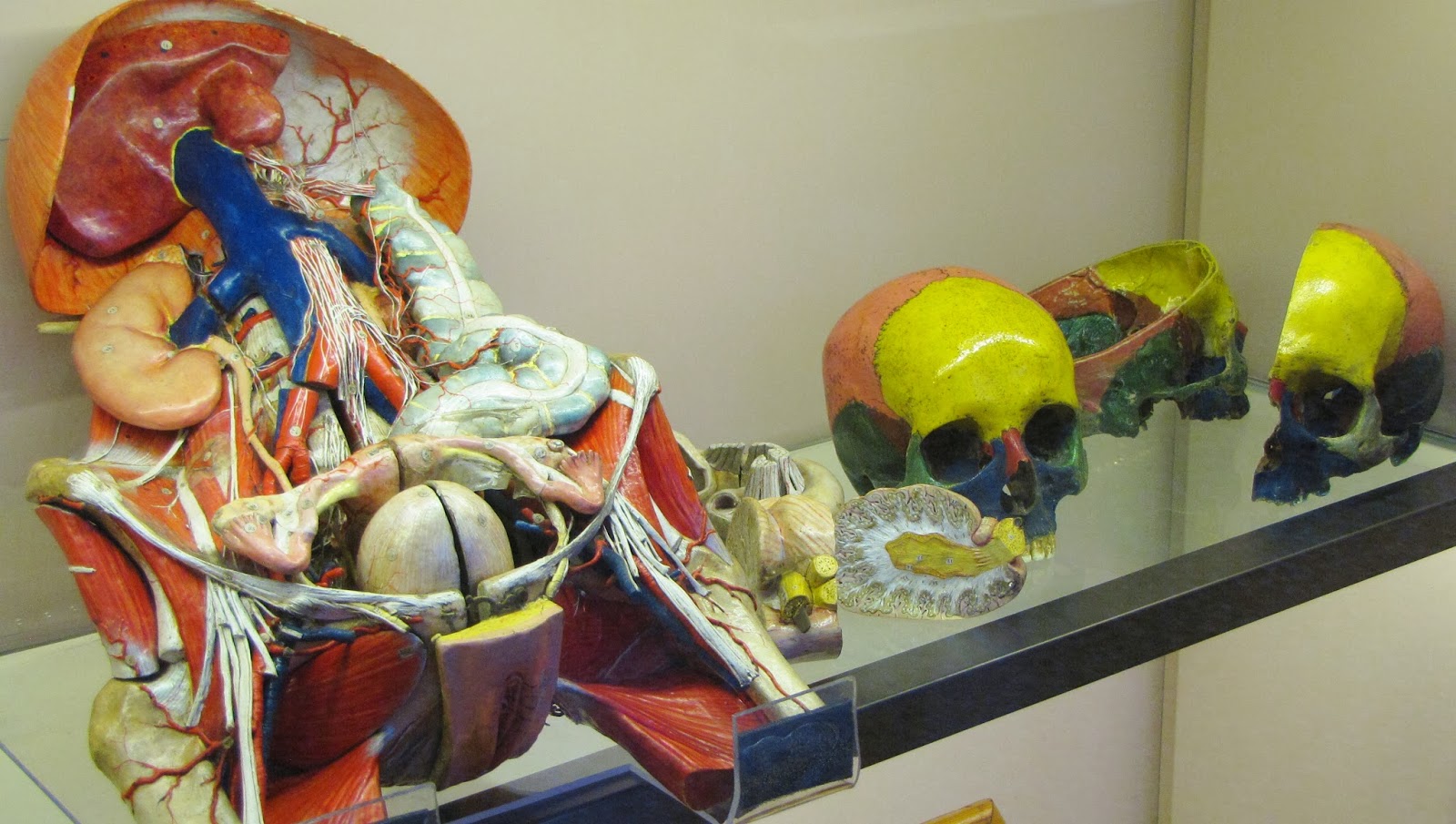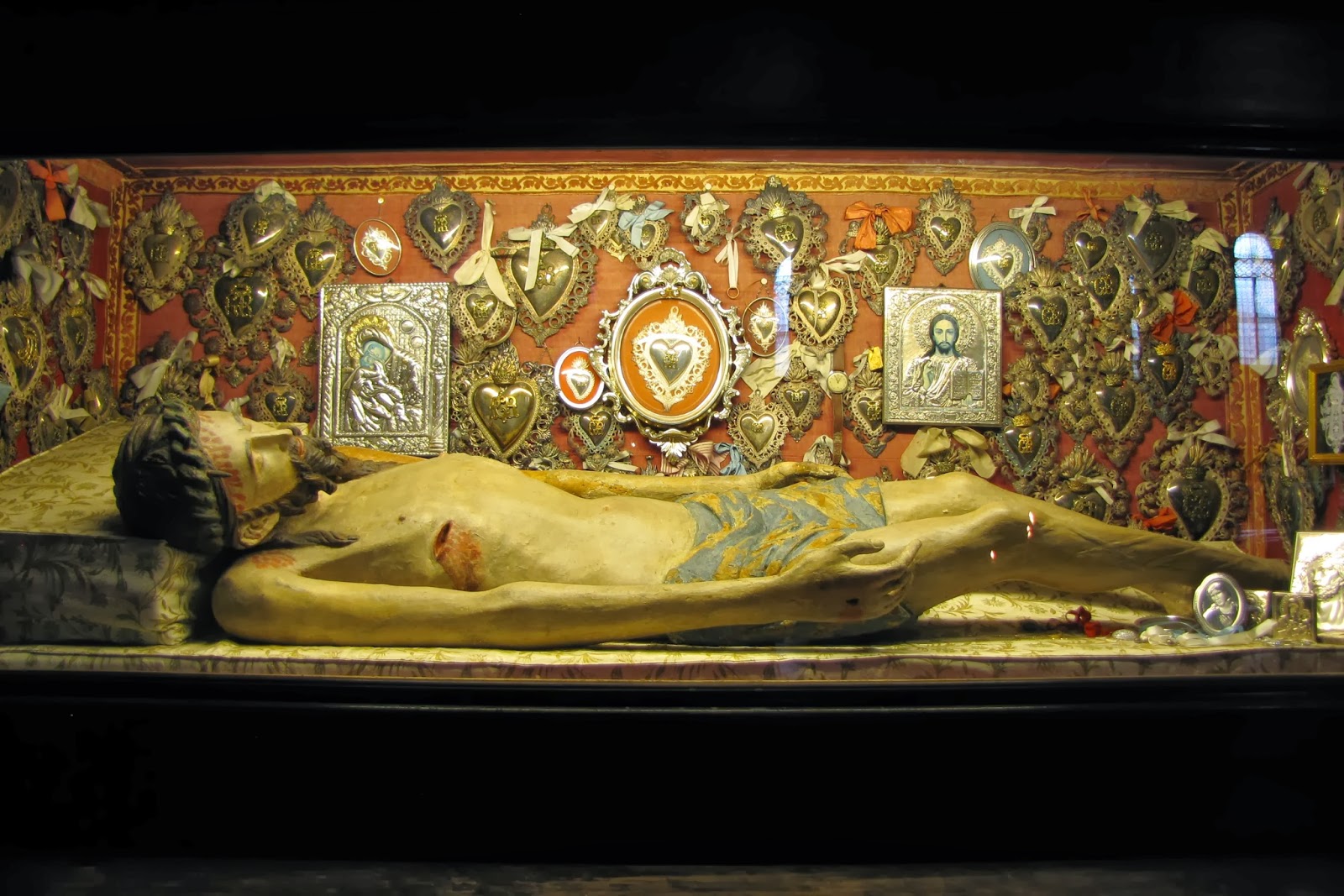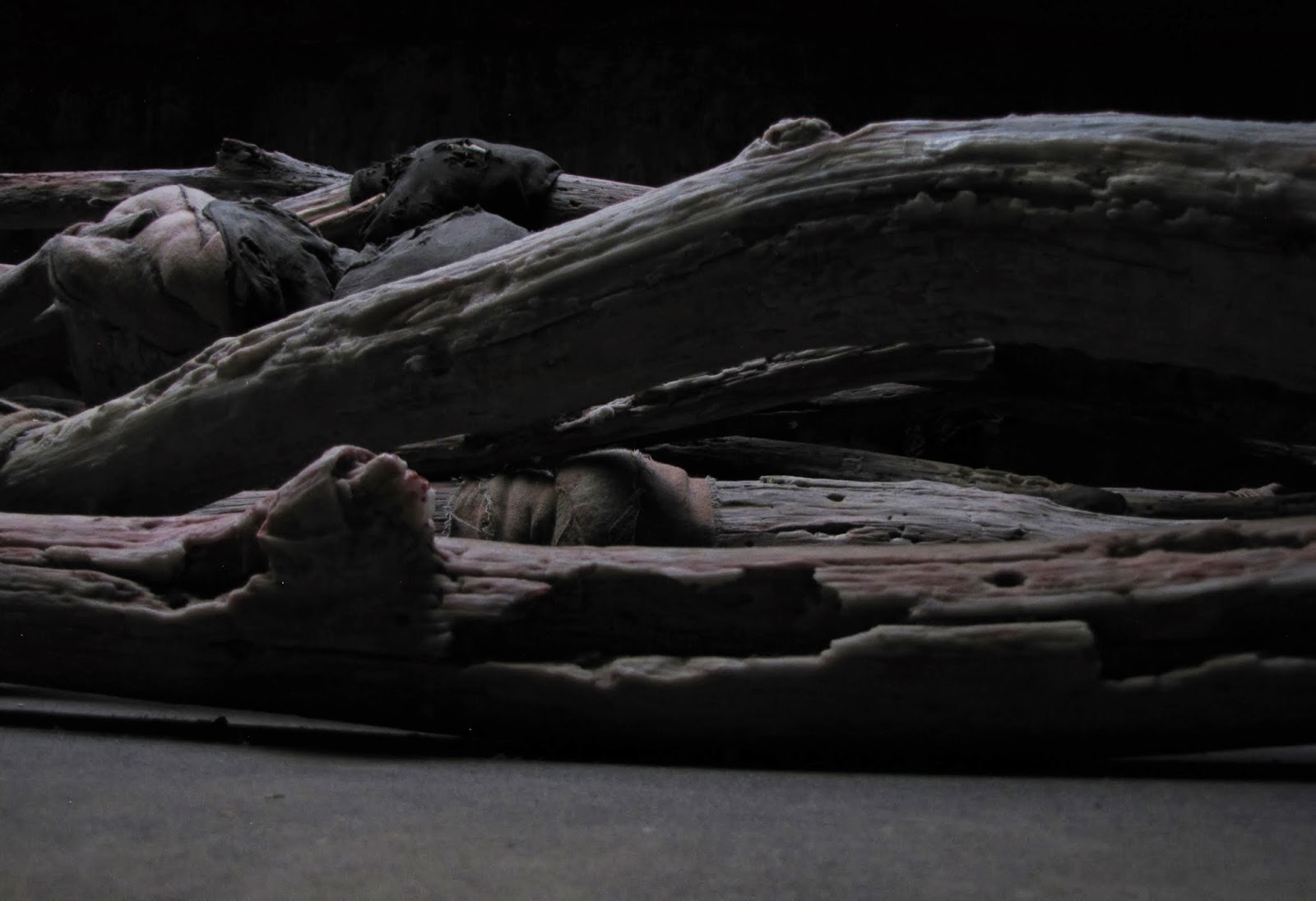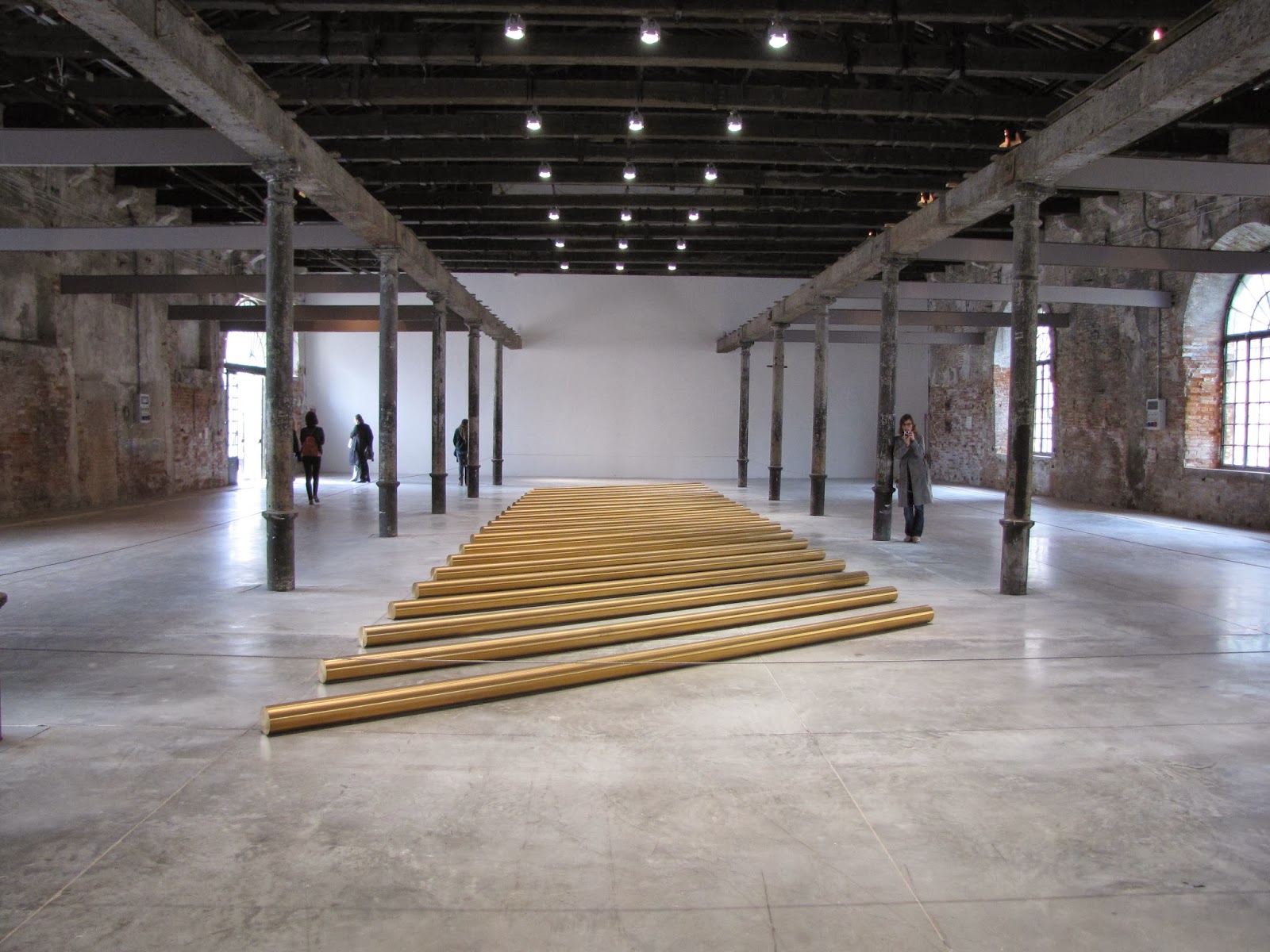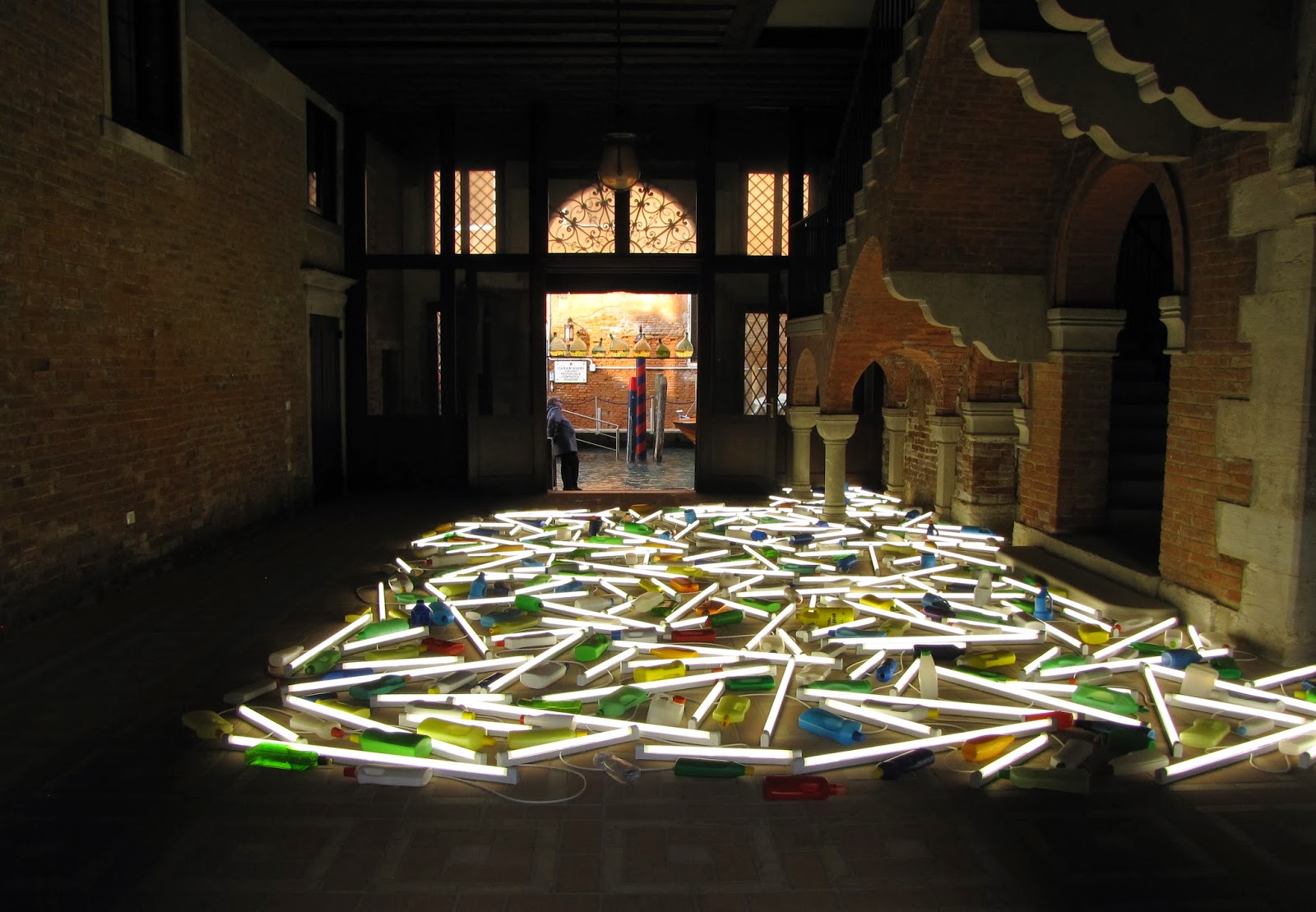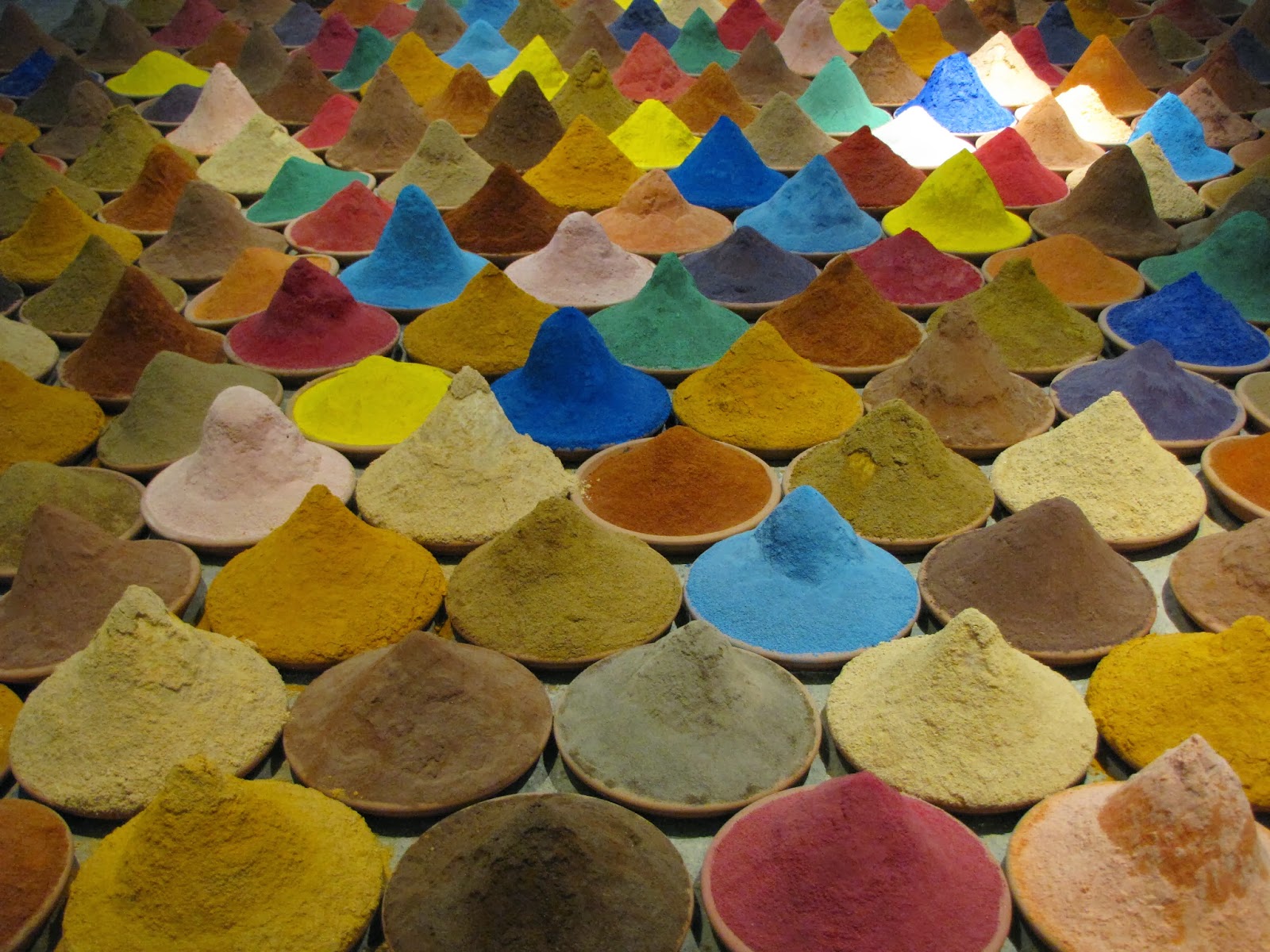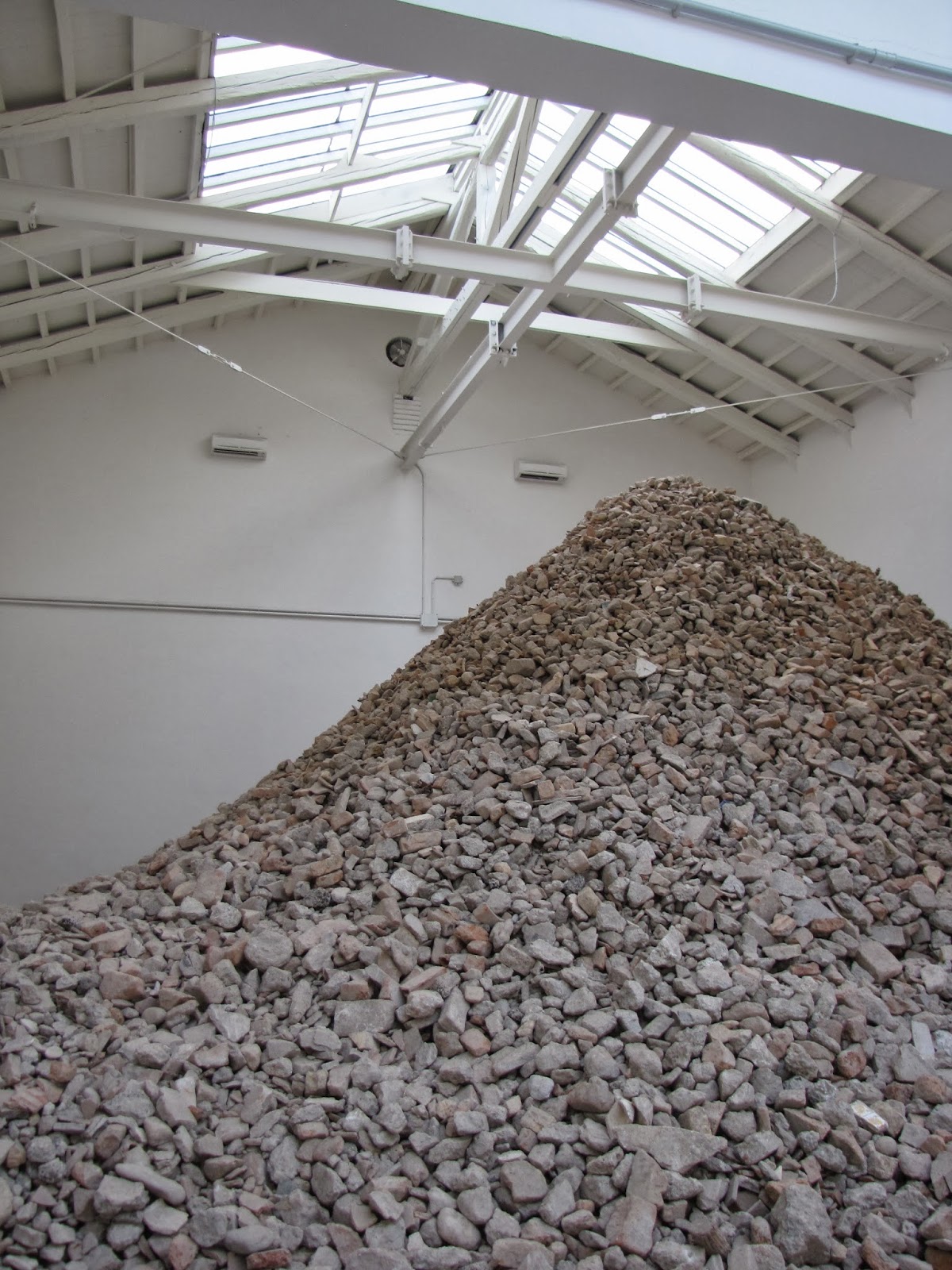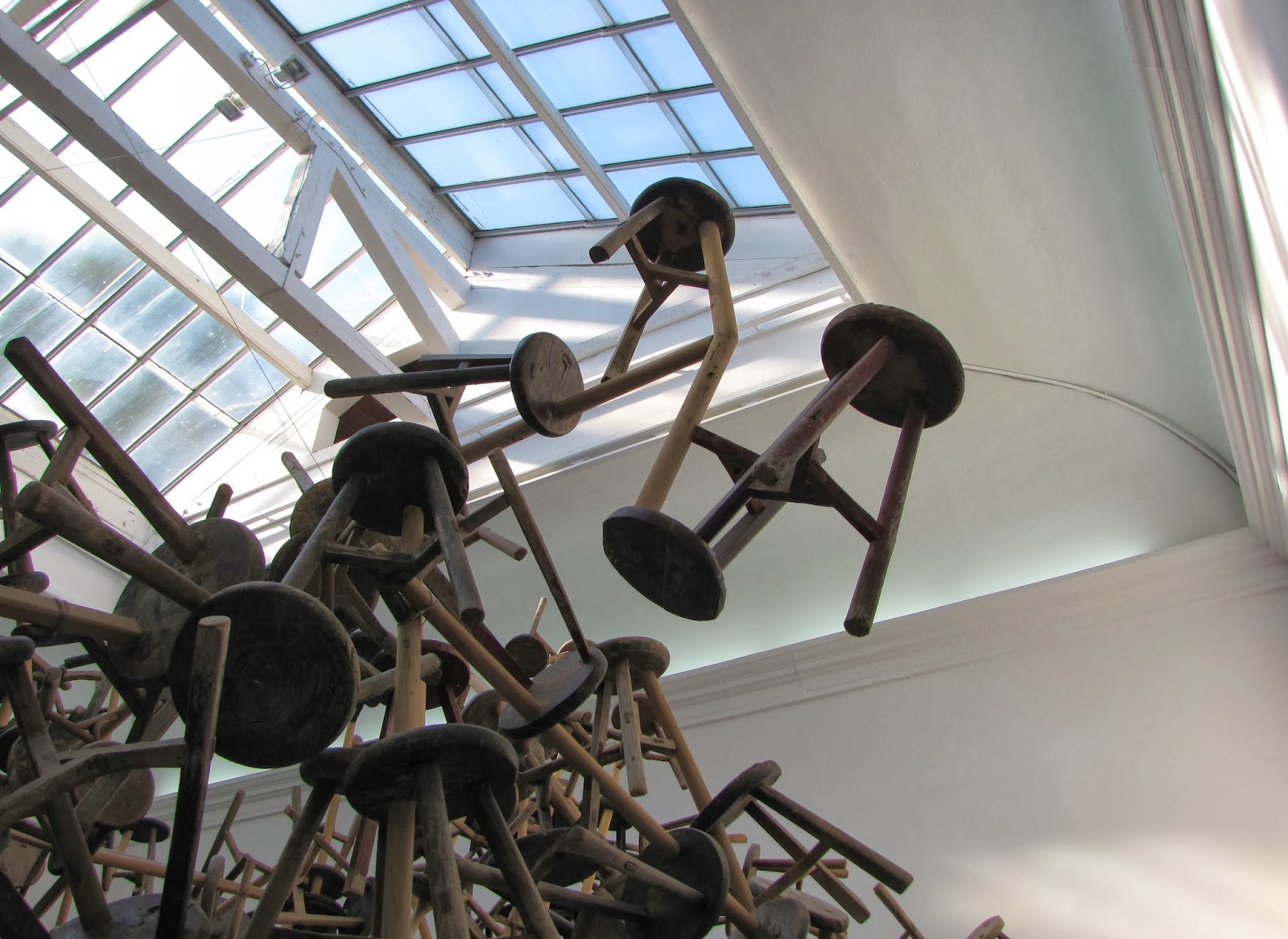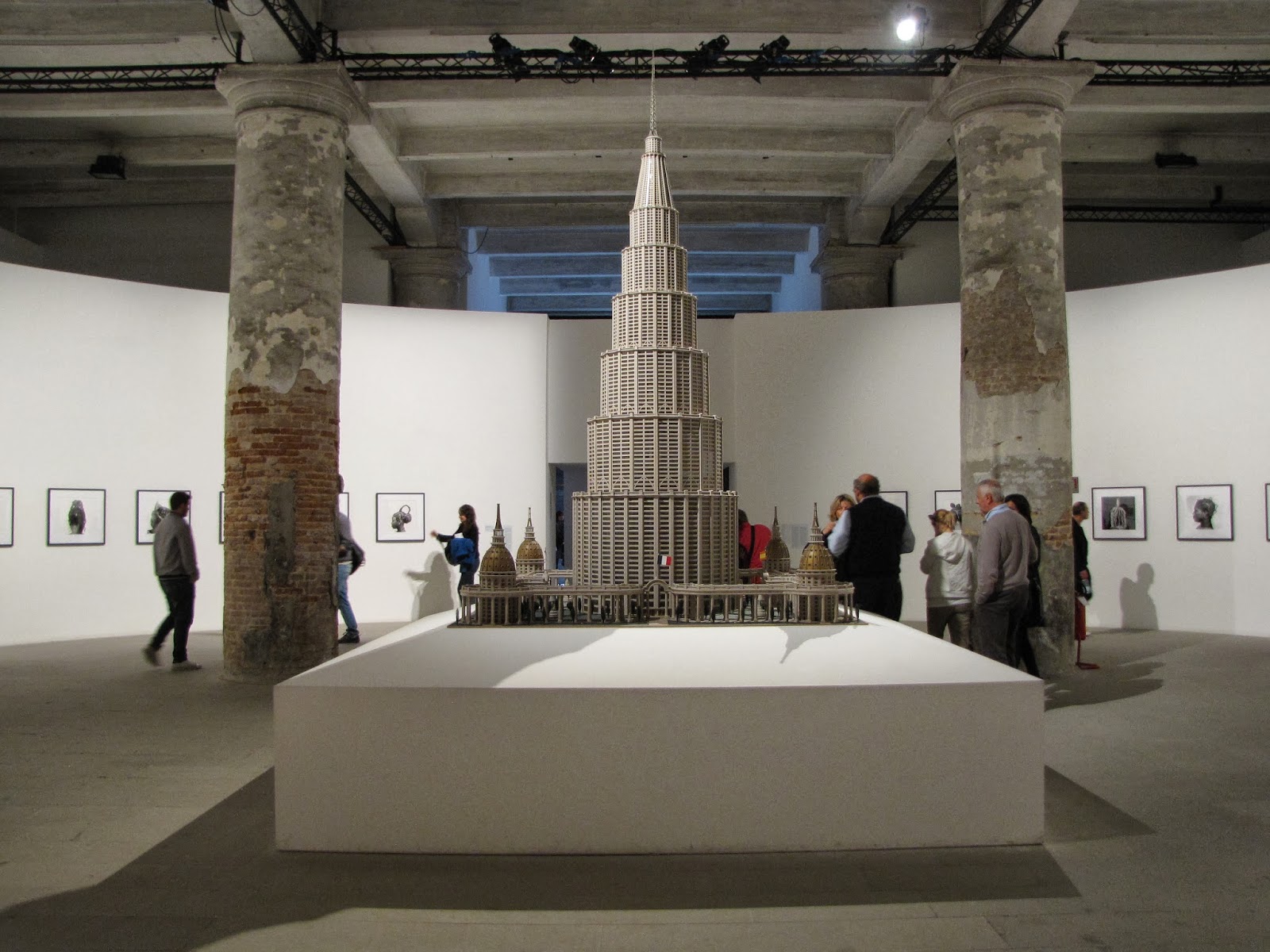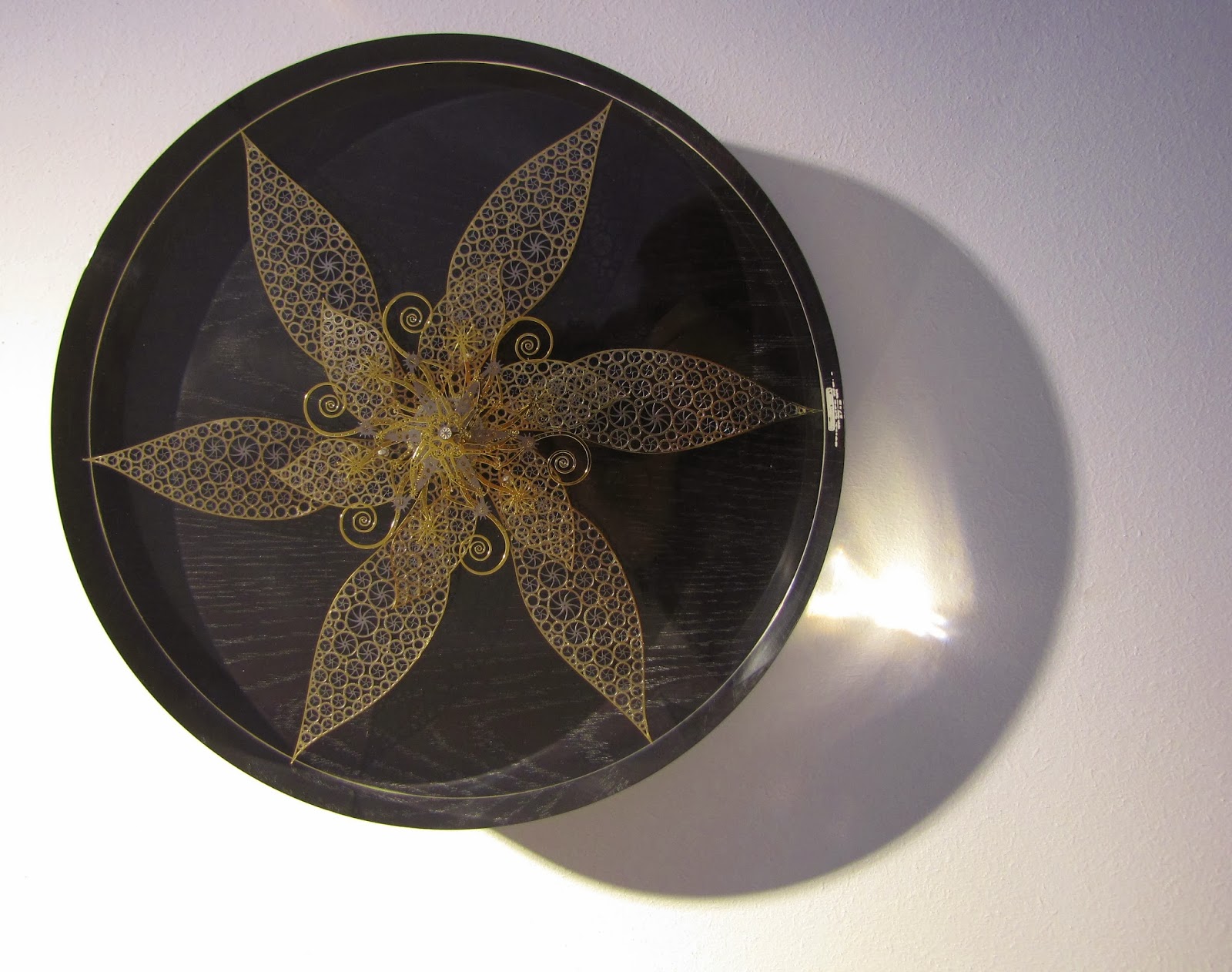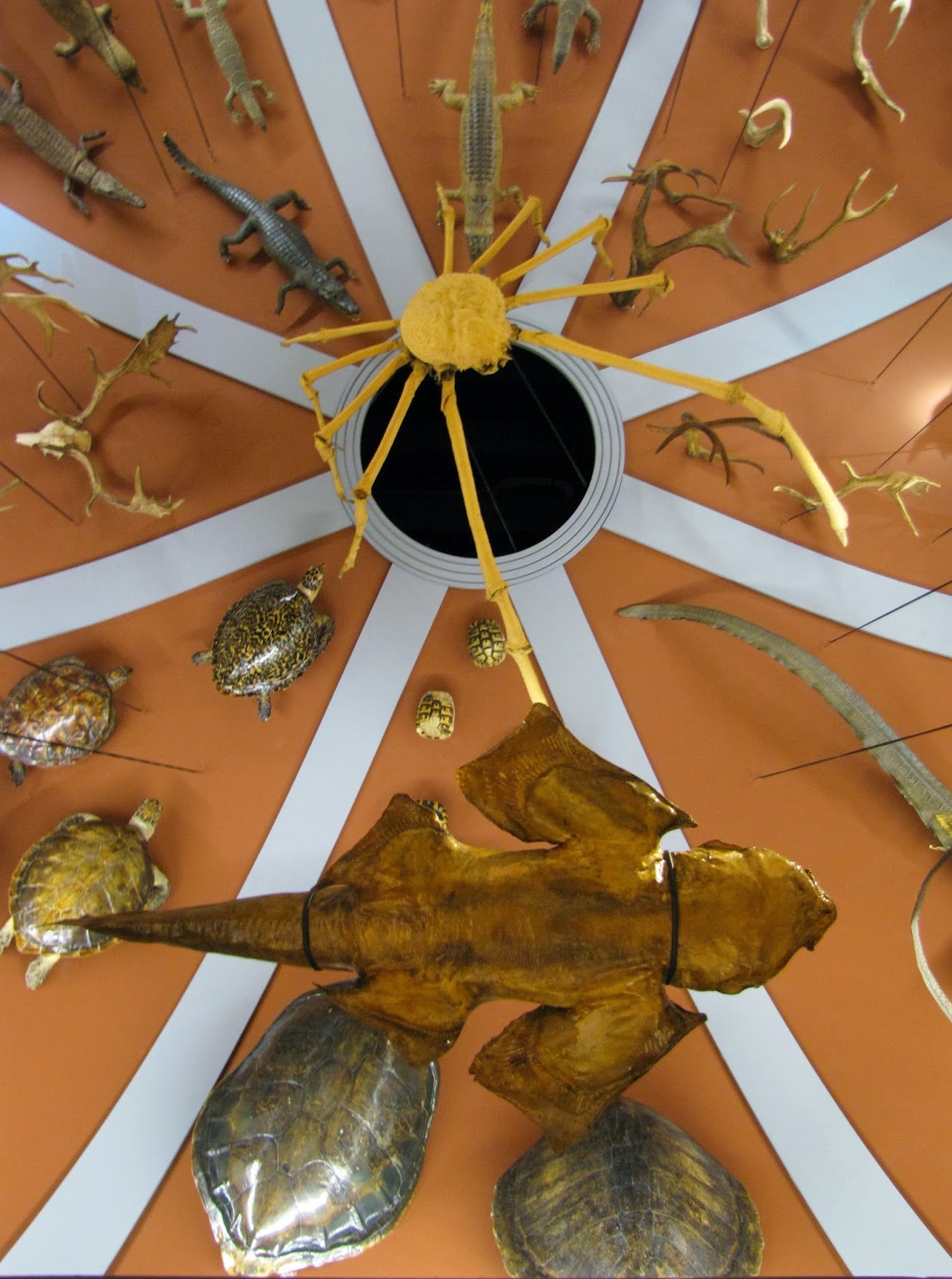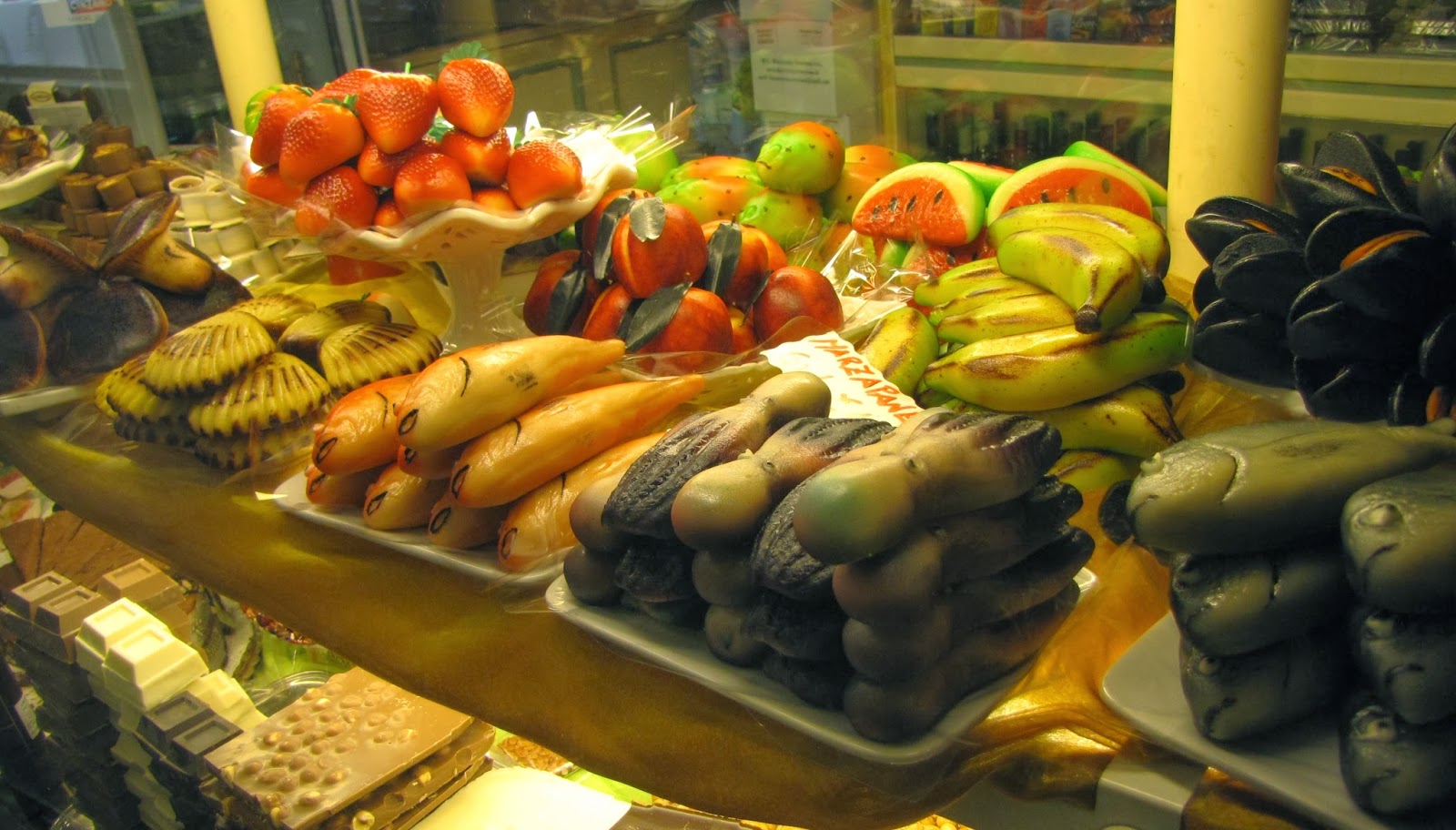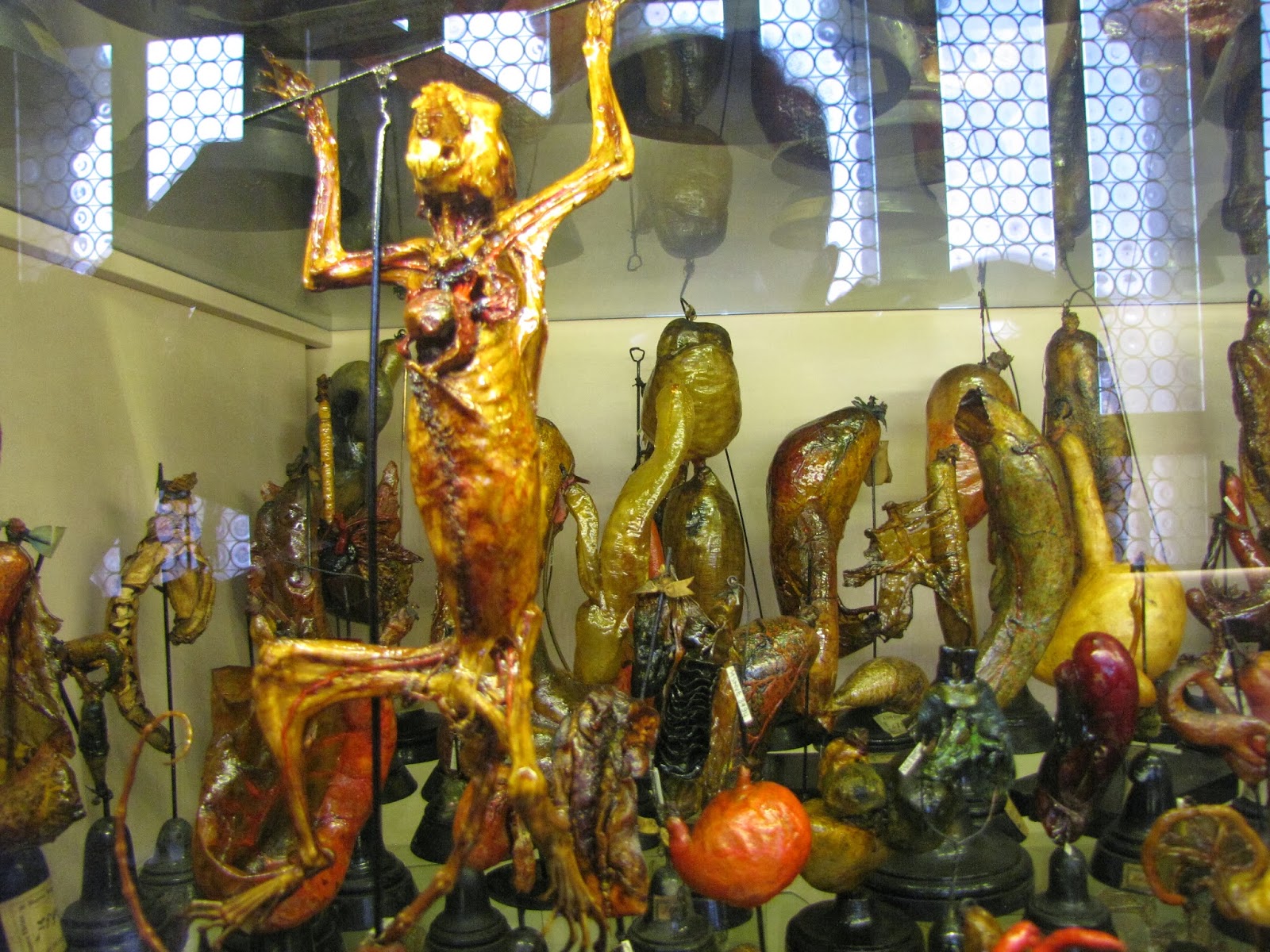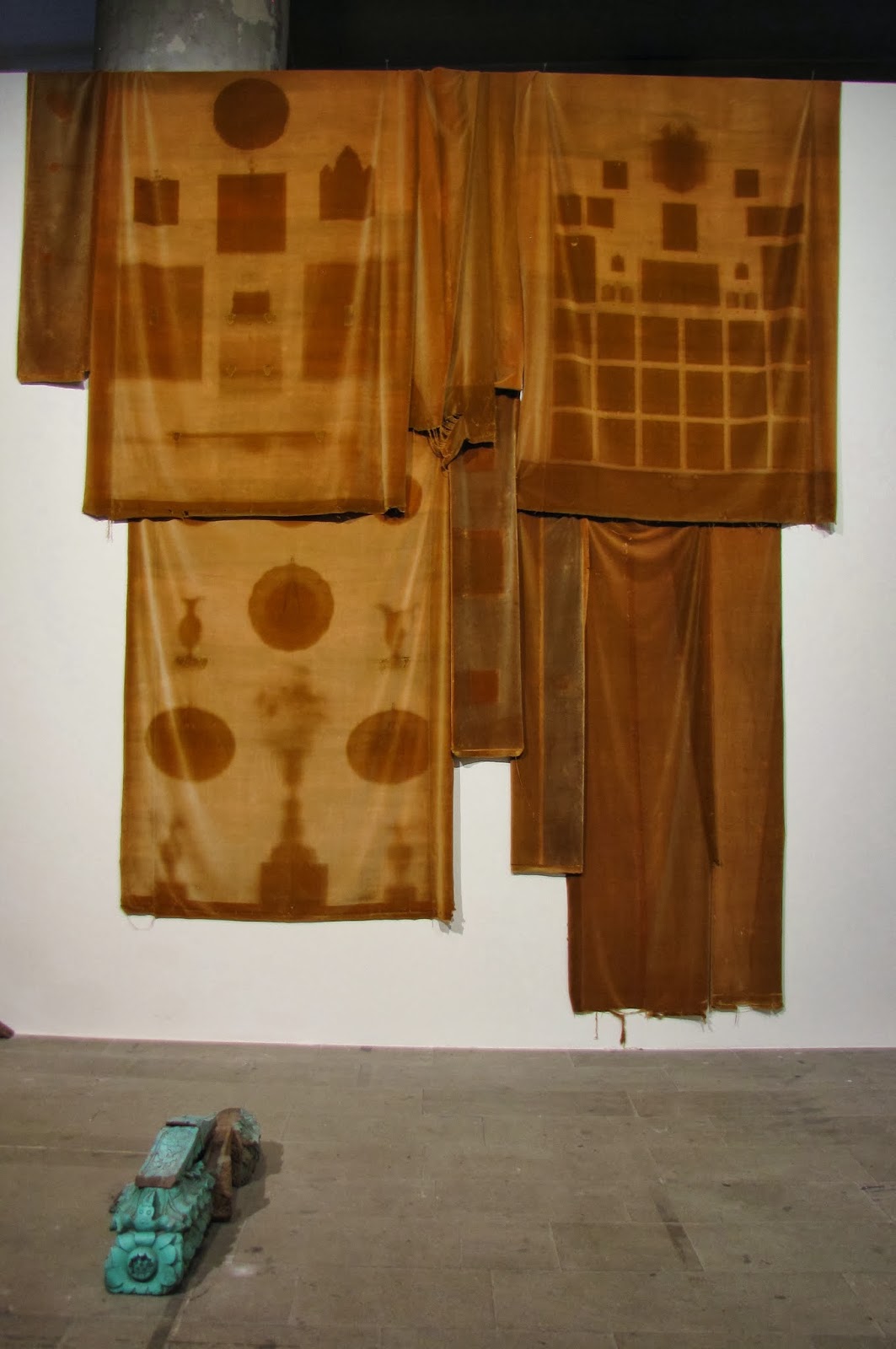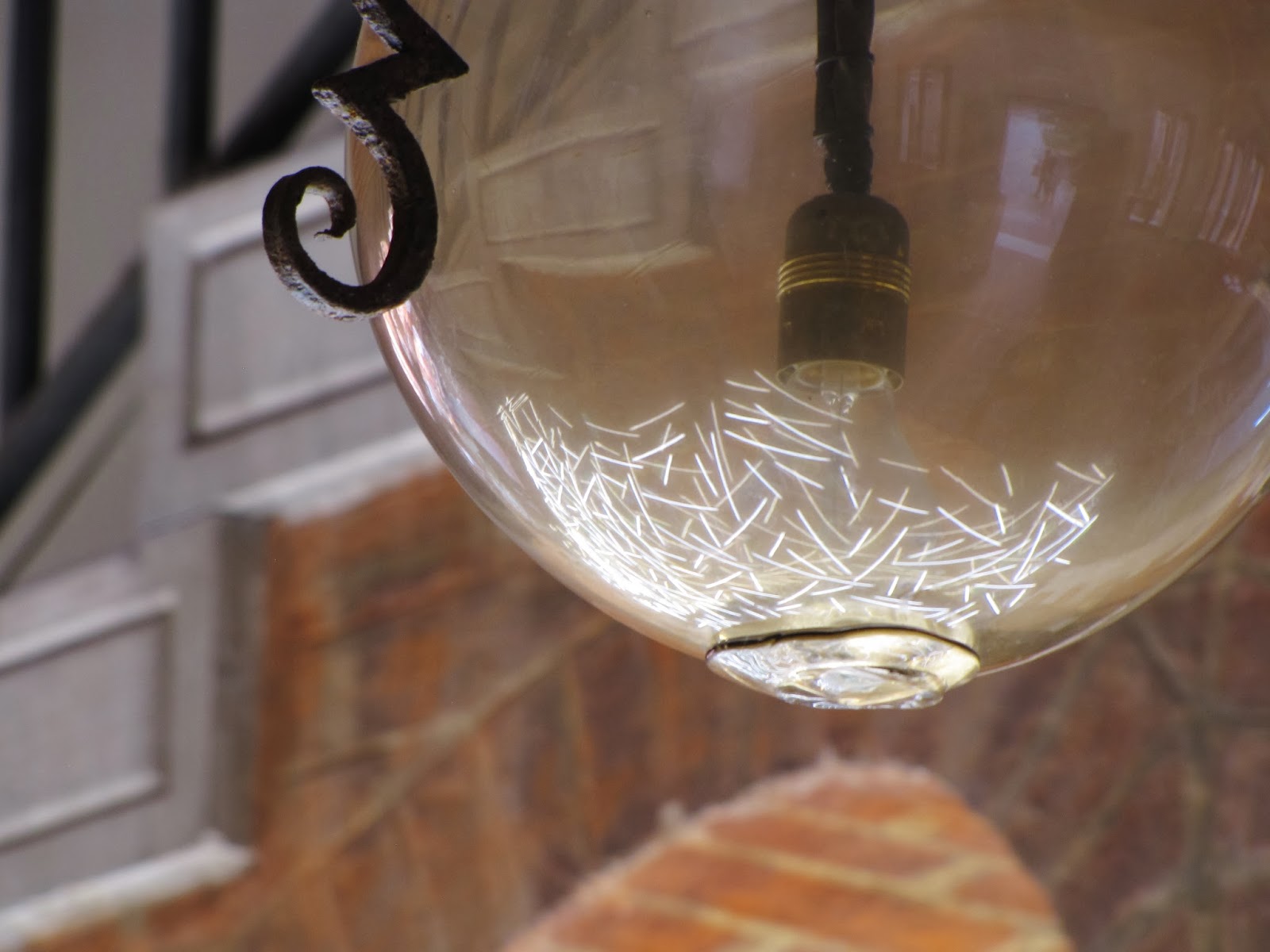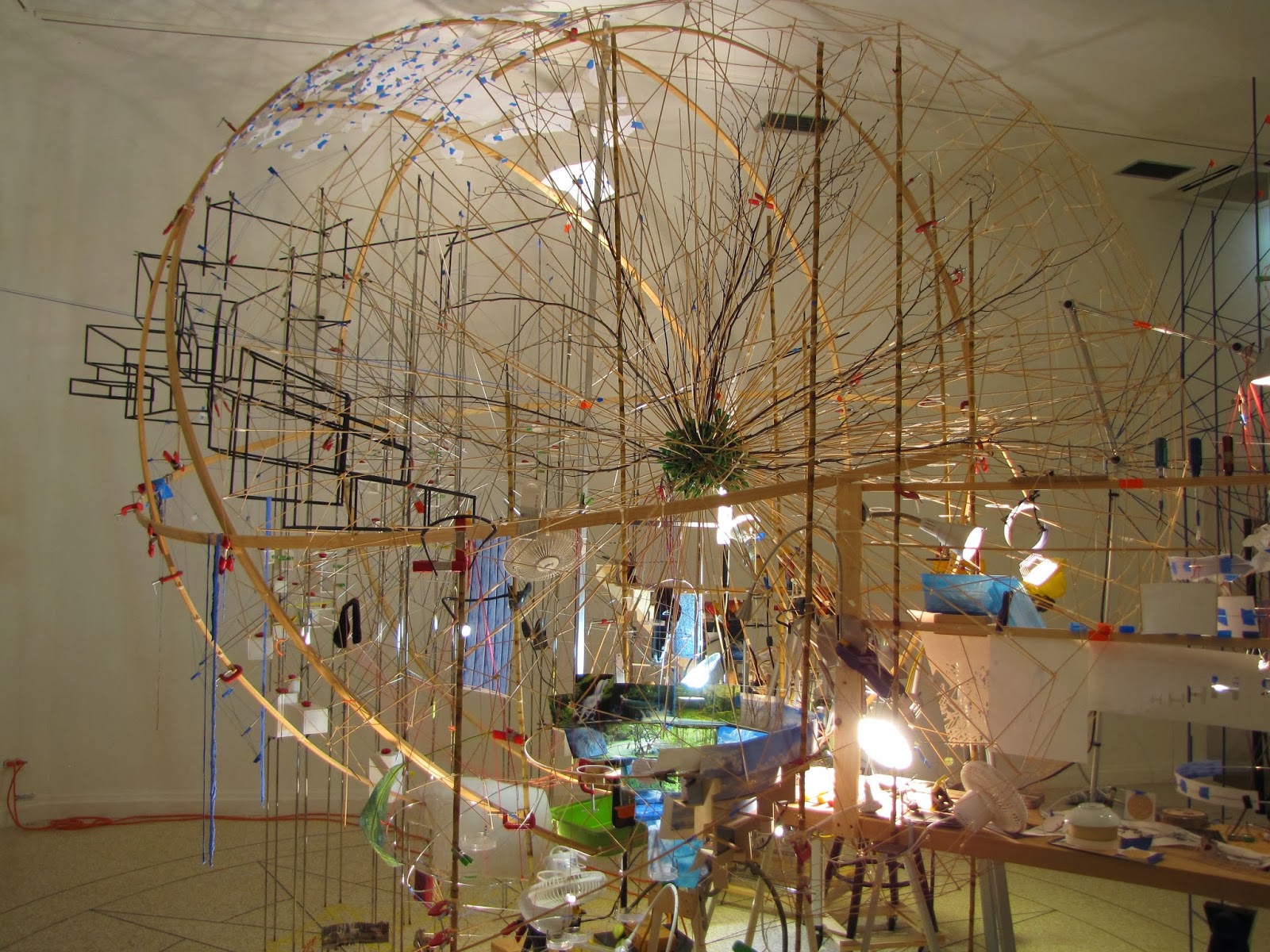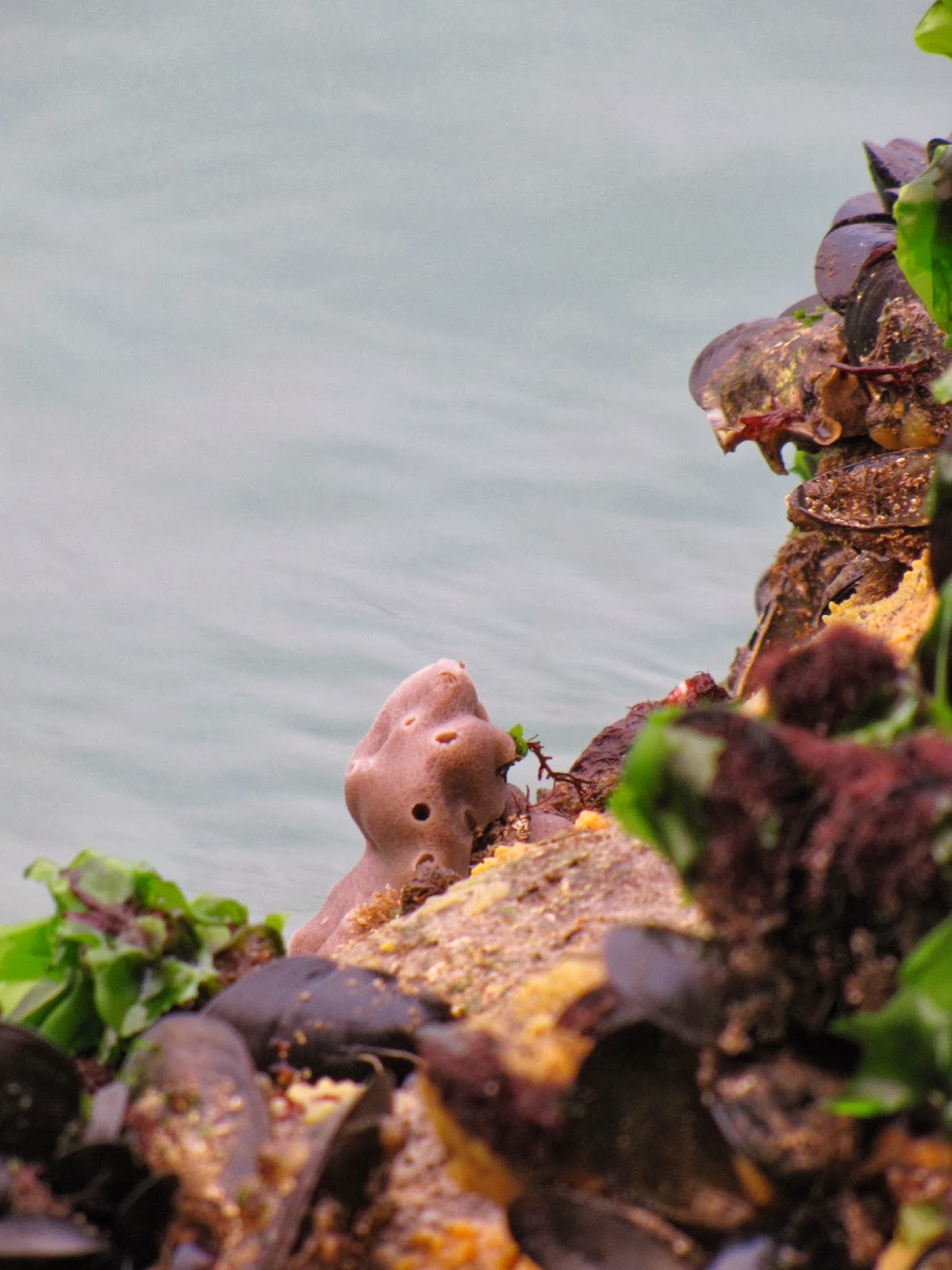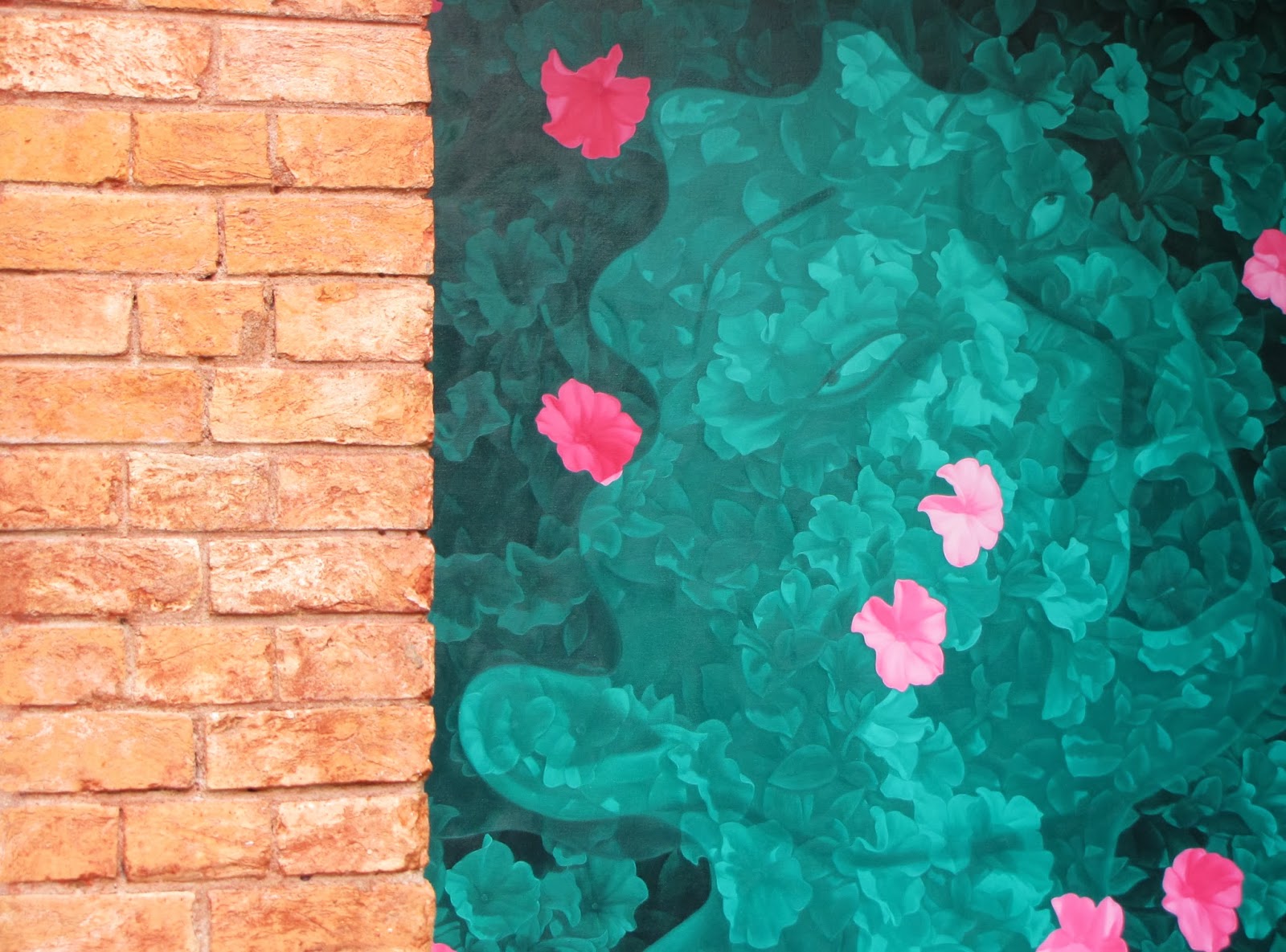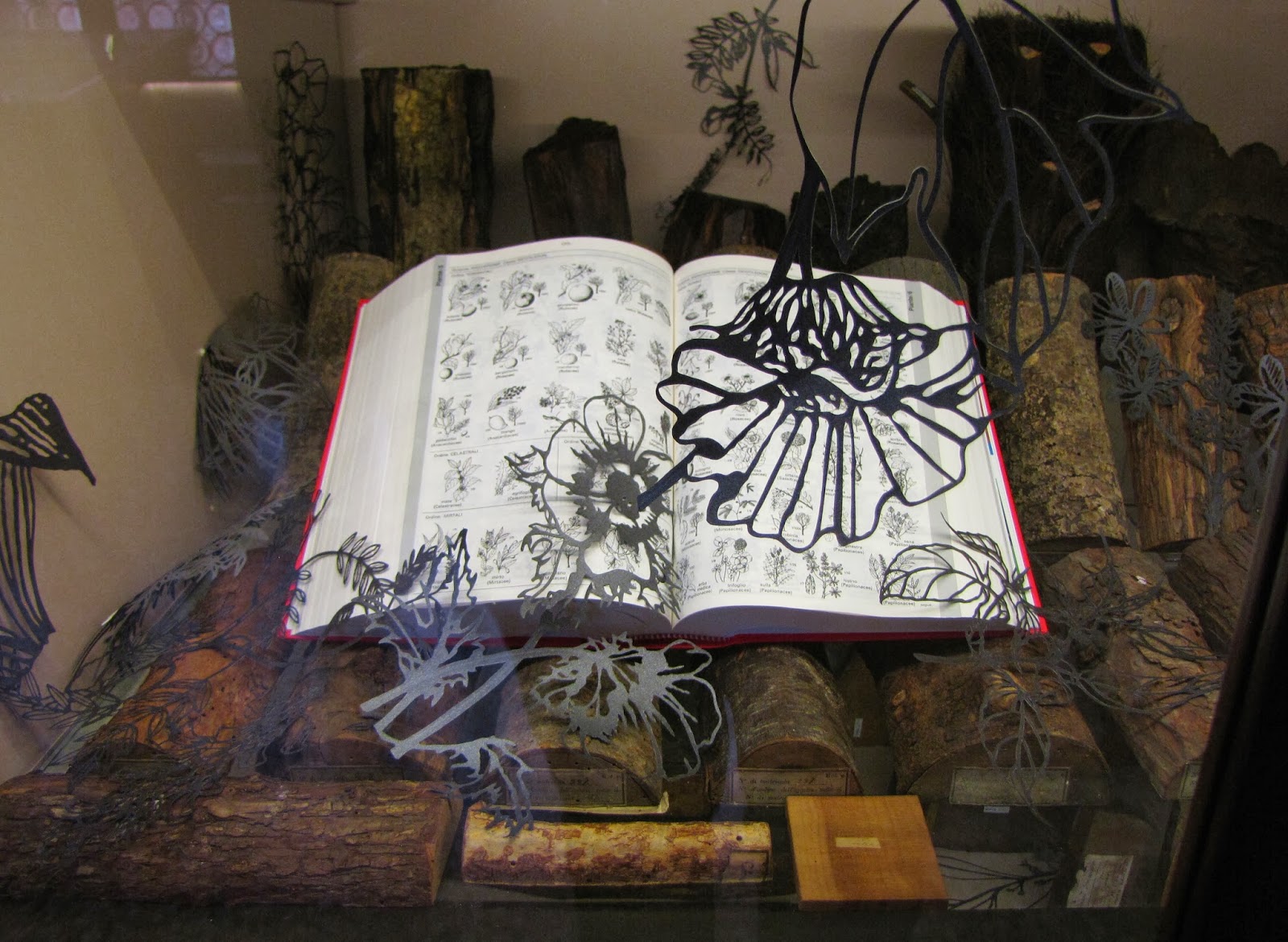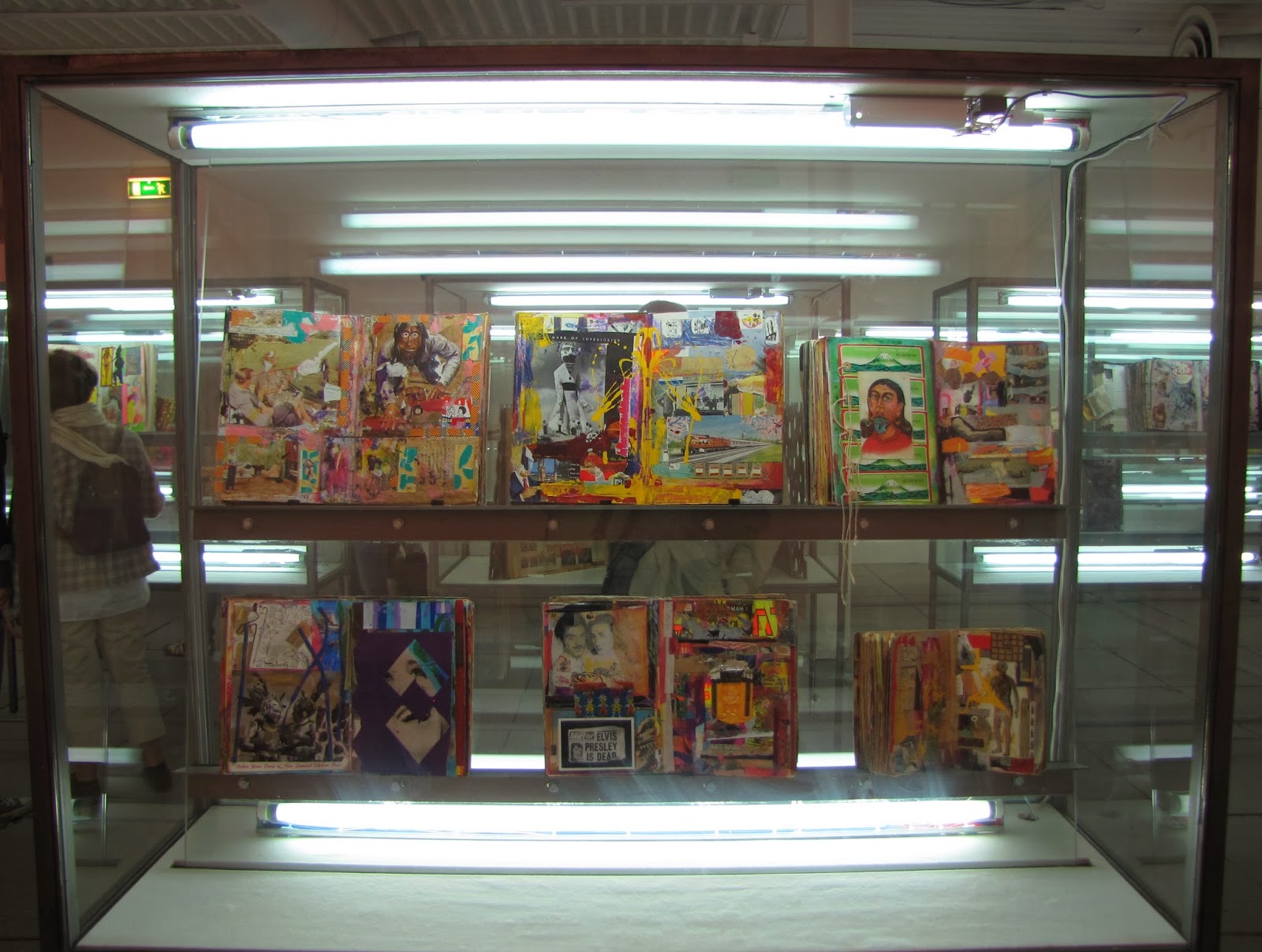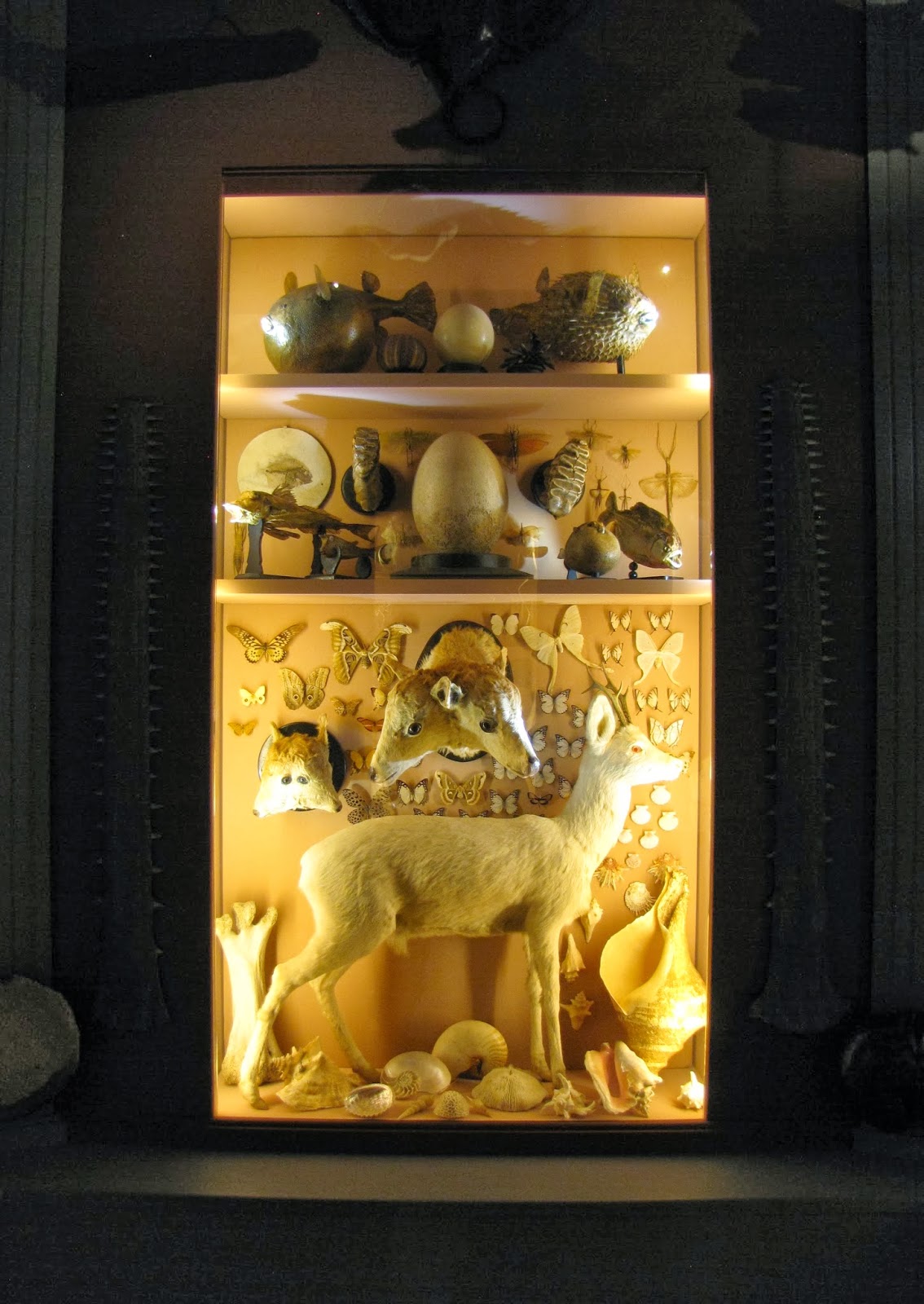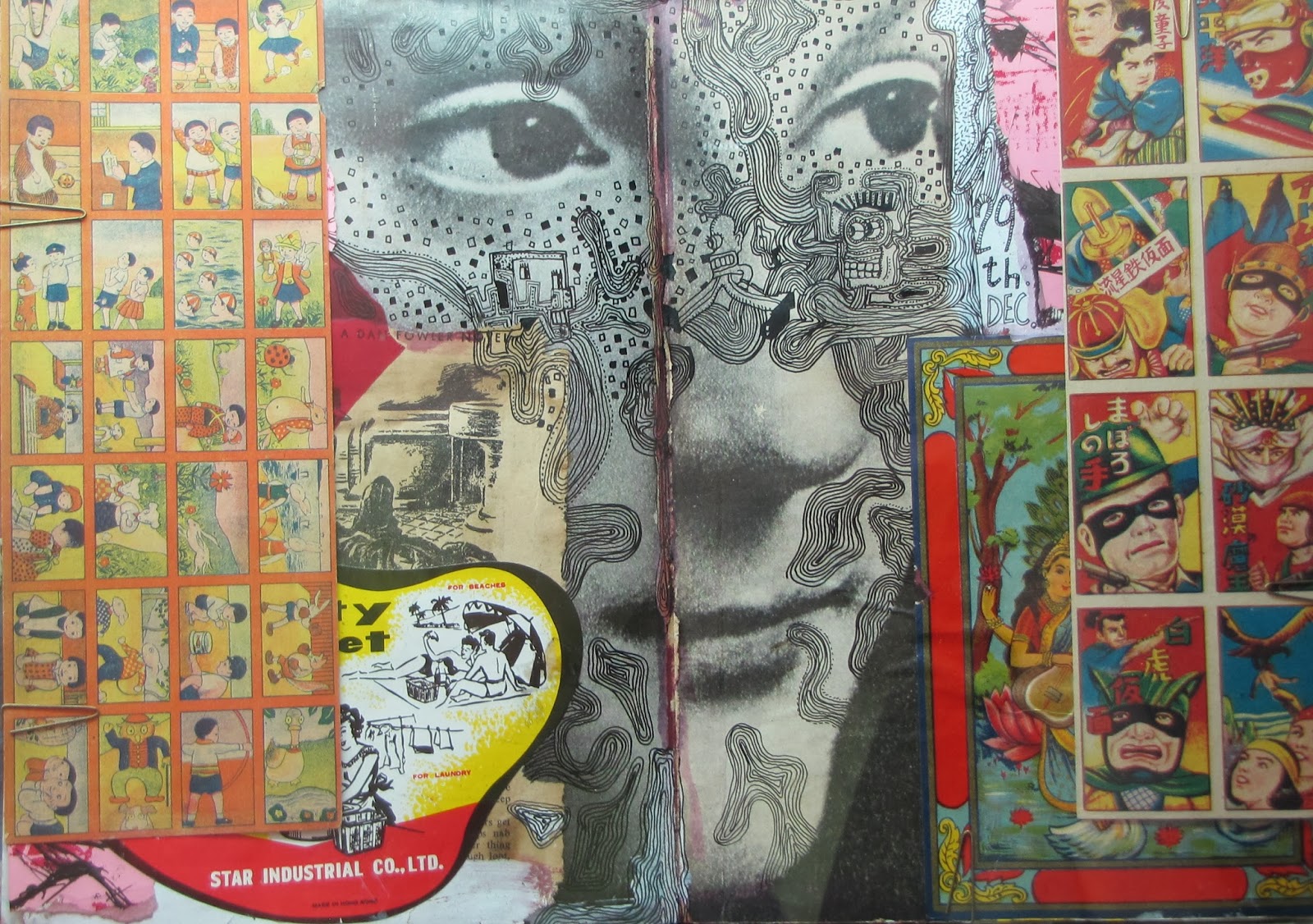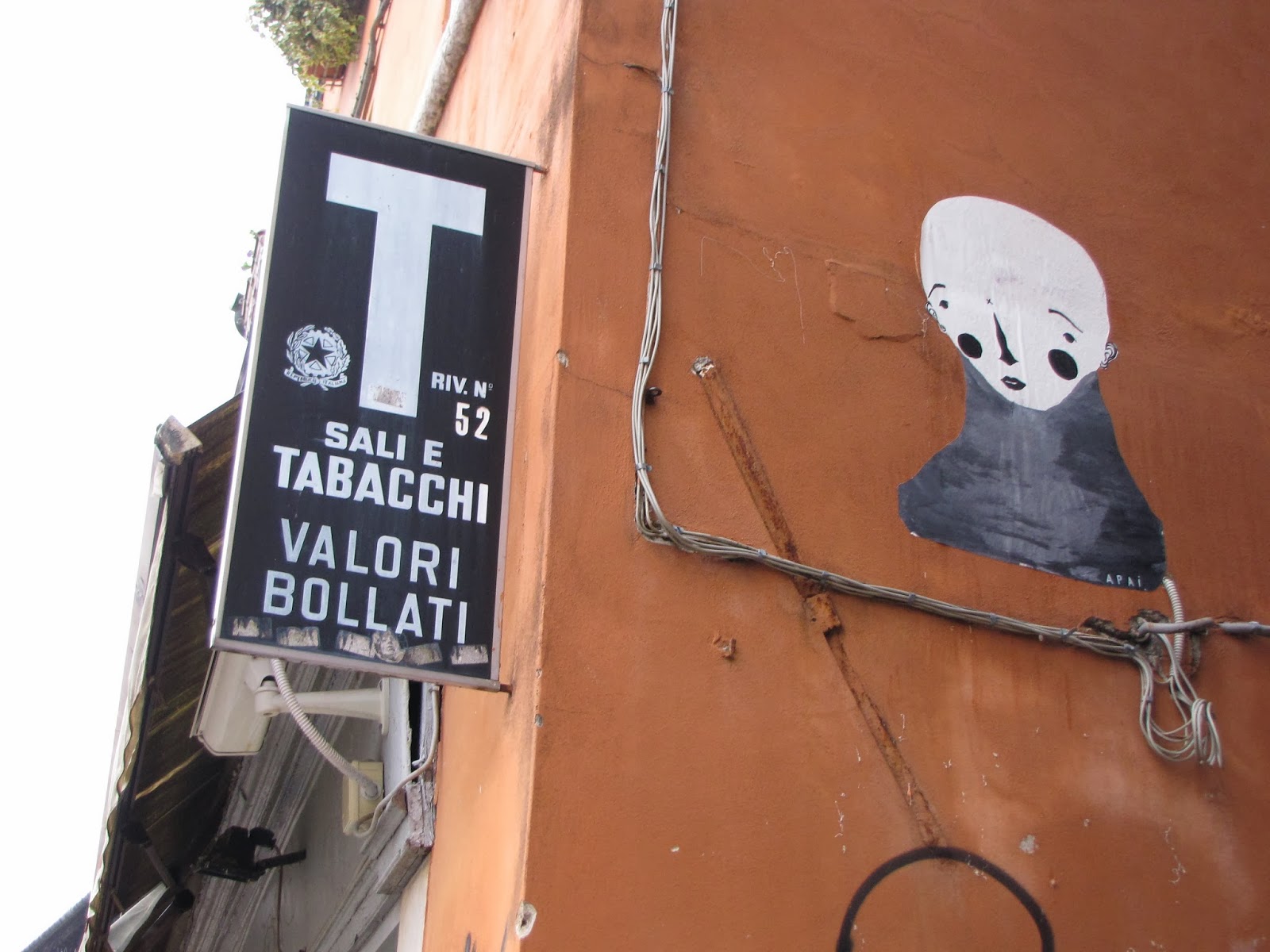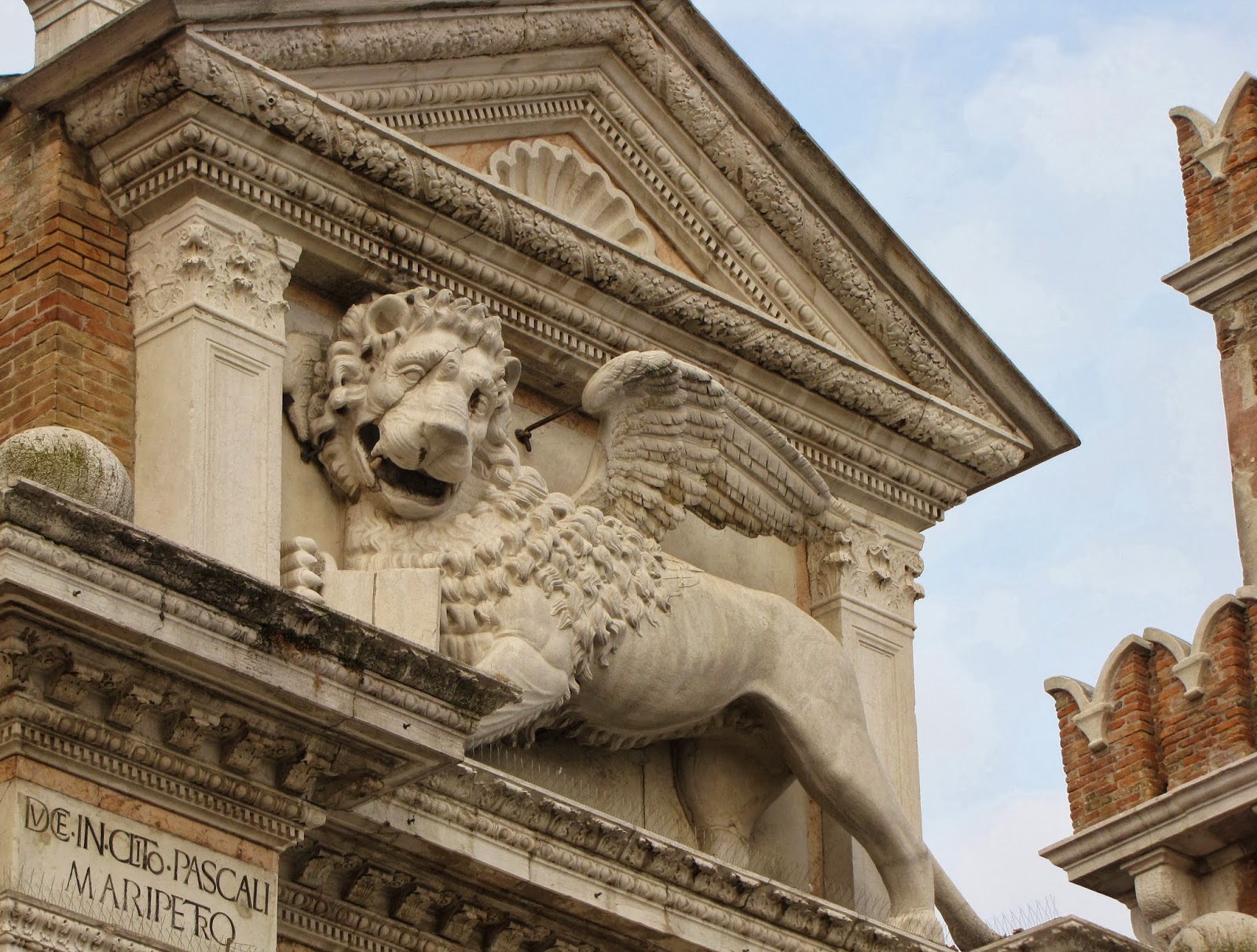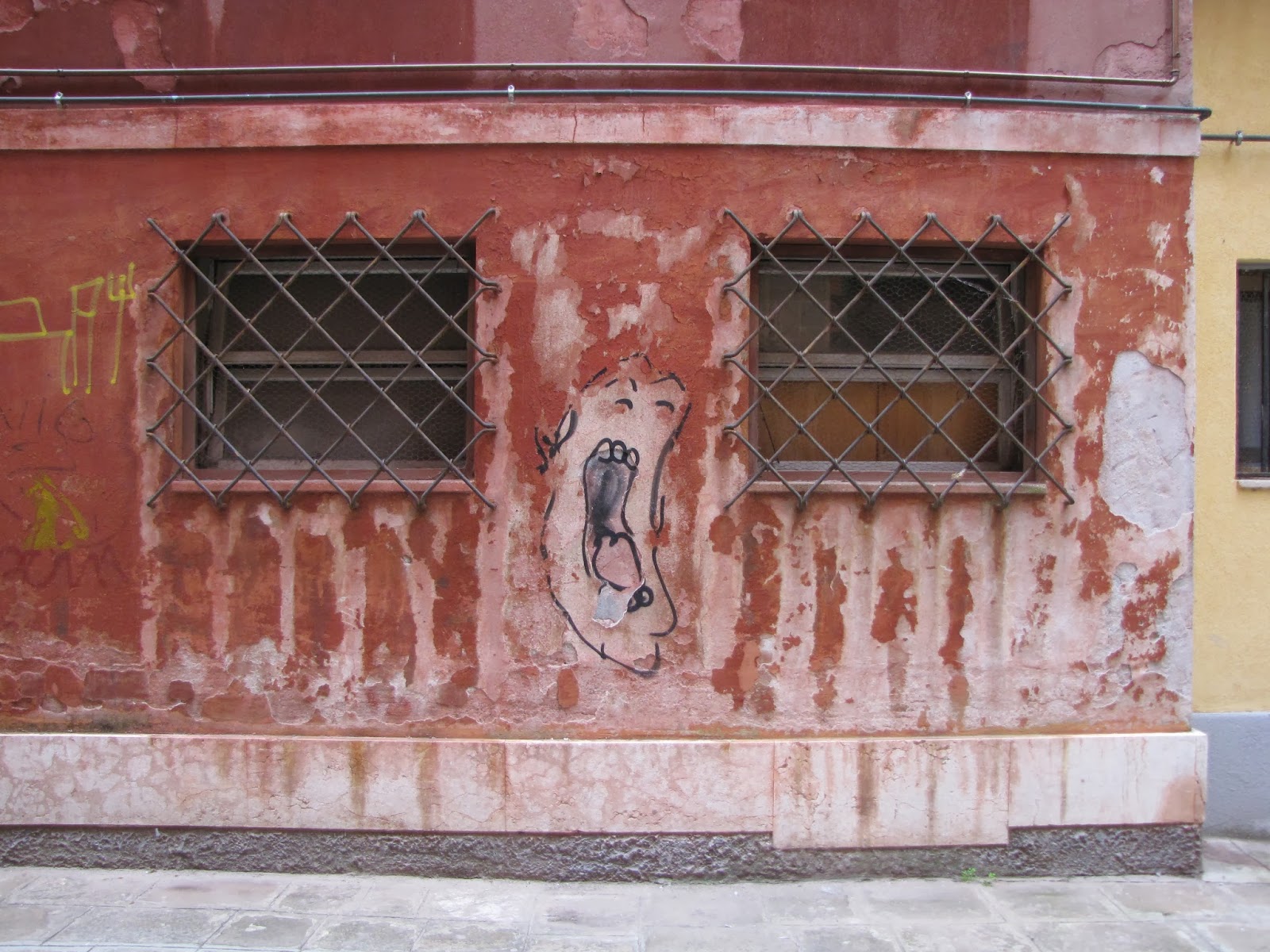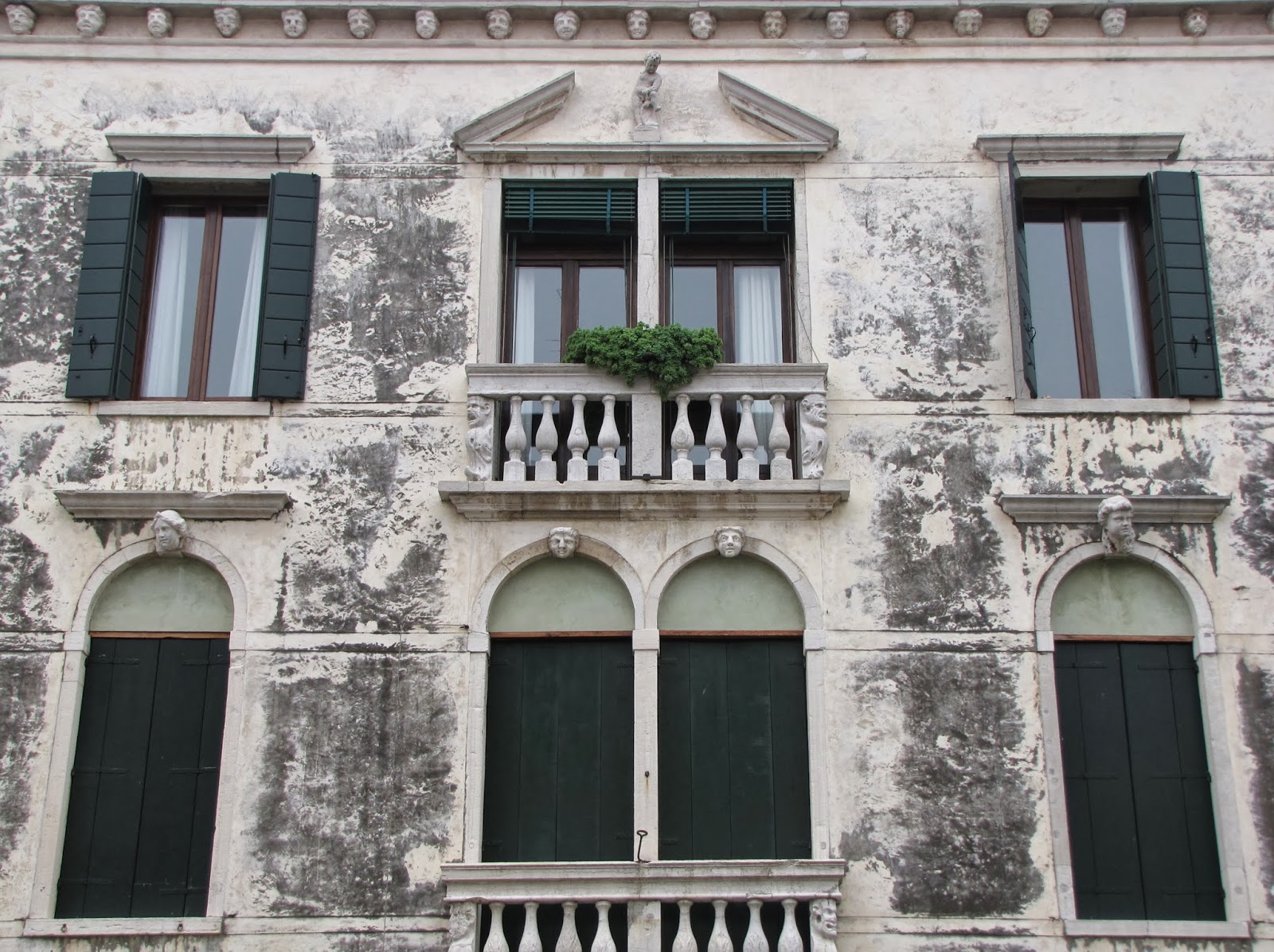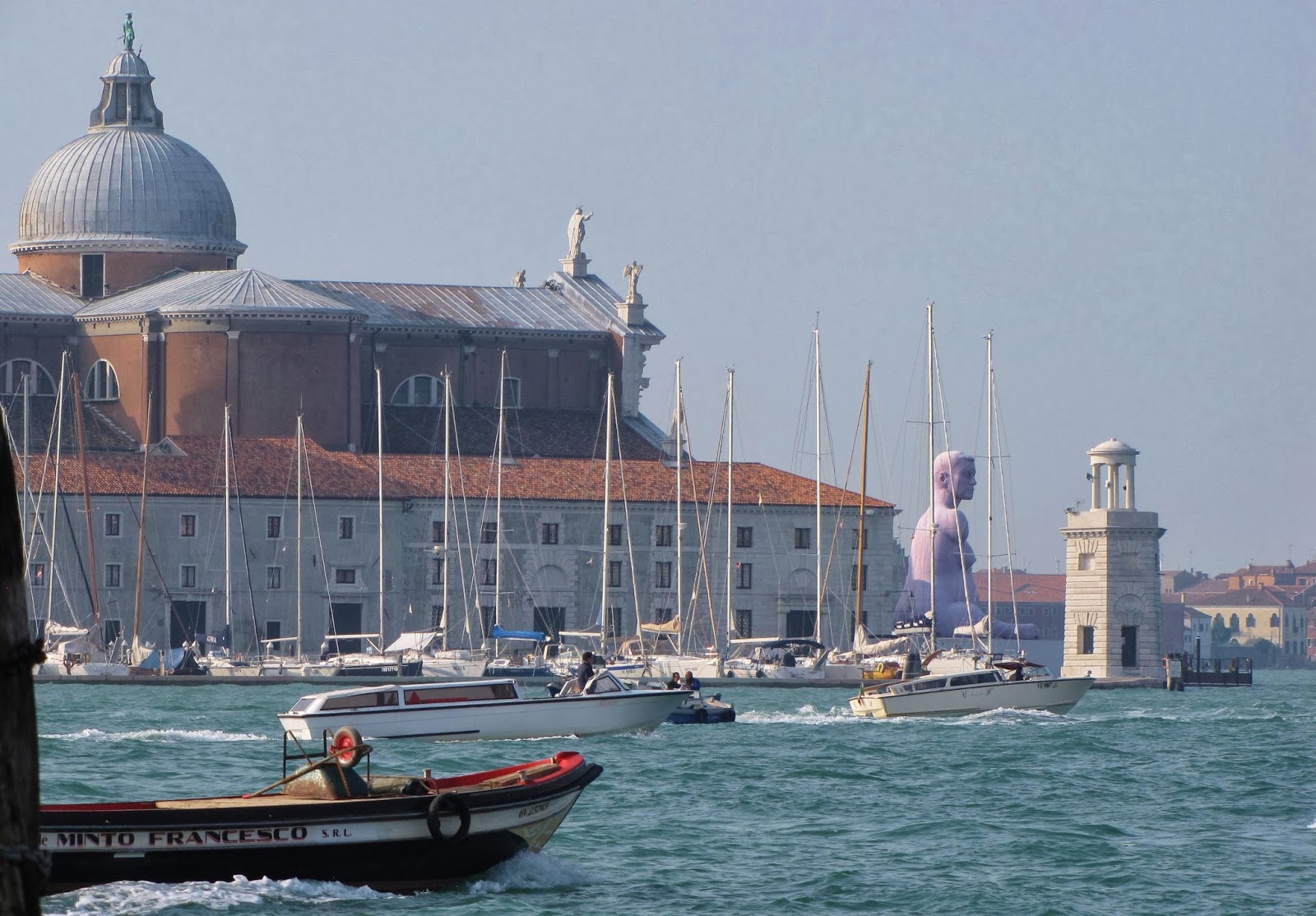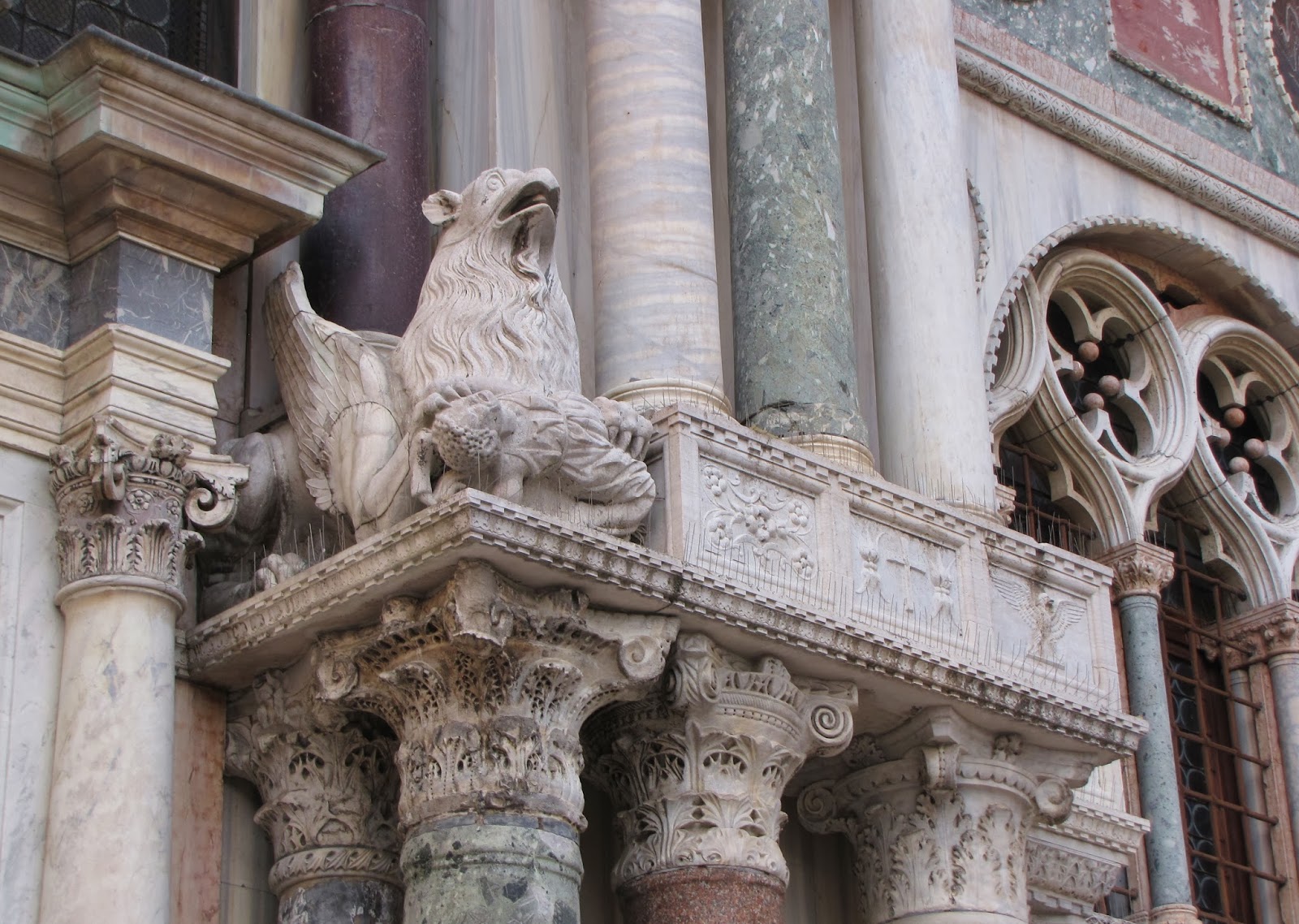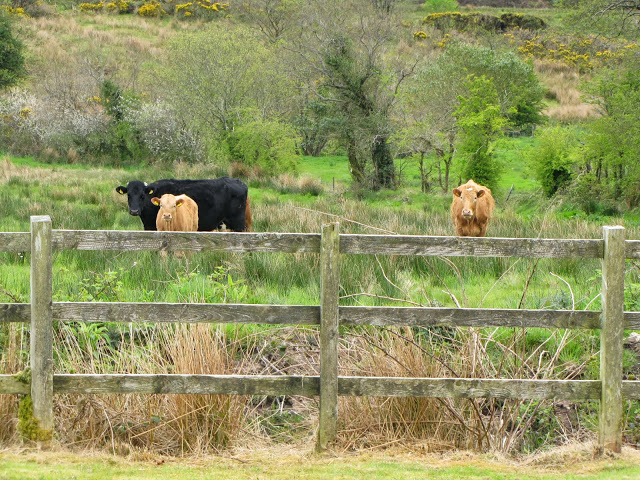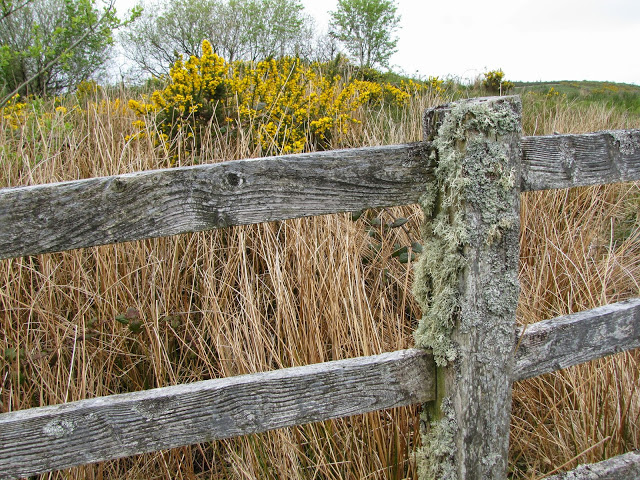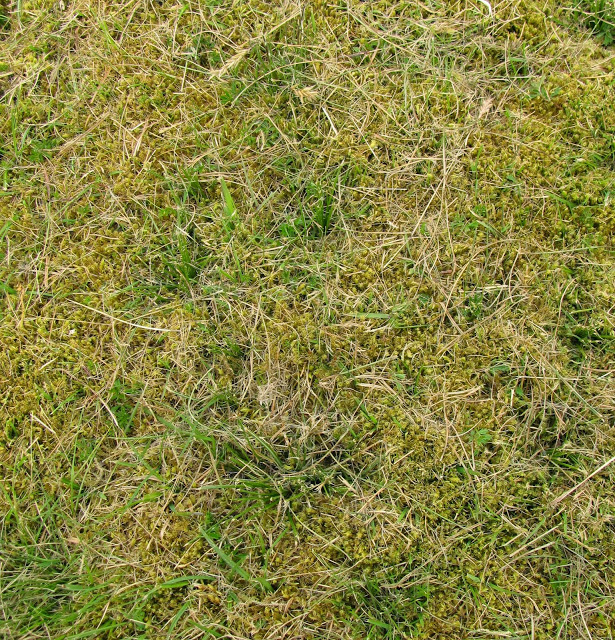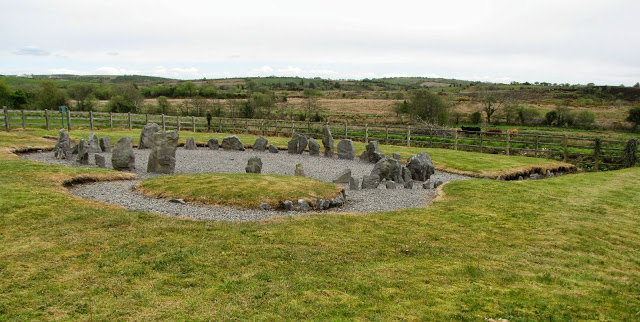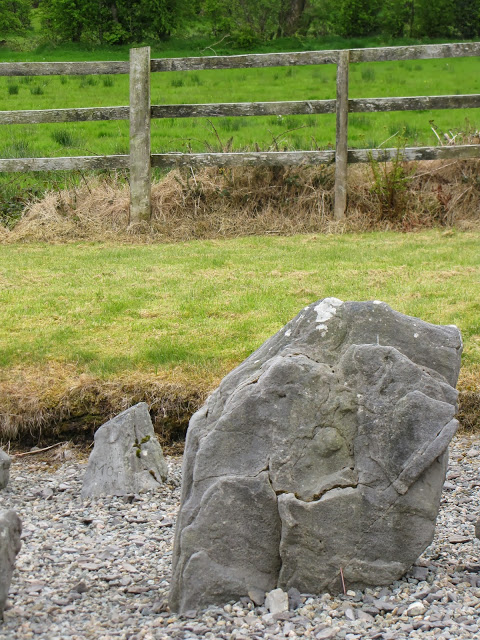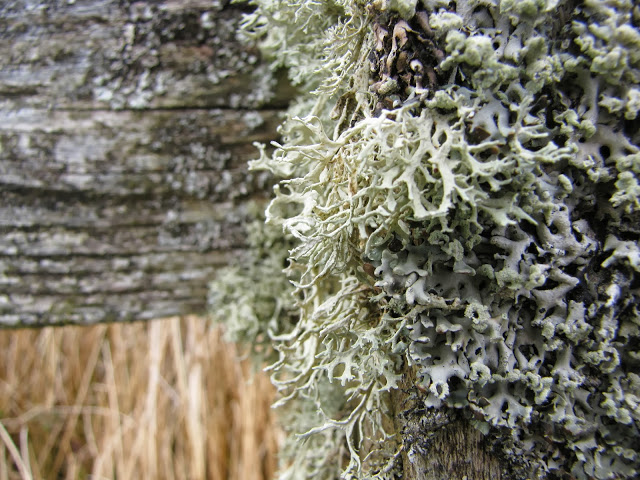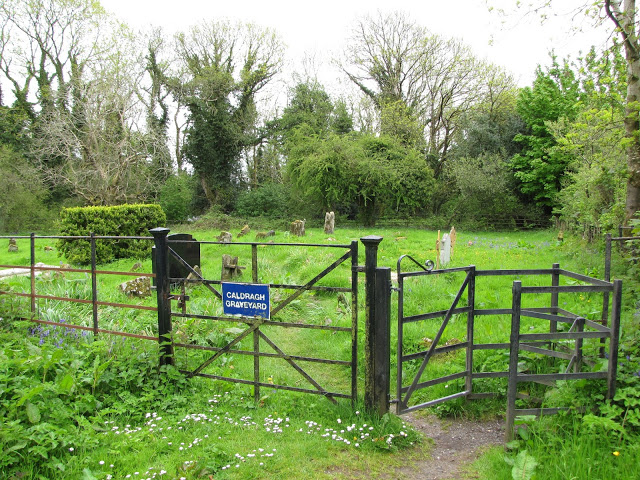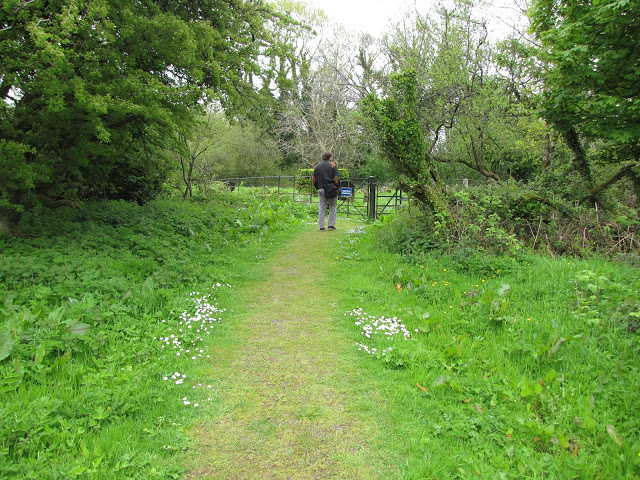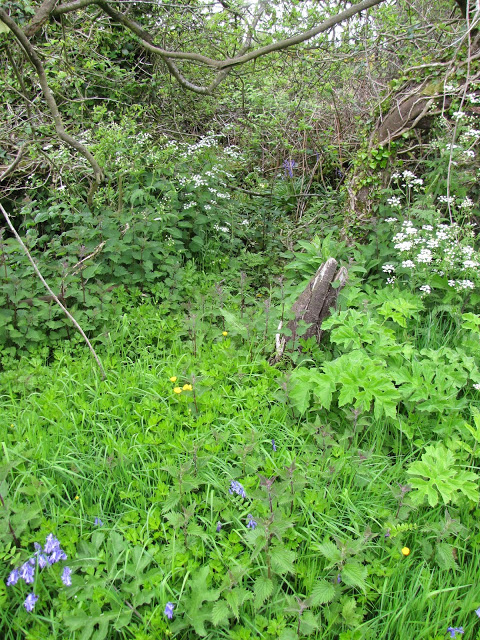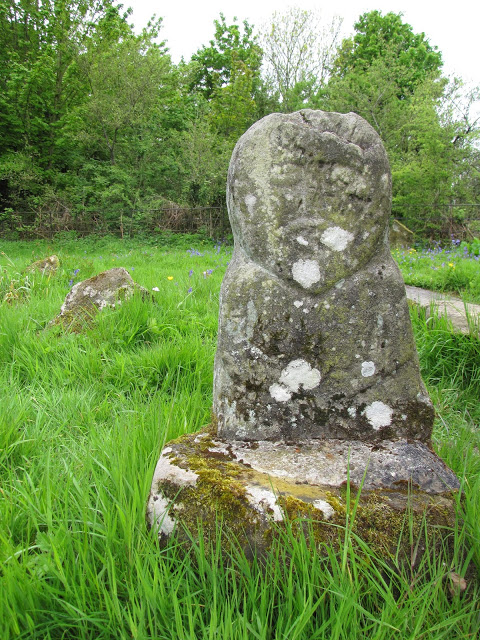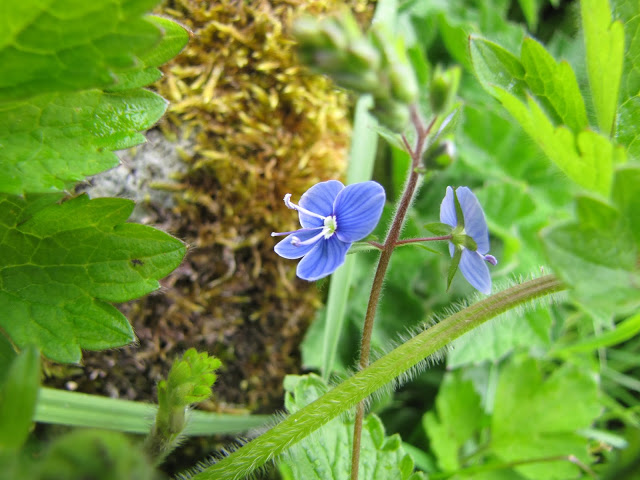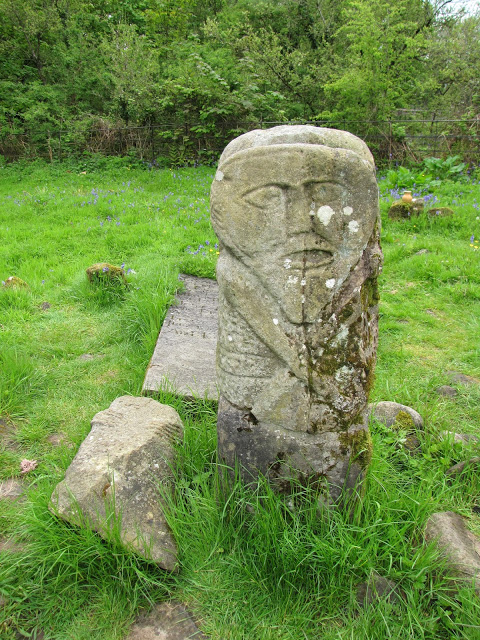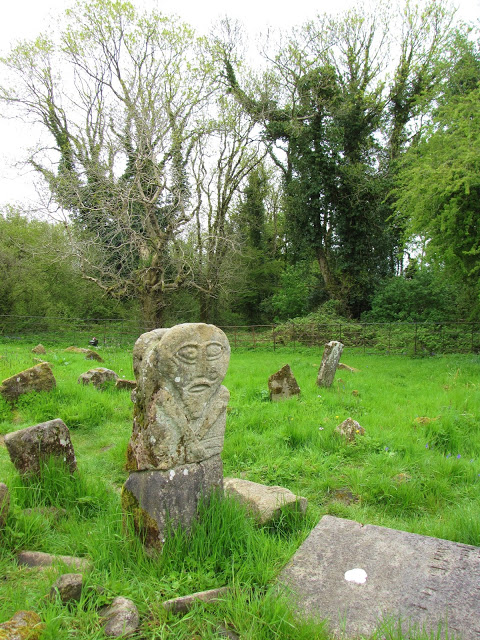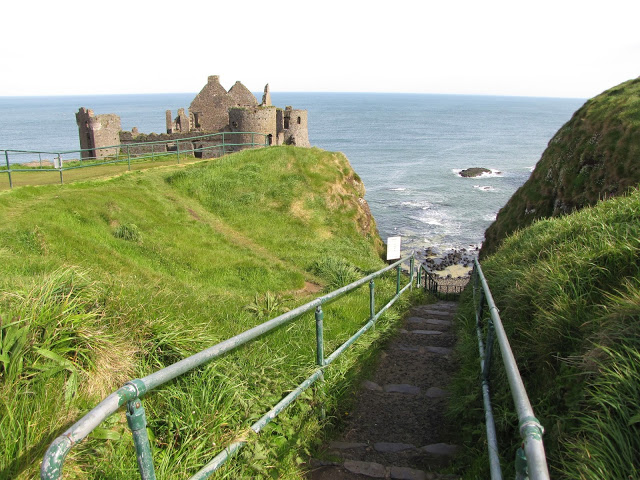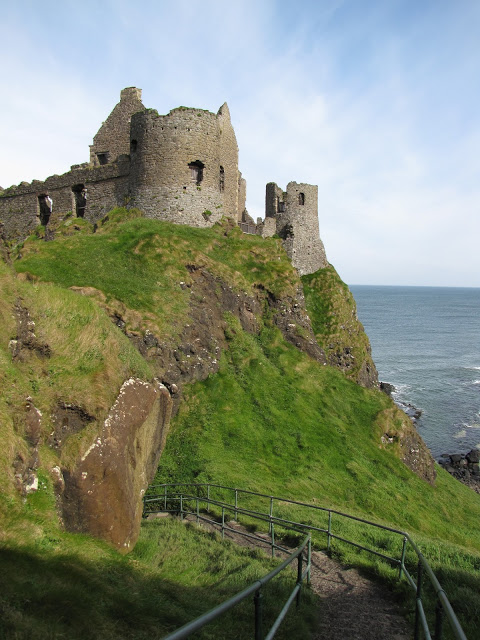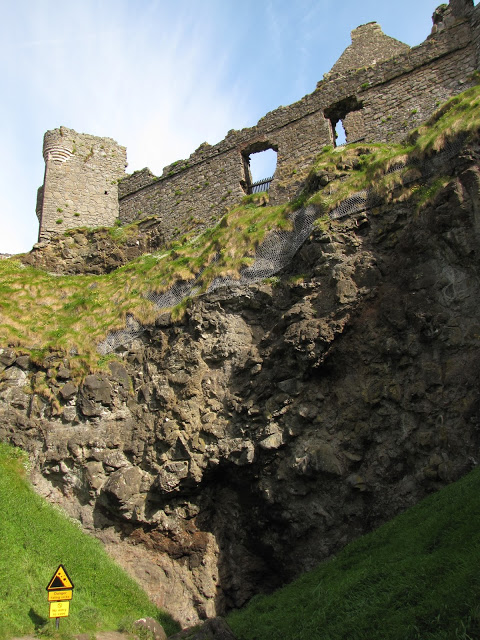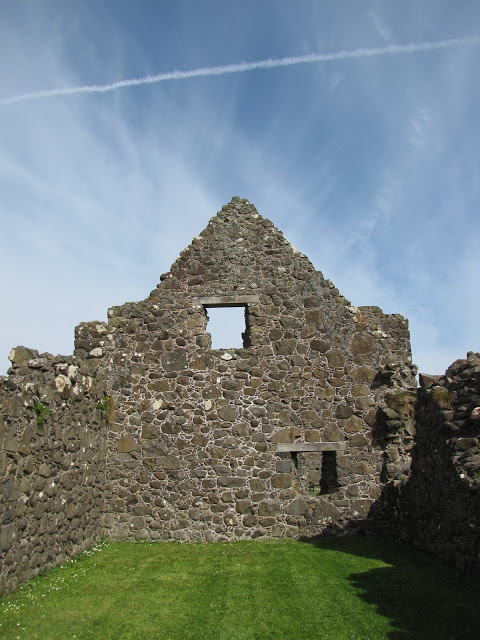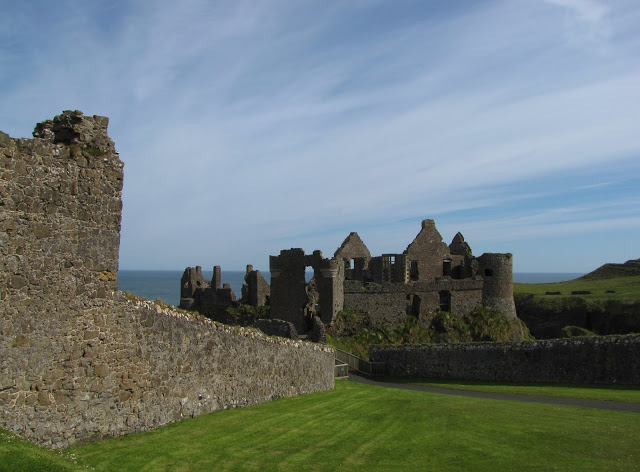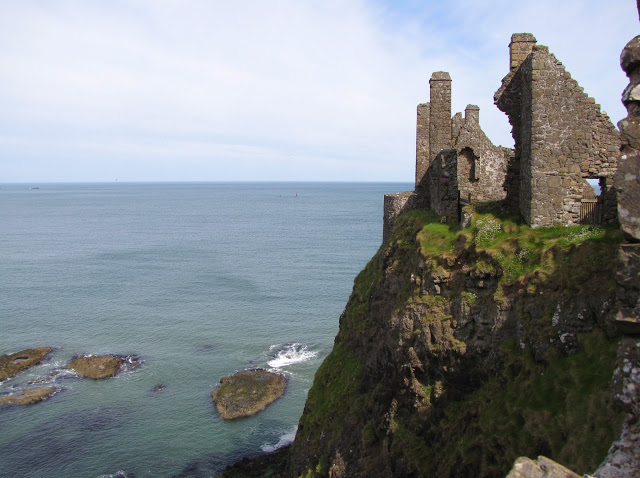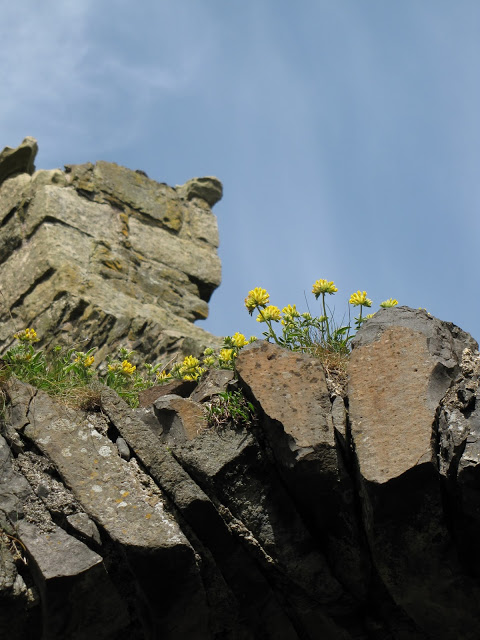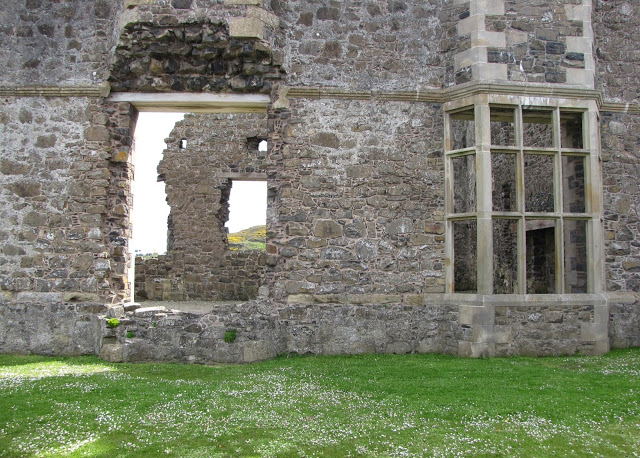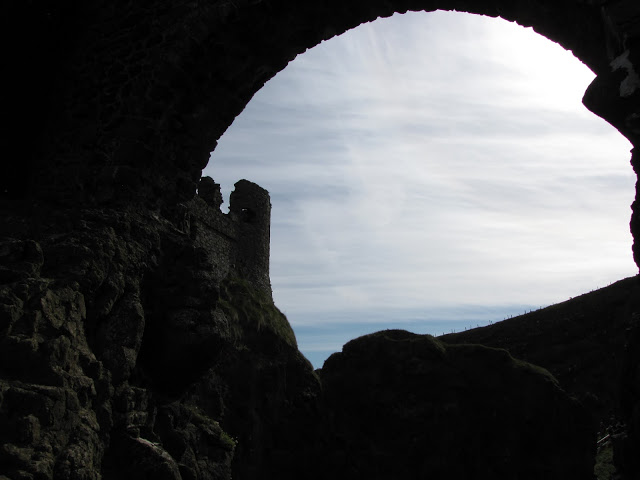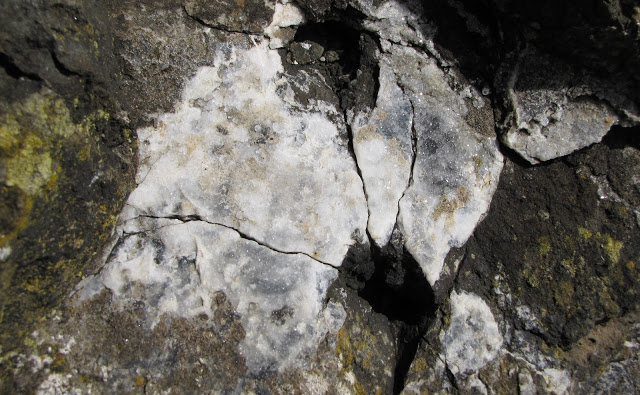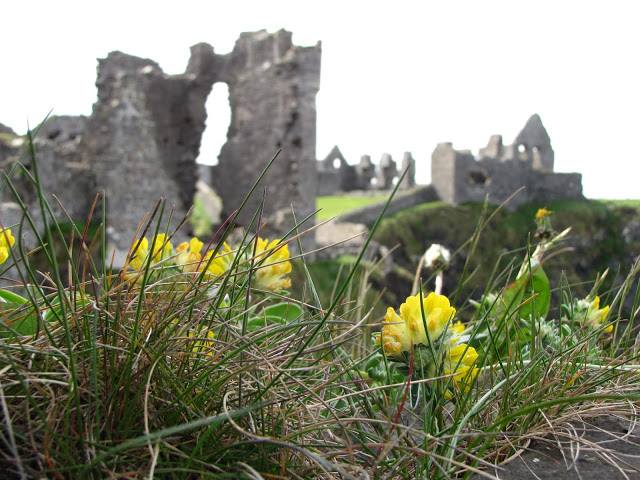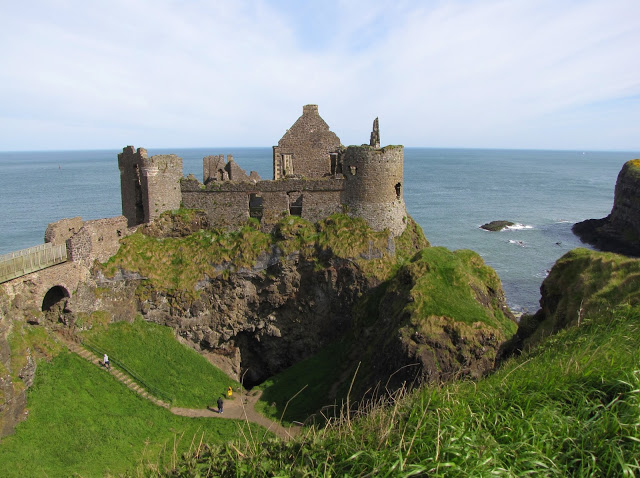All photos by Renée DeVoe Mertz, May 26, 2013.
Author: Renée
Ross Errilly Friary, County Galway, Republic of Ireland

Ross Errilly Friary is probably the best preserved Franciscan monastery in Ireland; it is also one of the largest. Yet the site is curiously absent from many guidebooks and harder to find than more tourist-ready destinations. As a result, we found it gloriously uncrowded.
Founded in 1351, the monastery was enlarged in 1498 and ultimately abandoned in 1753. Now left largely unguarded, the remains sit beside a slim stream amongst sprawling cattle pastures.
The central cloister demarcates the boundaries of the more private spaces of the monks’ former living quarters from the church and bell tower. The domestic sections include a bakery, kitchen (complete with a water tank for live fish), dining hall, and, on the upper floors, dormitories. The presence of more recent graves throughout the building suggests that the entire structure is still on consecrated ground.
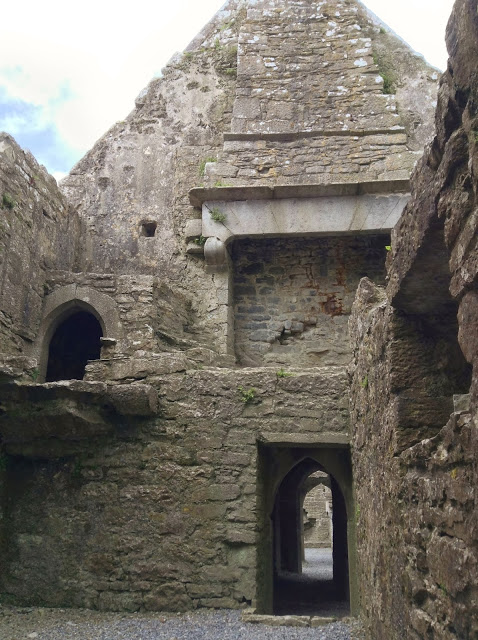
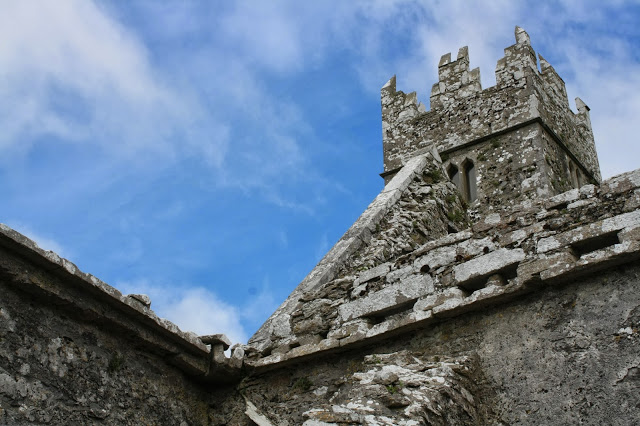
Photos by Renée DeVoe Mertz, May 26, 2013, unless otherwise stated.
Carrowmore Megalithic Cemetery, Sligo, County Sligo, Republic of Ireland
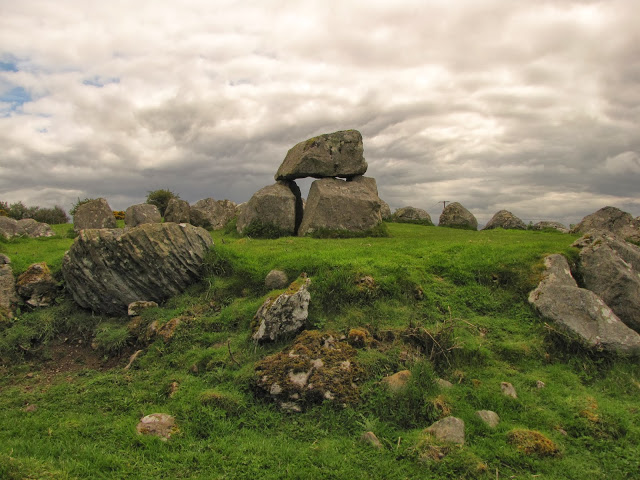
Although less well-known than Brú na Bóinne and the tombs of Knowth or Newgrange, Carrowmore is home to one of the largest Stone Age cemeteries in Europe. It was once the greatest collection of passage tombs and dolmens in Ireland, but quarrying has destroyed much of the original site and many of the 40 or so remaining tombs are on private land. Even so, a walk through rolling fields punctuated with megalithic graves is impressive, particularly when the weather cooperates. And, because it is less popular, visitors have much more freedom to wander and explore at Carrowmore than at Brú na Bóinne.
The site is divided by a small road, but both sides are accessible with the same ticket from the visitors’ center. The north side also provides a clear view of the legendary tomb of Queen Maeve [Medbh or Medb], the enormous, unexcavated cairn which sits atop Knocknarea mountain about 2.5 miles west of Carrowmore.
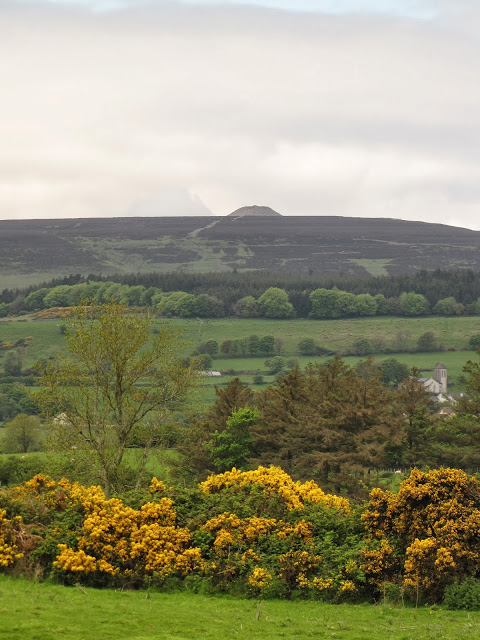
All photos by Renée DeVoe Mertz, May 26, 2013.
Sligo Friary, Sligo, County Sligo, Republic of Ireland
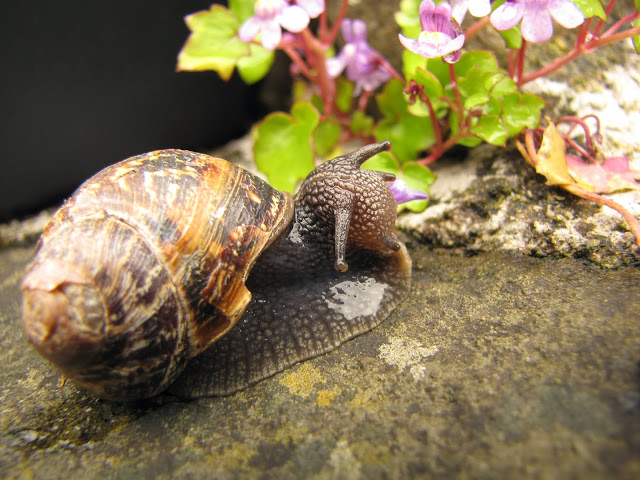
Back in the Republic of Ireland, we decided to call it a day and spend the night in the port town of Sligo (Sligeach), which Wikipedia tells me is the most populous area of Sligo County. It is also the setting for Sebastian Barry’s bleak but beautiful novel, The Secret Scripture, which relates the history of 20th century Ireland through the life of a nearly 100-year-old mental patient.
Despite Barry’s less-than-complimentary depiction of Sligo as a town defined by its harsh weather, closed minds, and divided politics, we found the people friendly and the city center, perched along the River Garavogue, lovely. It was also surprisingly popular, and we had to try several B&Bs before we could find one with a free room.
Most places were closed by the time we settled-in on Saturday evening, so we decided to wait for the friary to open before leaving in the morning. As a result, we were the first people there and had the site almost entirely to ourselves for the duration of our visit.
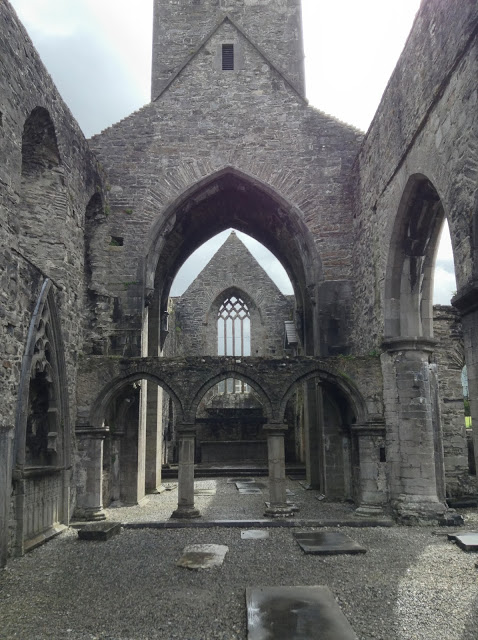
Although popularly known as Sligo Abbey, the monastic ruins near the town’s center are technically the remnants of a Dominican friary. The terminological slippage is quite common—most “abbeys” in Ireland are in fact friaries—and quite understandable, as the two types of structures are nearly interchangeable in both function and appearance. The most basic difference is simply that monks (and abbots) lived in abbeys, whereas friars lived in friaries. Because a monk’s lifestyle was generally private—focused on personal prayer and meditation—abbeys tended to be closed to the broader public. Friars, on the other hand, went on preaching pilgrimages and encouraged their communities to worship in their churches. Architecturally speaking, the differences are even more subtle. Friaries usually have tall, narrow bell towers, while an abbey’s tower is relatively short and broad.
Sligo’s friary was founded in c. 1253 by Maurice Fitzgerald when the town was still a Norman settlement. Some of this early building survives, although much of the friary was rebuilt in the 15th century. Its most unusual aspects include a 15th century rood screen, two elaborate tomb monuments, and the only remaining sculpted stone altar in Ireland.
Although the altar is probably the most significant feature of the site, we were even more taken with the local Gastropods, particularly the large and rather weathered specimen we still affectionately refer to as “the Sligo Snail.” Perhaps the most expressive invertebrate I’ve met, we watched him/her devour flowers for at least a quarter of an hour. If you’ve never seen a snail eat, I recommend checking-out Josh’s time-lapse of the process. It’s kind of adorable.
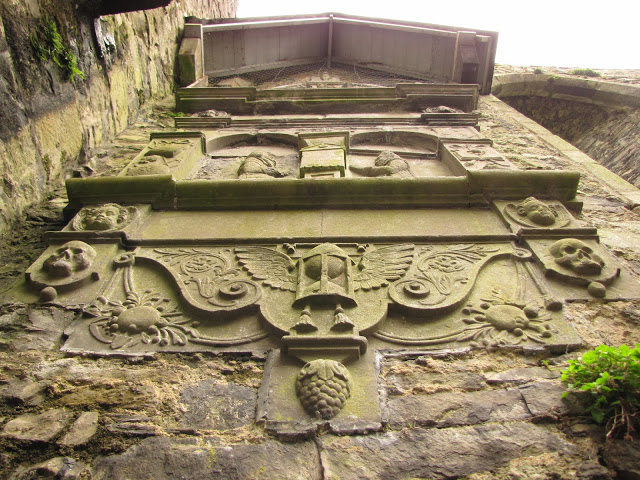
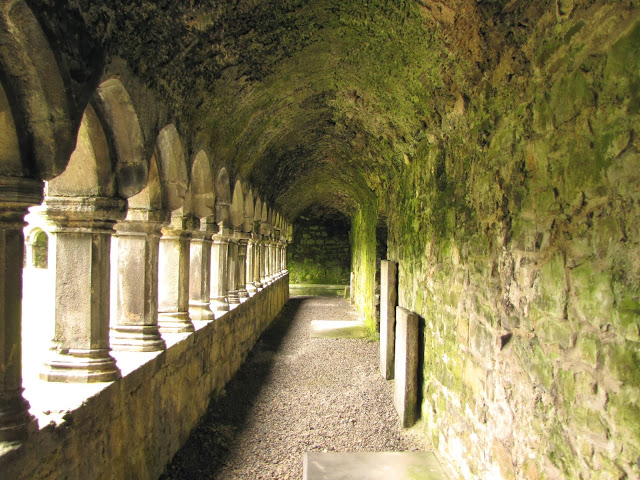
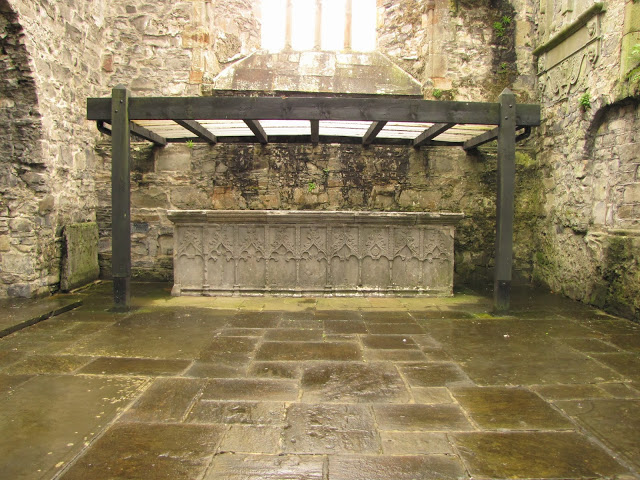
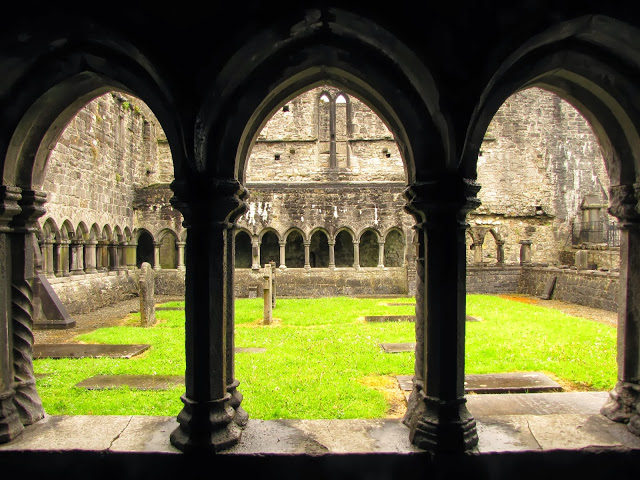
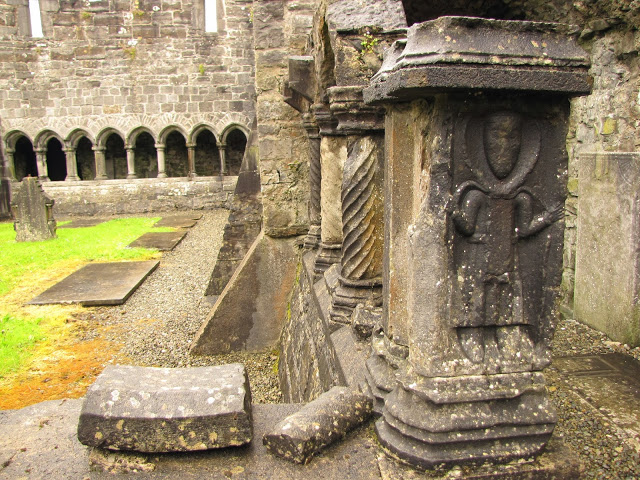
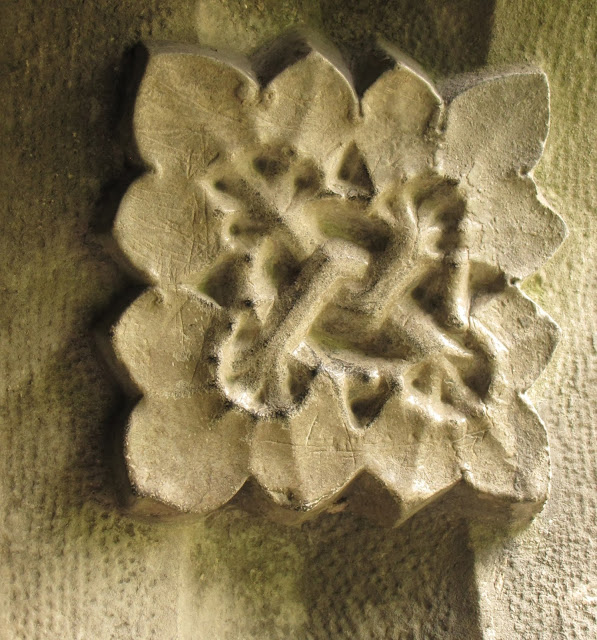
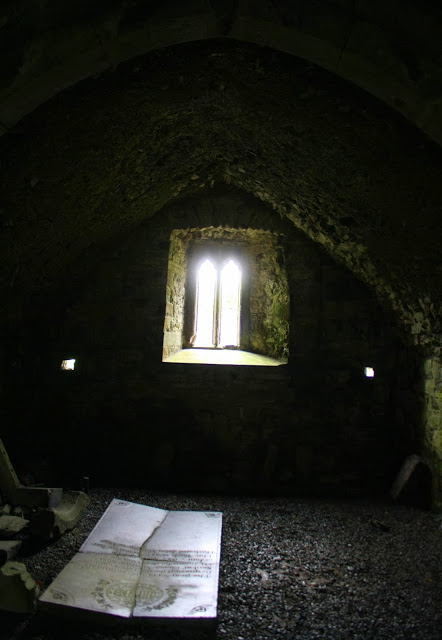
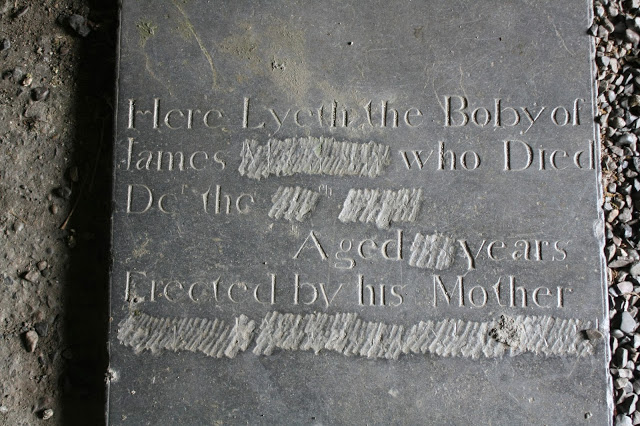
Unless otherwise stated, all photos by Renée DeVoe Mertz, May 26, 2013.
Venice, Biennale 2013, part 2
Reyfad Rock Art, Boho, County Fermanagh, Northern Ireland
With no signage for either the site or the landmarks leading up to it, the Neolitihic and Iron Age stones in Boho are easy to miss and difficult to find. Predating the megalithic art at Newgrange and Knowth by as much as 2000 years, the site is also a great stop for those who prefer their artifacts in situ and enjoy some challenge in their travels. For everyone else—particularly those short on time or who would prefer a bigger pay-off for less effort—the National Museum of Archaeology in Dublin has a fine collection of prehistoric art from the island.
We never would have found our destination without the directions posted by Jim Dempsey at Megalithic Ireland. Even with Dempsey’s helpful hints, we came very close to giving up the chase after realizing that the fields containing the megaliths were covered in stony outcroppings, several of which seemed to be possible candidates for the particular rocks we were searching for. However, having spent hours trying to locate the site, including some tense minutes driving up and then backing down the long, rough, single-lane road that serves as the only access to the area, we finally decided to park, find a way through a low wire fence, and wander towards the shiniest, flattest, most promising cluster of stones.
To our surprise, our series of hunches and hopes had in fact led us to our destination.
Walking around pasture land without permission is an expected activity in Ireland, but it still comes with its potential dangers, particularly from the livestock who (fairly) view tourists as trespassers on their territory.
After finishing up and remembering our last encounter with cattle, I decided to wait on the other side of the fence while Josh continued taking pictures. From this higher vantage point, I noticed a lone black cow moving stealthily towards Josh, watching him and stepping forward while his back was turned, then grazing disinterestedly whenever he turned around.
Freakin’ Irish ninja cows.
I encouraged Josh to finish up, and we were once again on our way towards the border of the two Irelands.
All photos by Renée DeVoe Mertz, May 25, 2013.
Venice, Biennale 2013, part 1
Drumskinny Stone Circle, Cairn, and Alignment, County Fermanagh, Northern Ireland

Had we followed our original plan, the next stop on our trip would have been White Island, home of another set of enigmatic figures set into the wall of an early Christian church. Unlike Boa Island, White Island is only reachable by ferry or rented boat, and we had scheduled our itinerary around the fact that in May the ferry only ran on weekends.
Unfortunately, as we discovered from another American couple who arrived at Caldragh Graveyard just as we were preparing to leave, the ferry was inexplicably not running that particular weekend and the cost of boat rental was—for us—prohibitive. In compensation, we decided to use our newly found extra time to make more spontaneous stops along our route. And that is how we stumbled across the Drumskinny Stone Circle, Cairn, and Alignment.
Stonehenge may be the world’s most famous stone circle, but it is hardly the only one. Stone circles of various sizes and complexities are scattered throughout the British/Irish Isles. Drumskinny’s example is relatively diminutive, but it has the somewhat unusual feature of being accompanied by a tangential stone alignment and cairn (grave), which together look a bit like a one-armed figure 8.
What made Drumskinny memorable, however, was not the ancient mystery of its design. Ancient mysteries are, after all, everywhere in Ireland.
What made it memorable were the cows.
Without having given it much thought, I have always subscribed to the notion that cows are essentially passive, slightly stupid creatures, whose most dangerous qualities are their occasional skittishness and herd mentality. I must credit the cattle of Northern Ireland with waking me to their potential for creepy, even sly, watchfulness.
Our approach drew the attention of two cows and a calf standing in the adjacent field. Turning their heads in expressionless unison, the triad watched and chewed as we stumbled around the site. The longer it lasted, the more grateful I felt for the rickety fence that demarcated their space from our own and, eventually, for the contained warmth of the car.
Photos by Renée DeVoe Mertz, May 25, 2013, unless otherwise stated.
Caldragh Cemetery, Boa Island, County Fermanagh, Northern Ireland
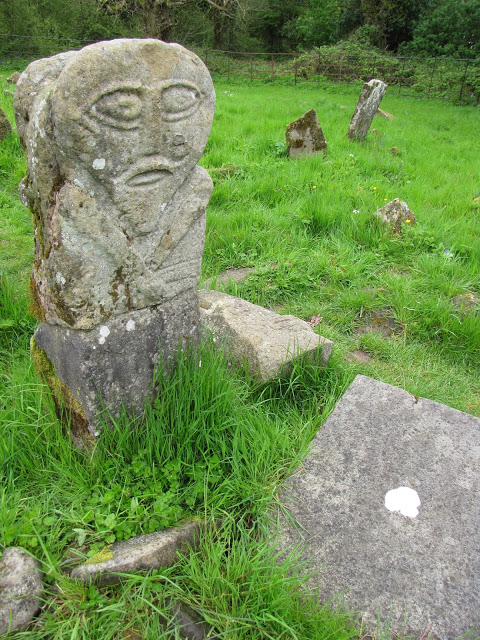
We left Dunluce Castle and the northern coast to begin our descent south and west. Our new route took us off of the “M” motorways—those broad, smoothly paved passages which extend from Dublin and Belfast across the eastern regions—and onto the network of narrow, winding roads that connect the rest of the island. Suddenly, our destinations seemed much further away.
Having swapped the great, straight swathes of pavement for slender, twisting lanes, we were also headed towards quieter and more secluded landmarks near the border of the two Irelands.
Our first stop was Caldragh Cemetery on Boa Island. A spit of earth along the northern edge of Lough Erne (aka, Lake Erne), Boa Island is accessible by car thanks to bridges connecting its central road to the mainland. The island is lovely in and of itself, but the primary draw for tourists is Caldragh Cemetery and its two mysterious inhabitants: the Janus Figure and the Lusty Man.
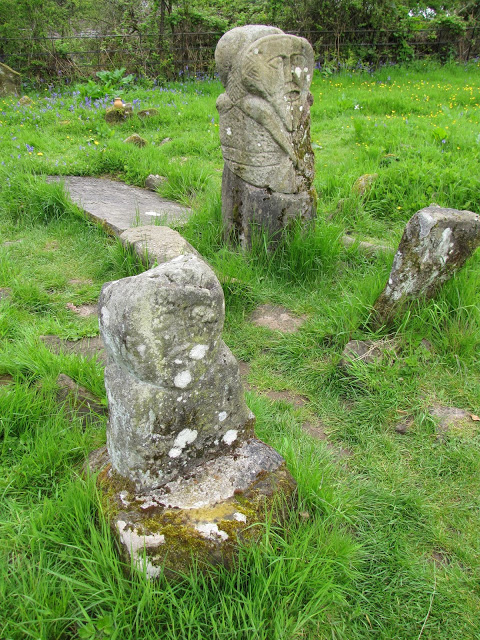
To reach the cemetery, we turned off the main road onto what appeared to be a long, unpaved driveway. The lane terminated after about a mile beside rusting farming equipment and a small footpath. Even on a Saturday afternoon, ours was the only car around.
The site immediately impresses with the sheer lushness of its environment. Gnarled, ancient trees draped in vines encircle the clearing while bright blue, yellow, and white flowers punctuate a fluorescent landscape of broadleaf plants and long, soft grasses. The overall effect is one of a kind of quiet, bountiful life that only cemeteries seem to have.
Consistent with the natural understatedness of the site, the statues are almost indistinguishable from the tombstones around them. From a distance even the Janus Figure–the larger and better preserved of the sculptures–appears to be an only slightly grander grave marker. As its name implies, the Janus Figure (also known as the Boa Island Figure) consists of two back-to-back male faces. Its small, headless torso lies in the grass beside it.
The Lusty Man now sits a few feet away, but was originally discovered in a cemetery on the nearby Lusty Mor Island. It was moved to its current location in 1939. The exact ages, purposes, and identities of the figures are unknown, although both are probably pre-Christian.
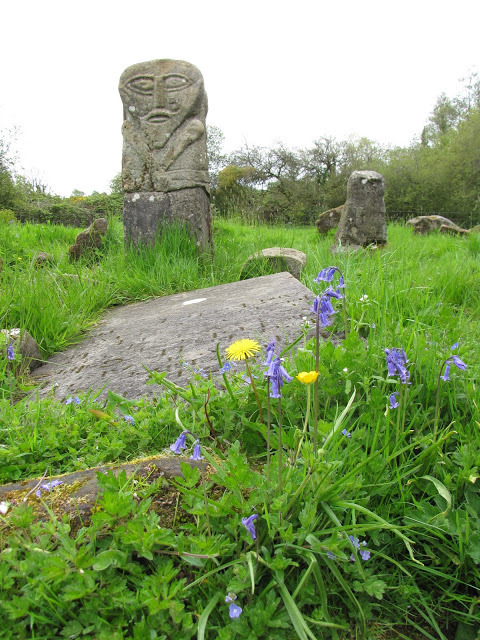
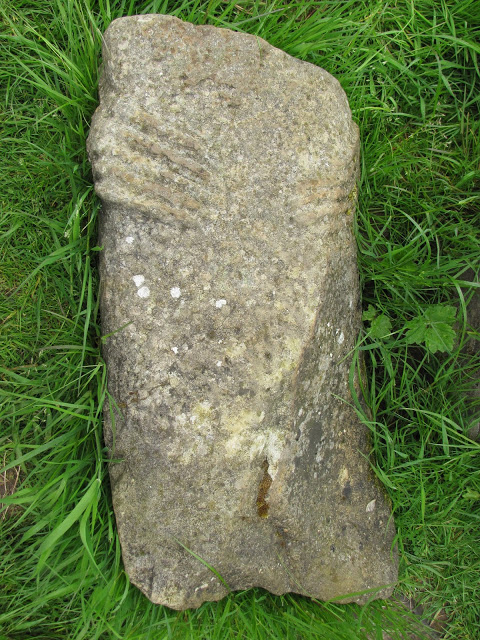
Photos by Renée DeVoe Mertz, May 25, 2013.
Dunluce Castle, Bushmills, County Antrim, Northern Ireland

A few miles west of Giant’s Causeway, the skeletal remains of Dunluce Castle stand perched on a cliff along the North Channel. A deep ravine divides the site into two sections which are linked by a narrow, pedestrian bridge.
The side closest to the road held the stables and guest quarters (and now houses the visitor center), while the second area—with the buildings most precariously balanced over the sea—served as the primary residence.
Access to the buildings is only possible during certain hours and requires a small fee, but a steep, unguarded staircase to the side of the restricted area leads to the lowest point between the two sections. From here, visitors will find impressive views of the ruins and surrounding landscape, and can take a closer look at the small cave beneath the furthest outcropping.

Richard de Burgh or one of his followers probably built the original castle in the 13thcentury on the site of an earlier fort. However, it’s best known as the home of the McDonnells, chiefs of Antrim, who took control of the building after the Battle of Orla in 1565. Randall McDonnell, the second McDonnell lord at Dunluce, was responsible for erecting the manor house within the fortress’s walls. In 1639, part of the castle fell into the sea, taking the kitchen and cooks with it. The buildings were ultimately abandoned in 1690.
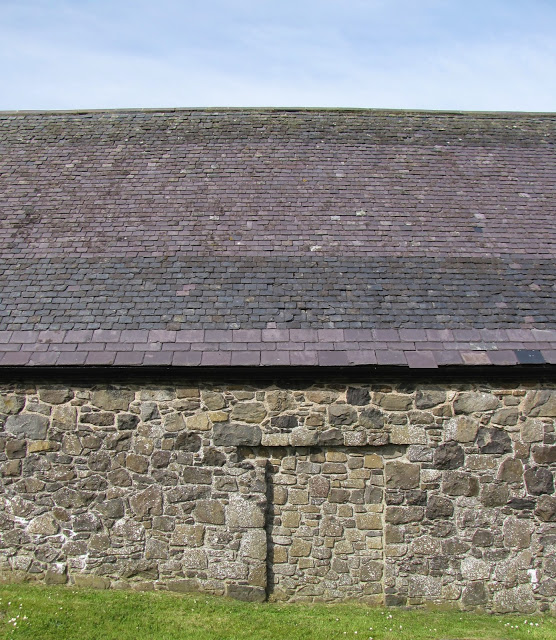
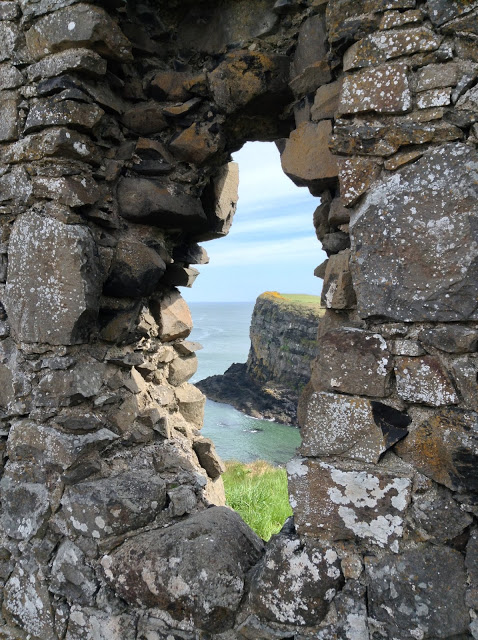
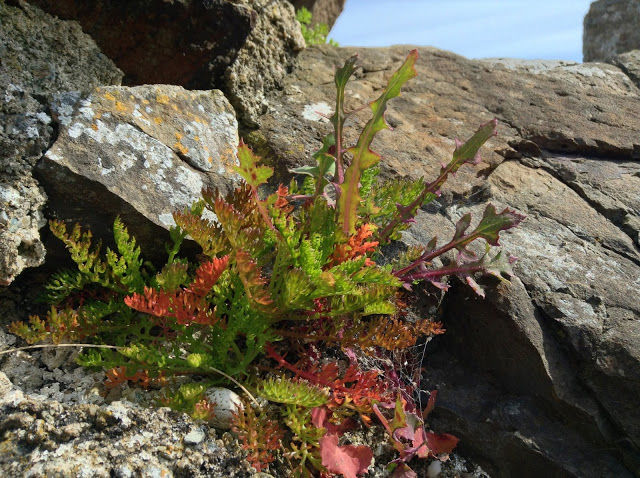
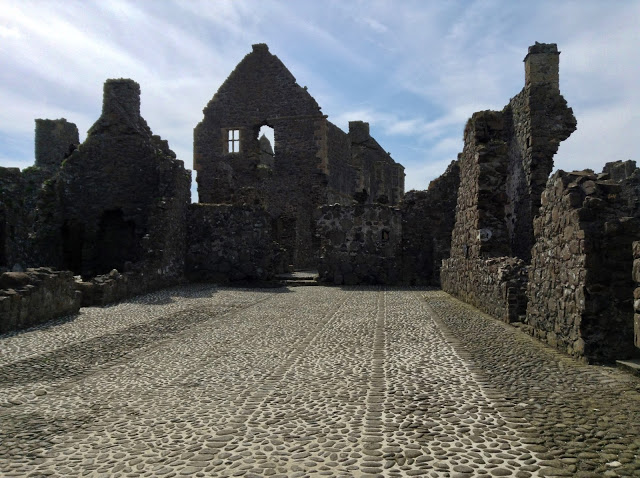
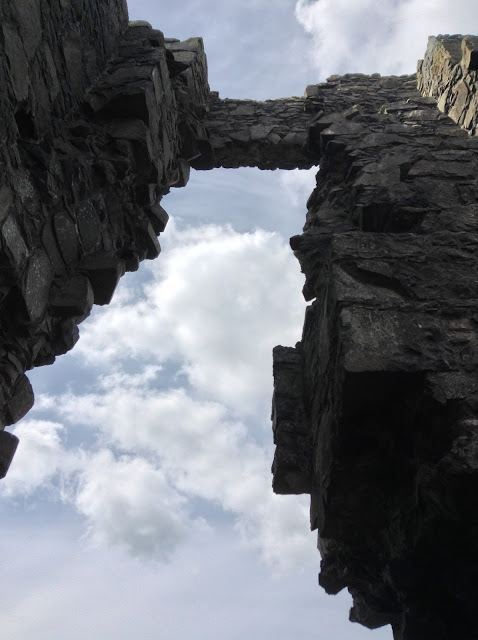
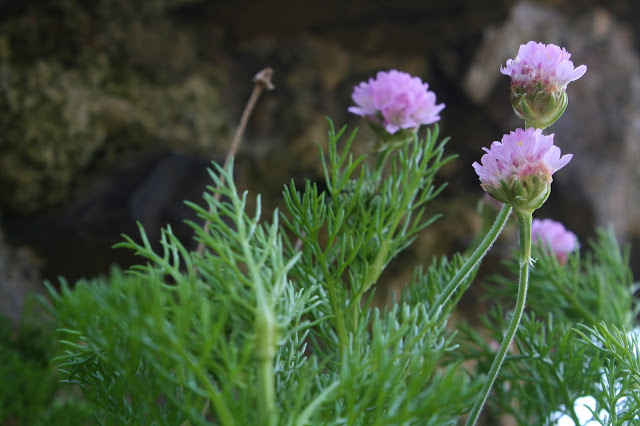
Photos by Renée DeVoe Mertz, May 25, 2013, unless otherwise stated.
